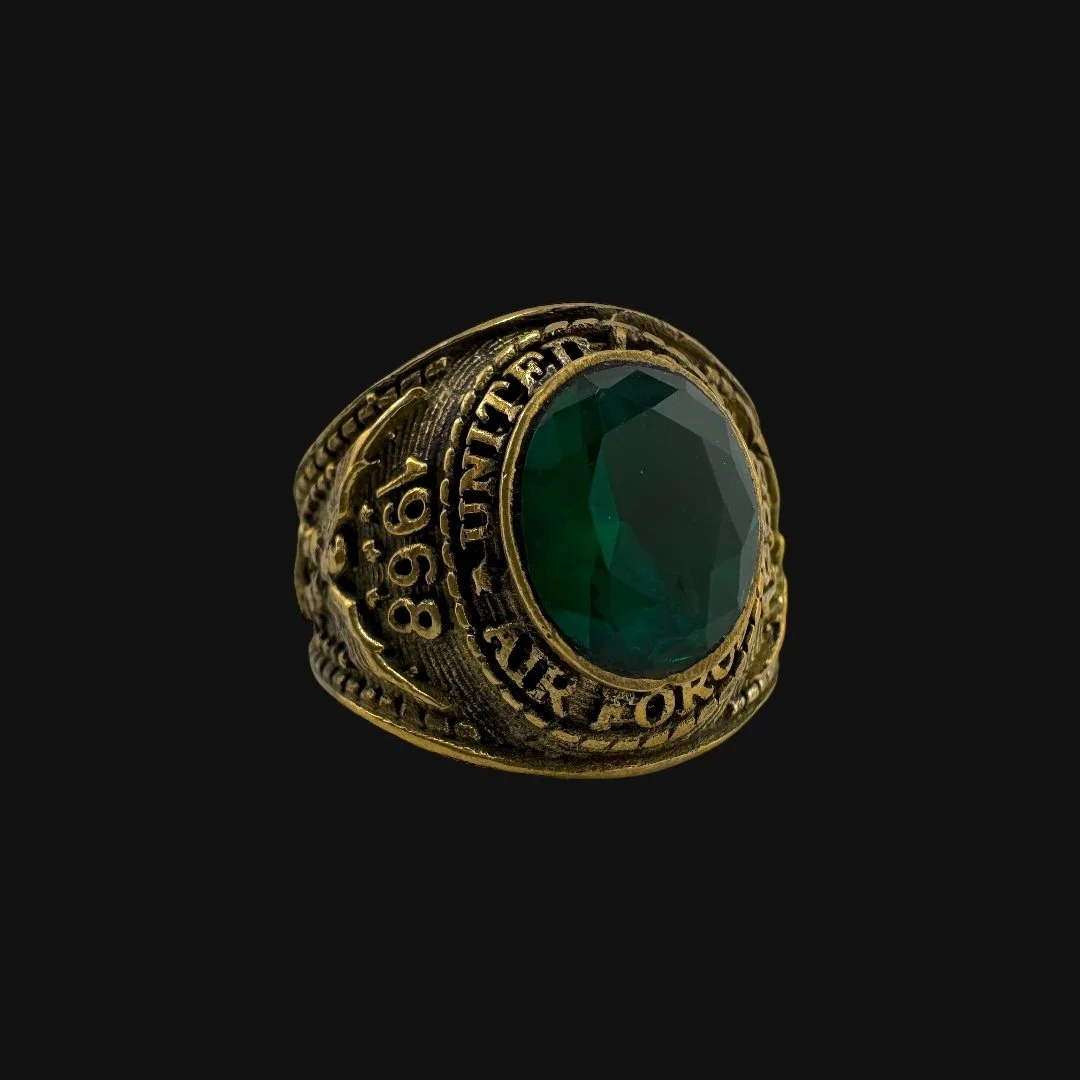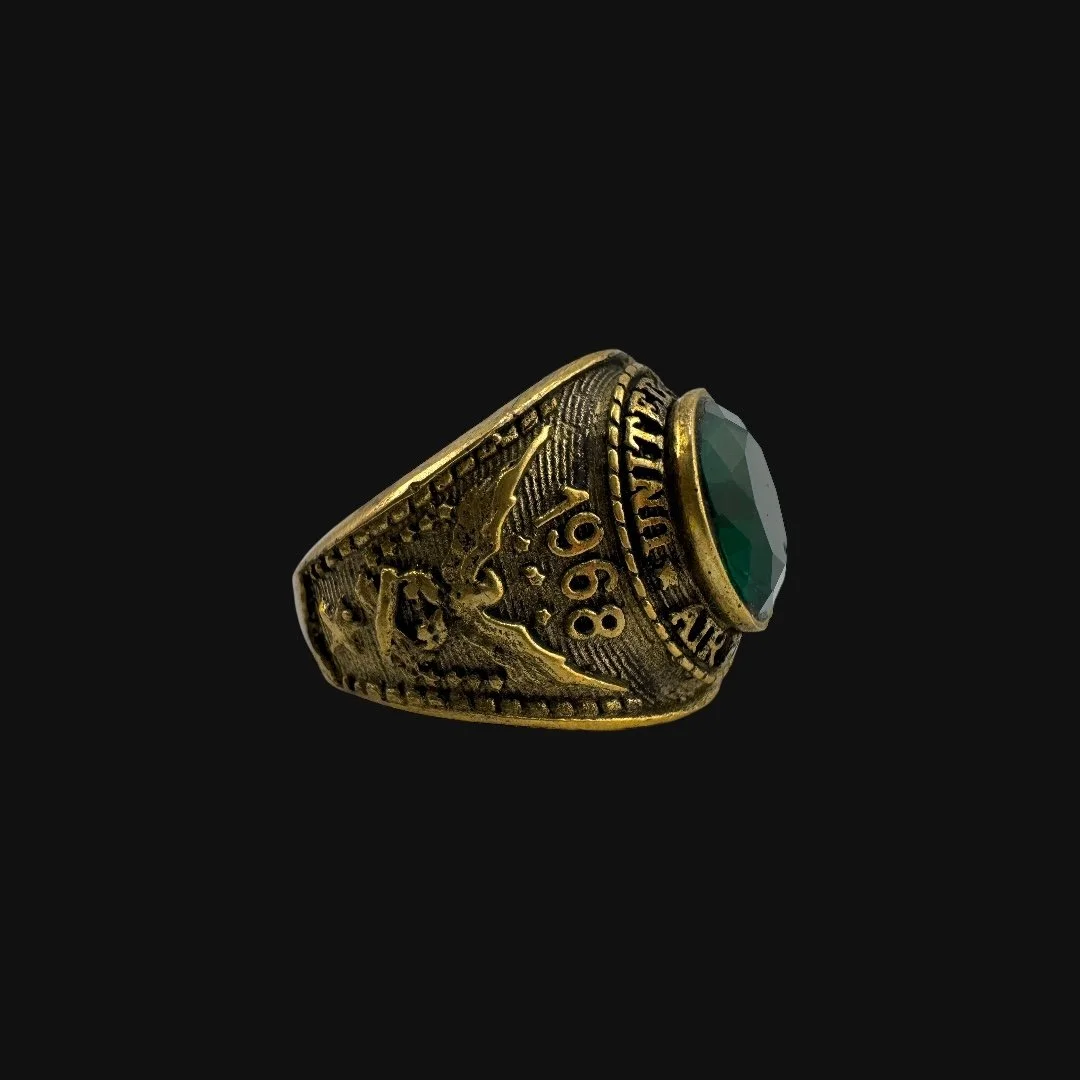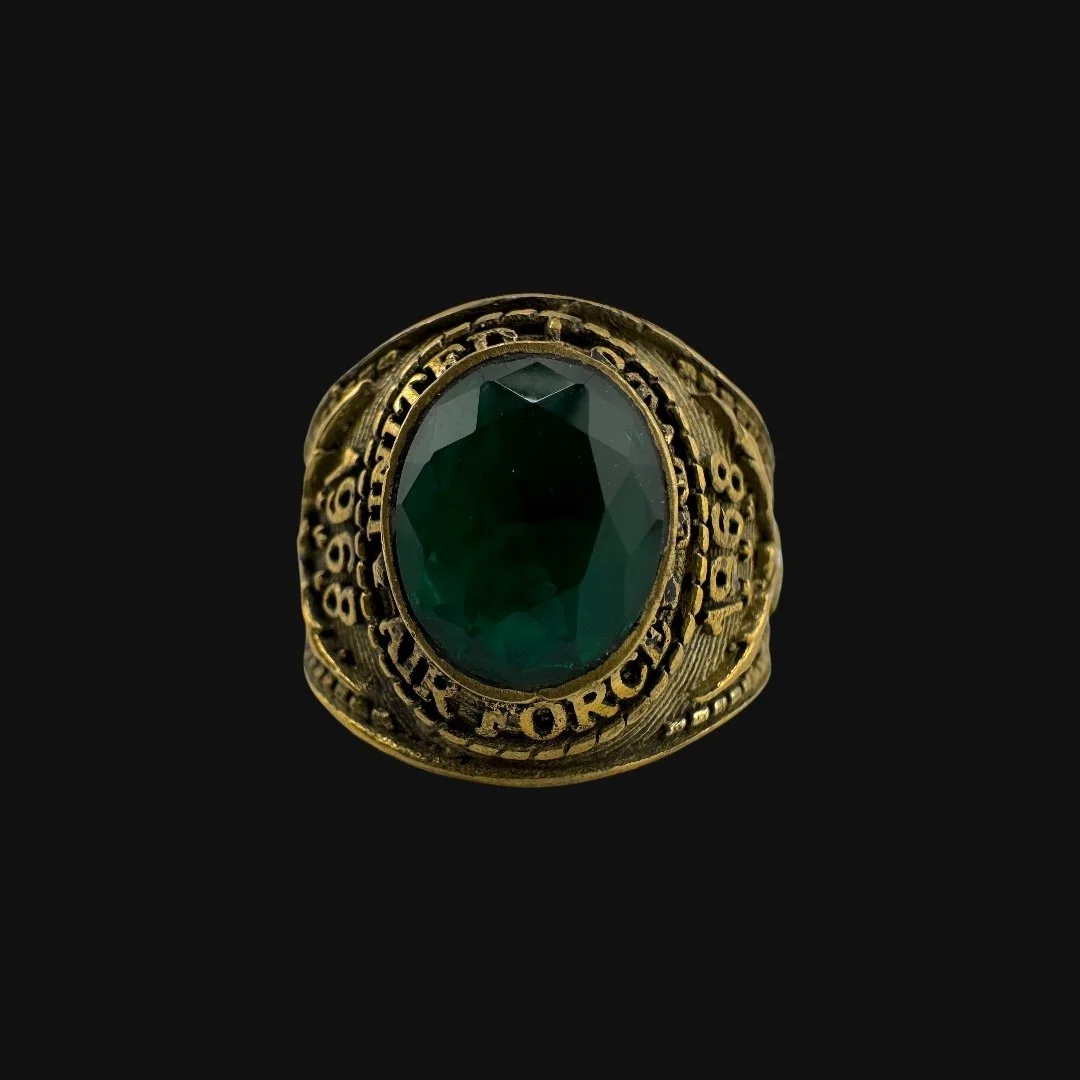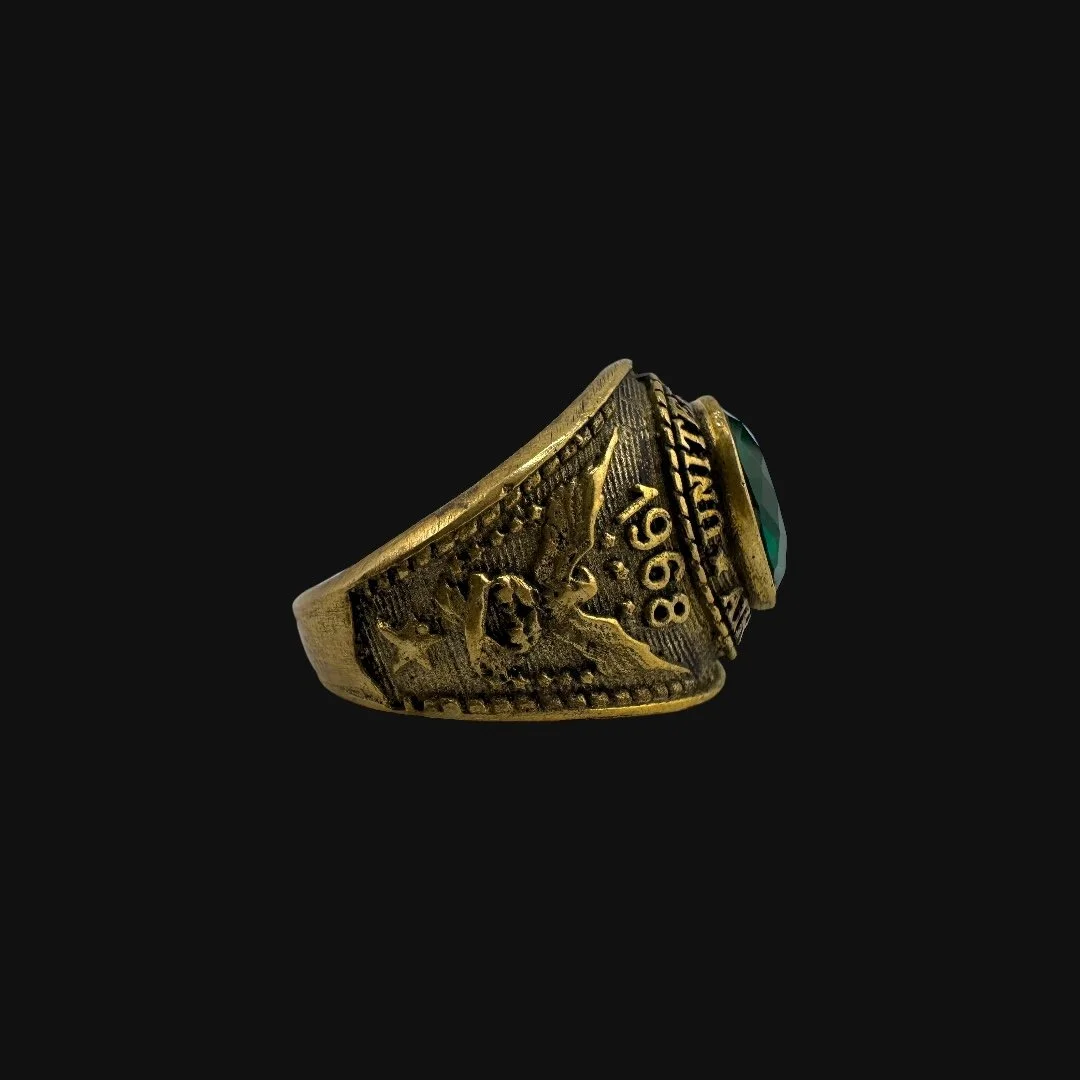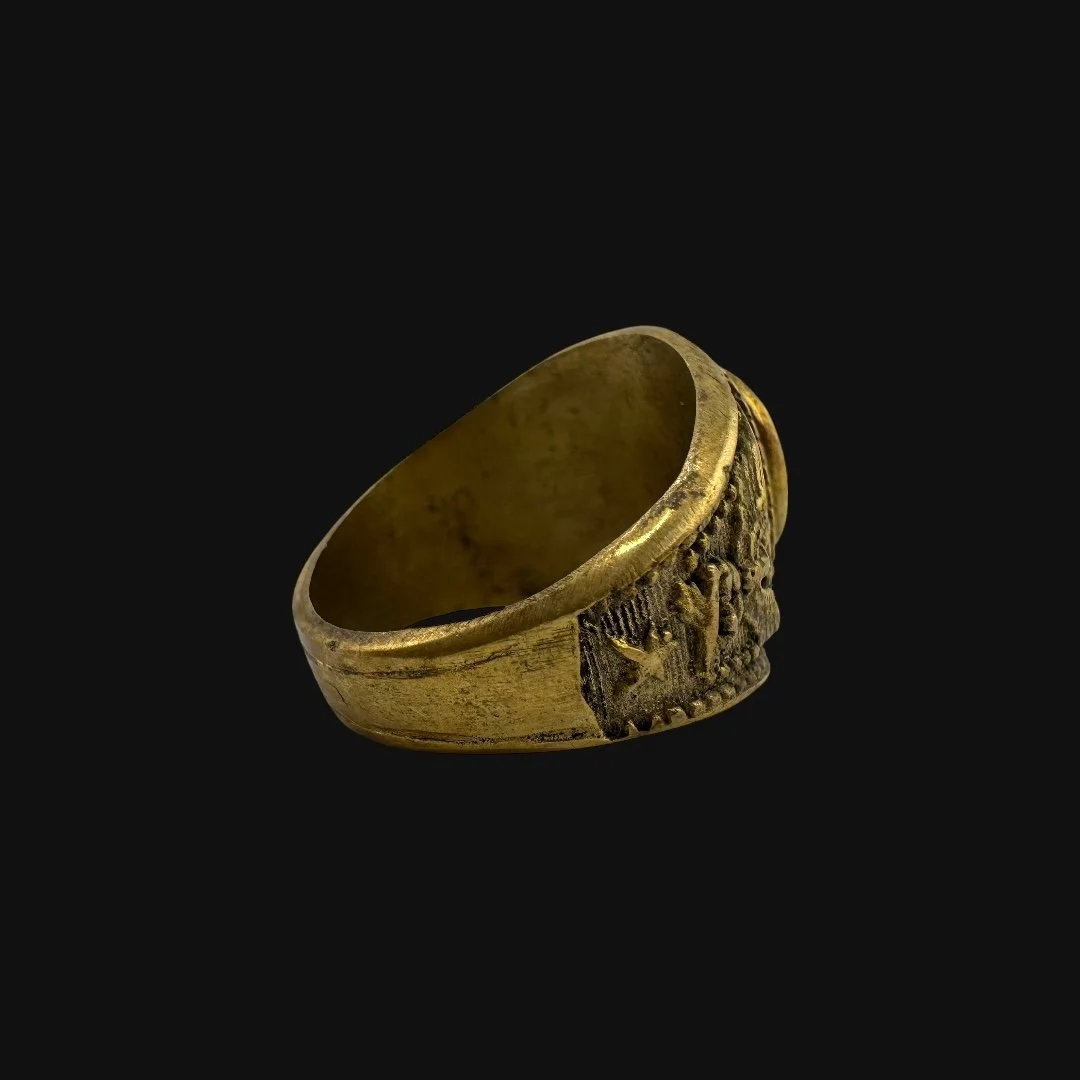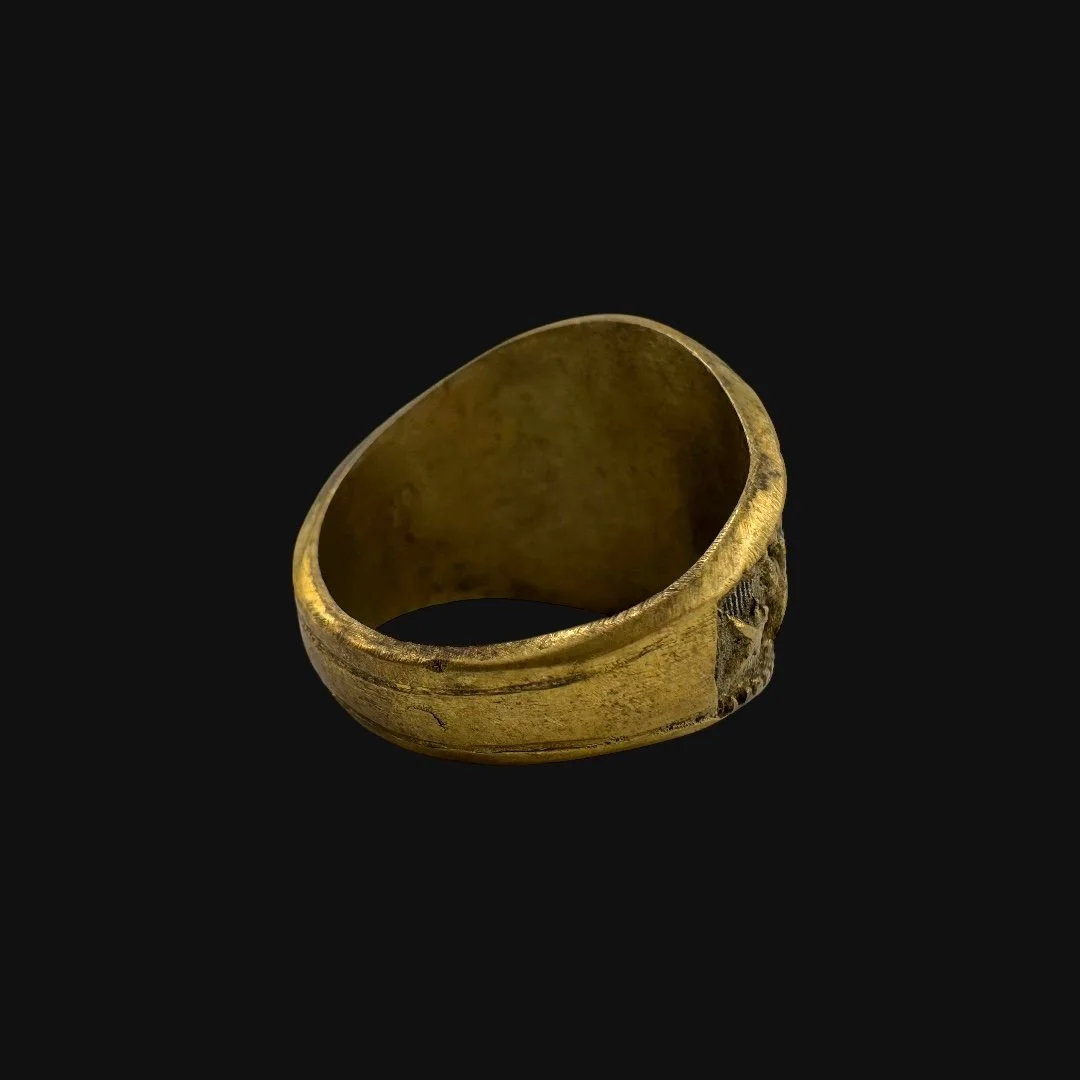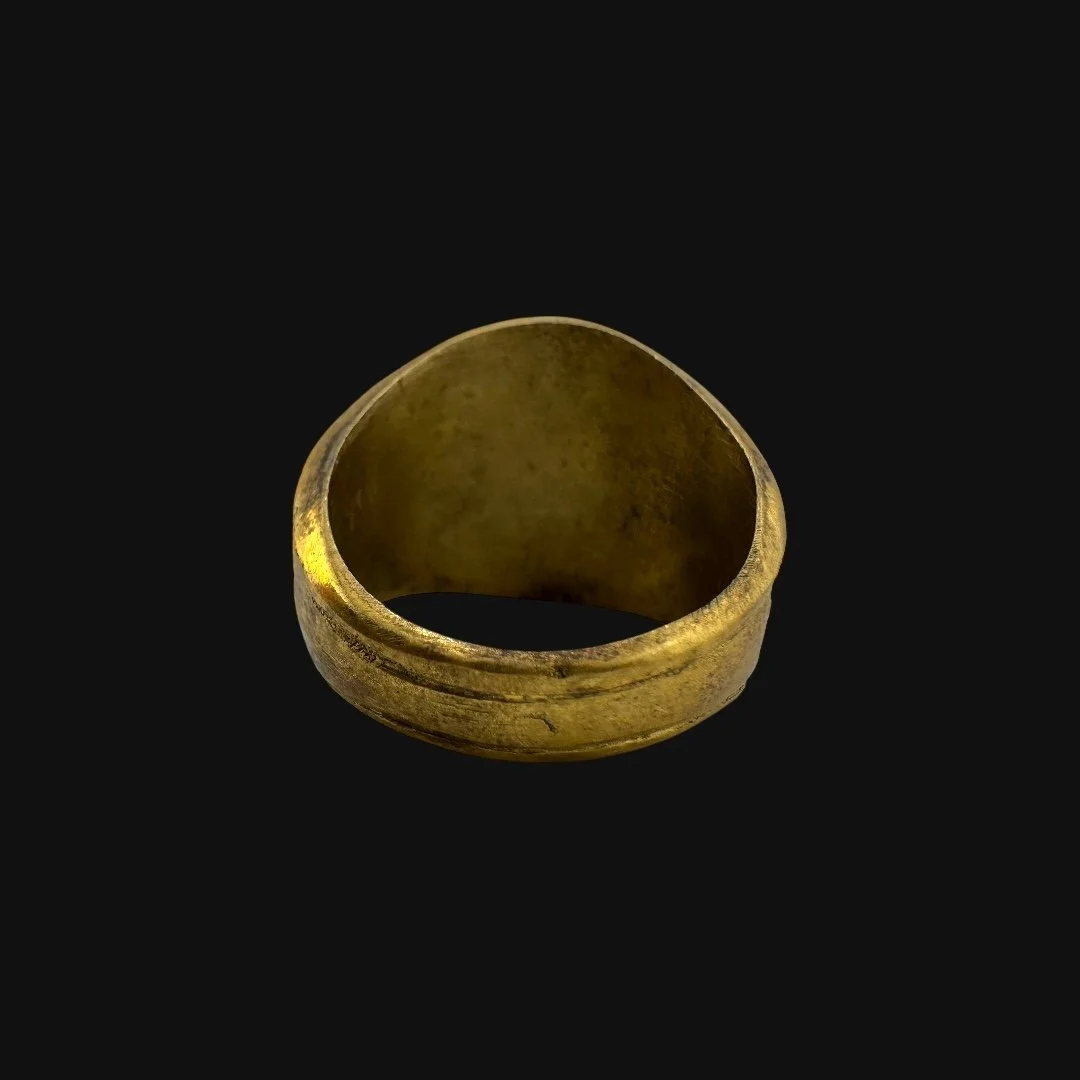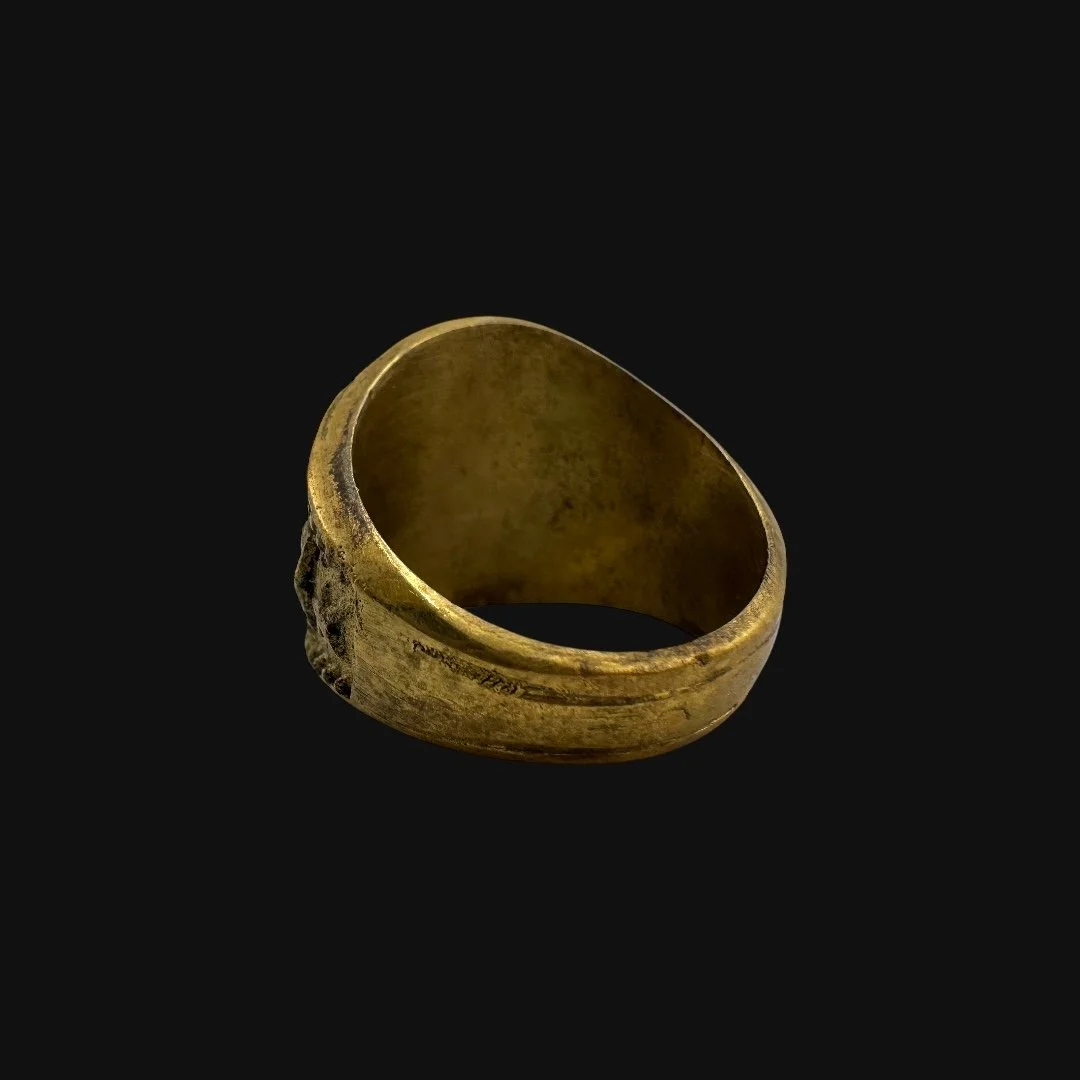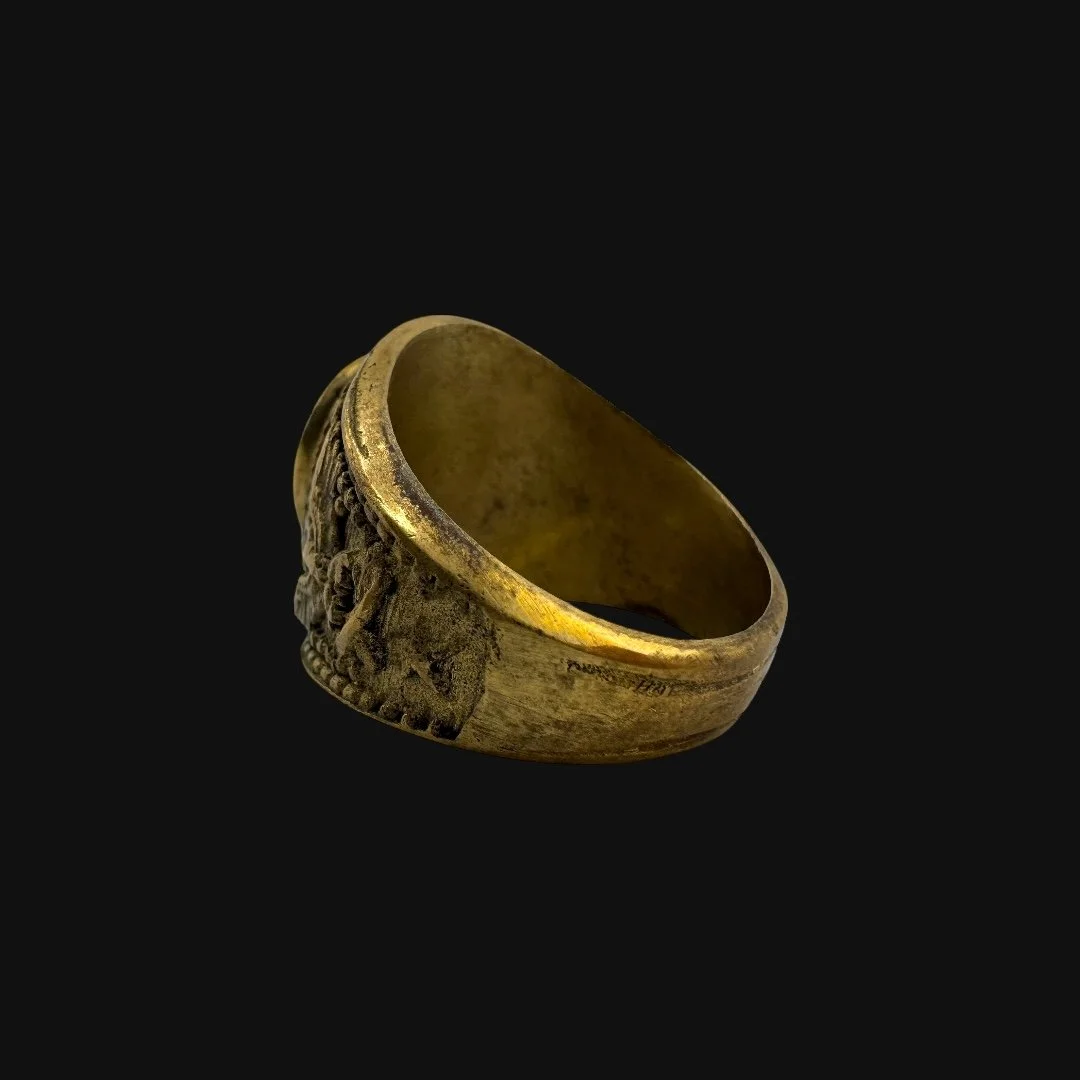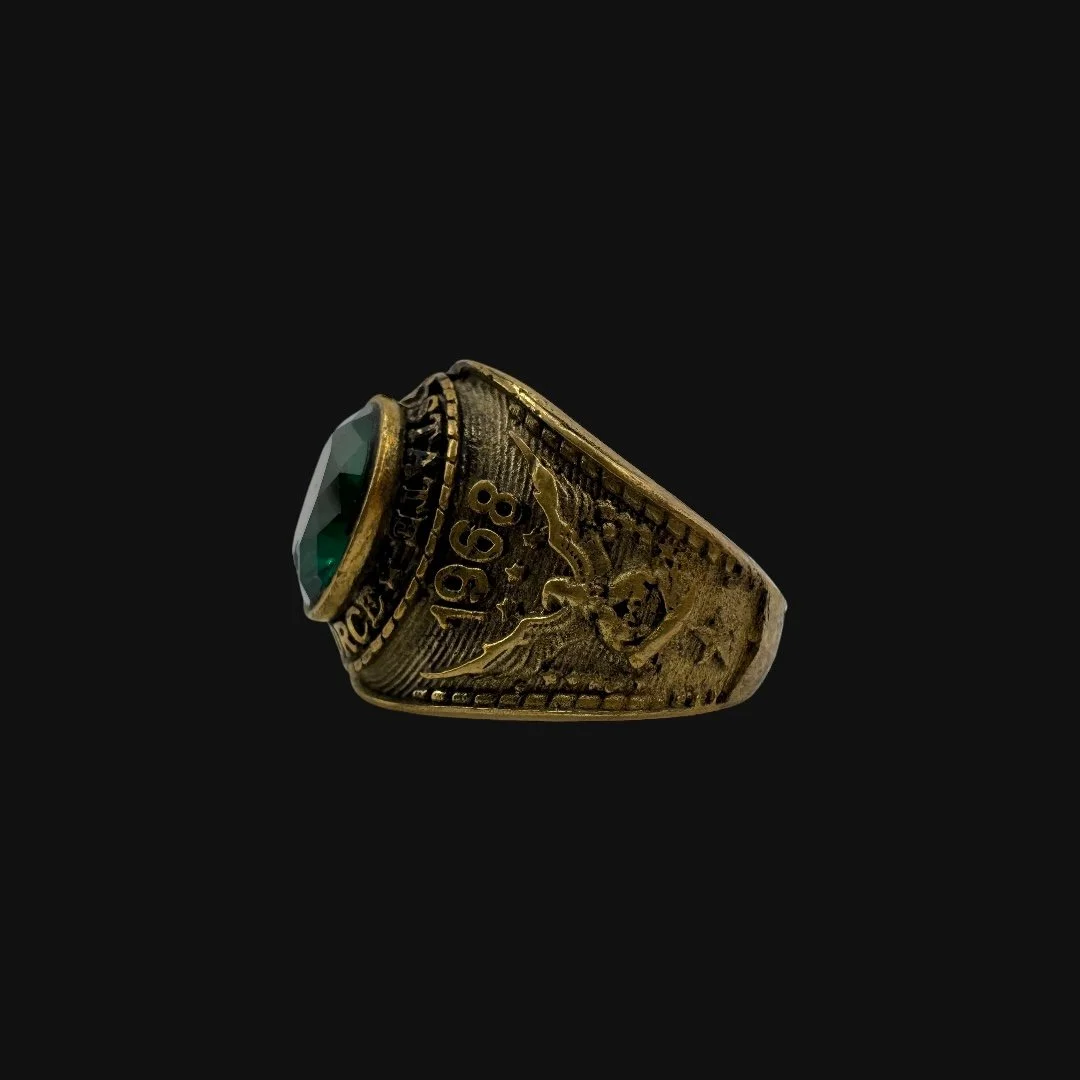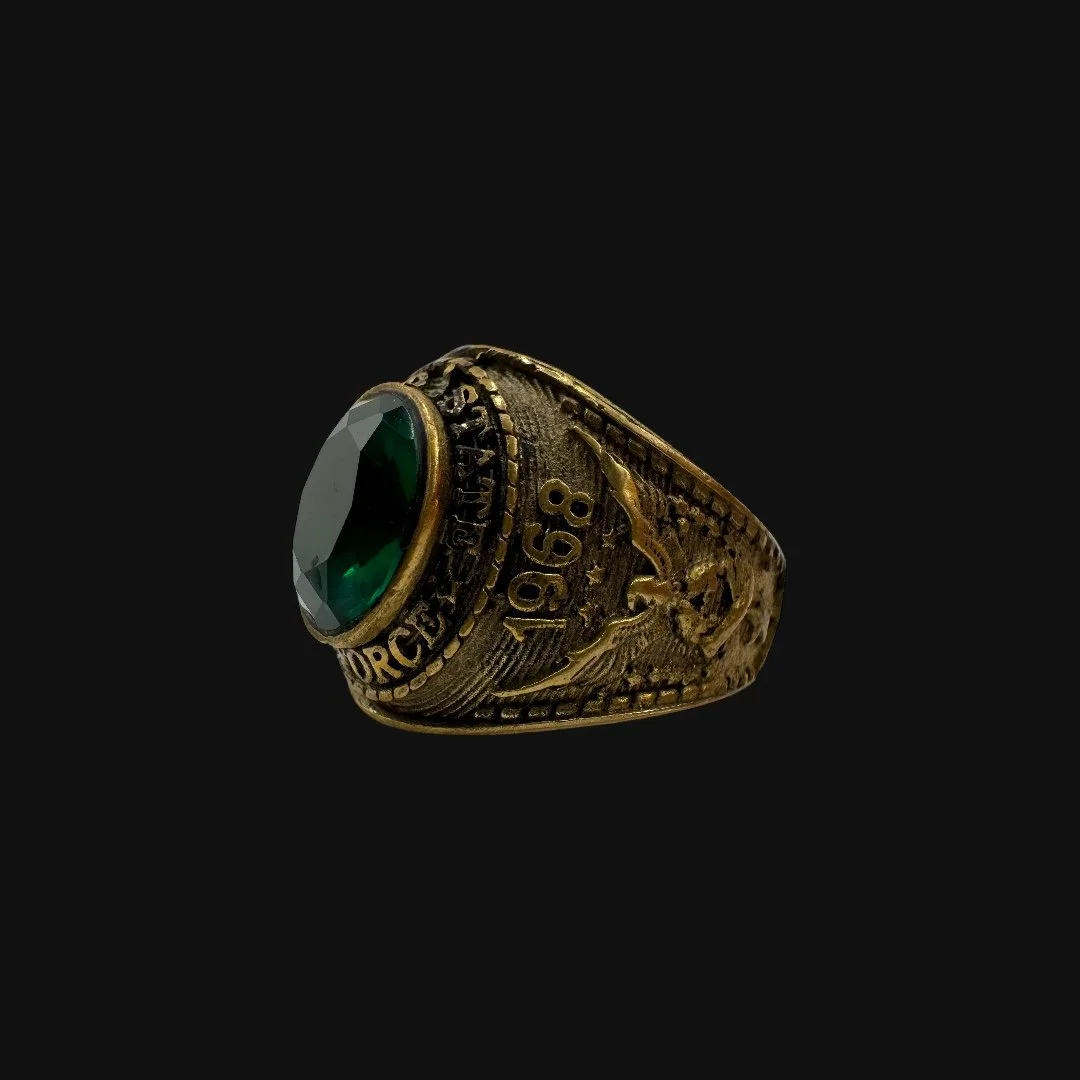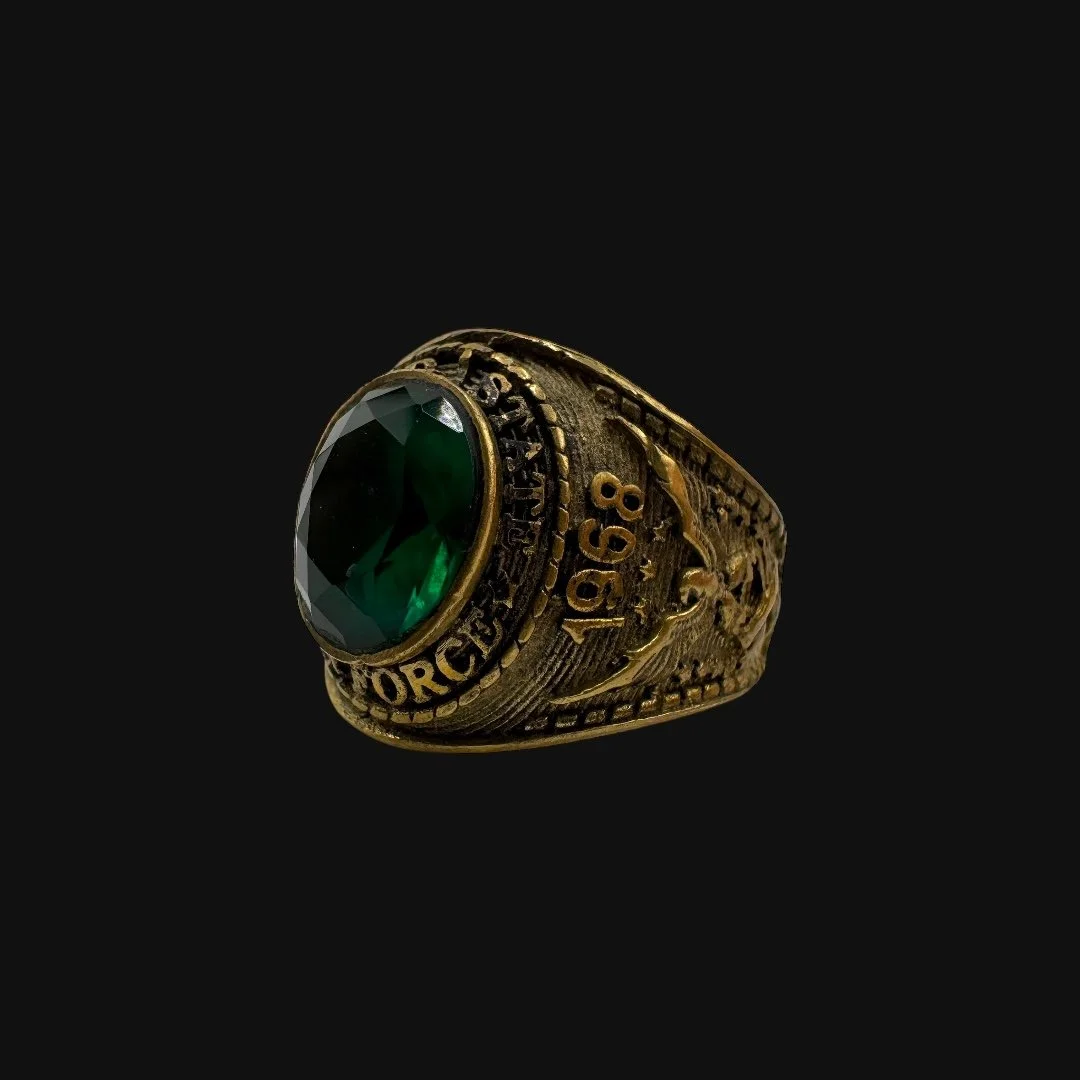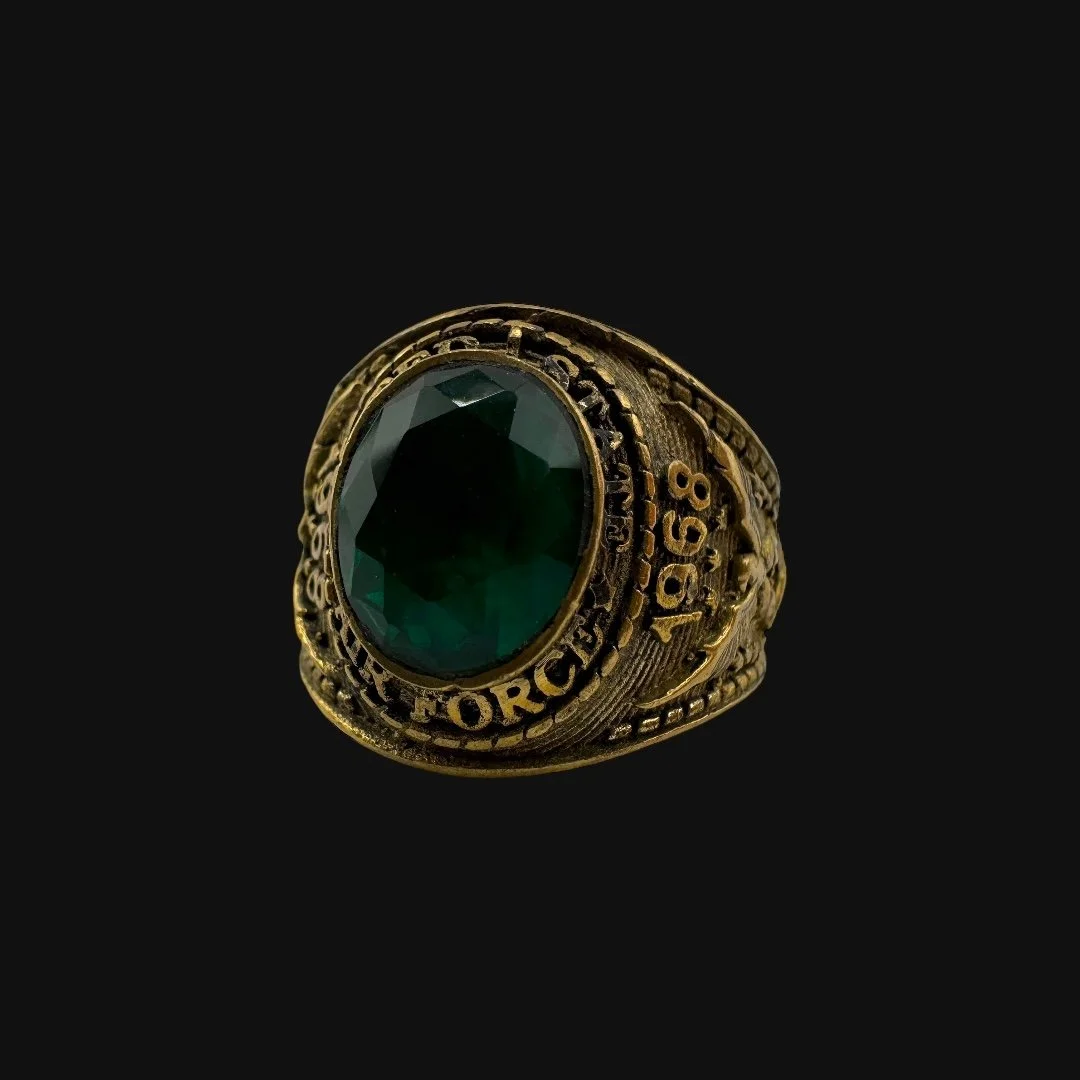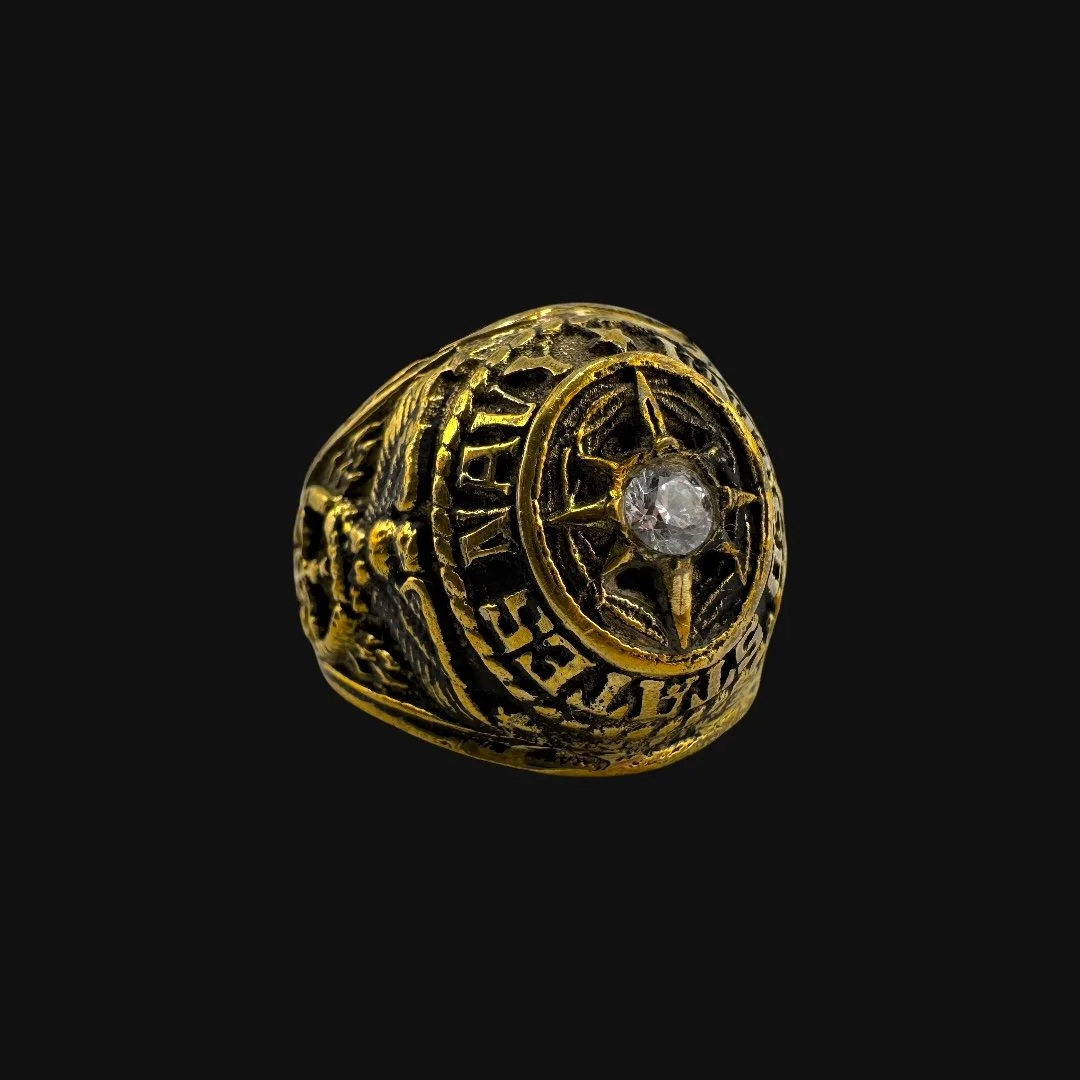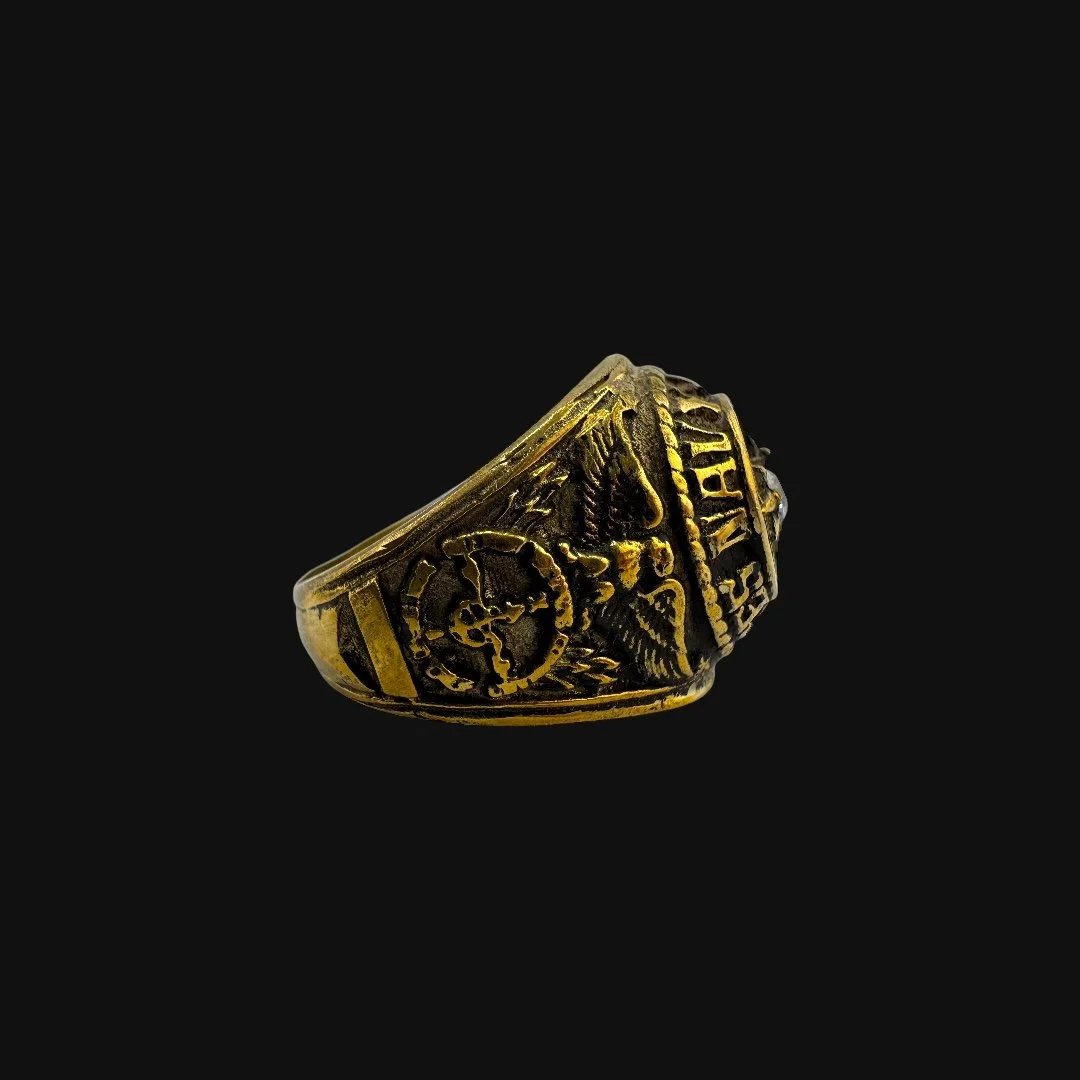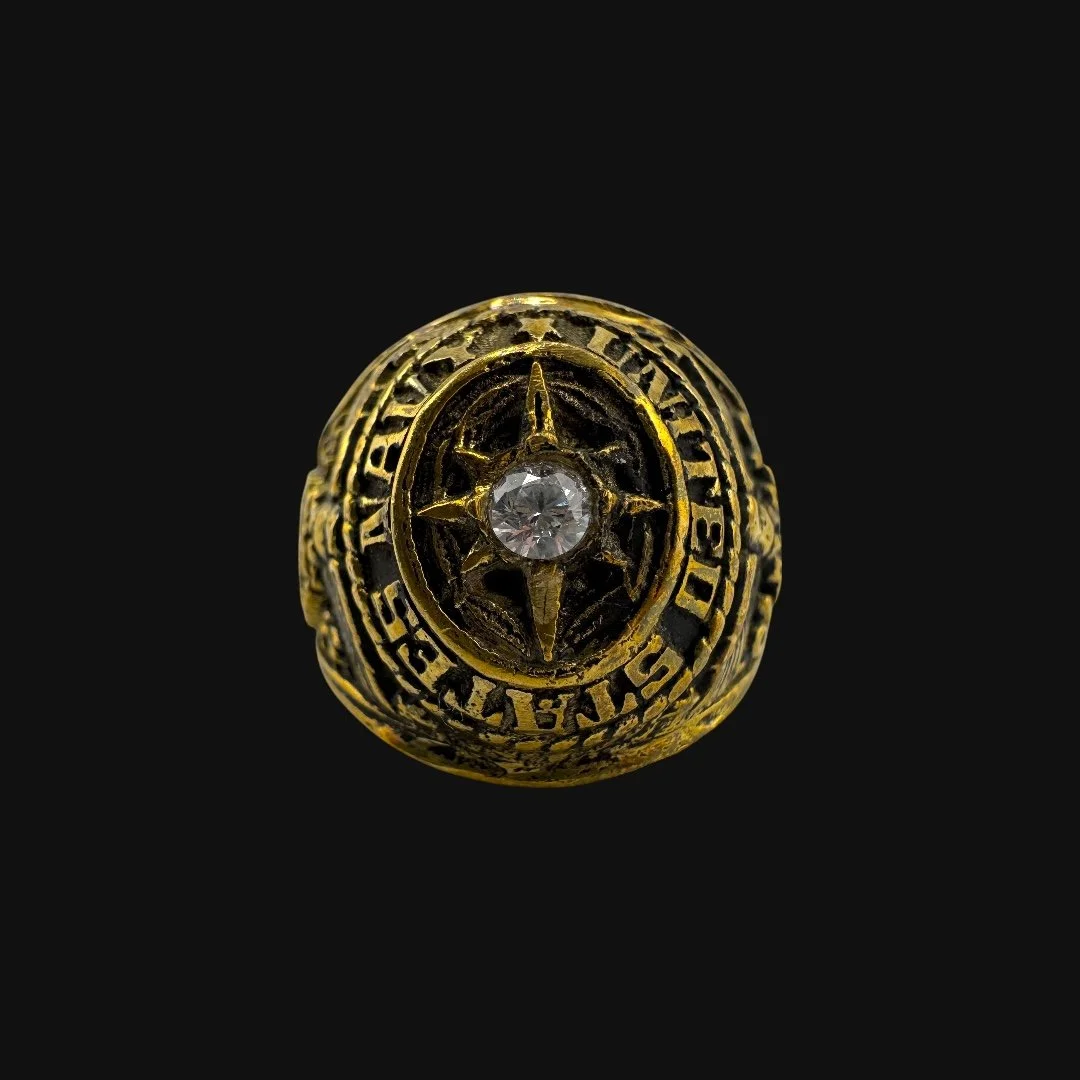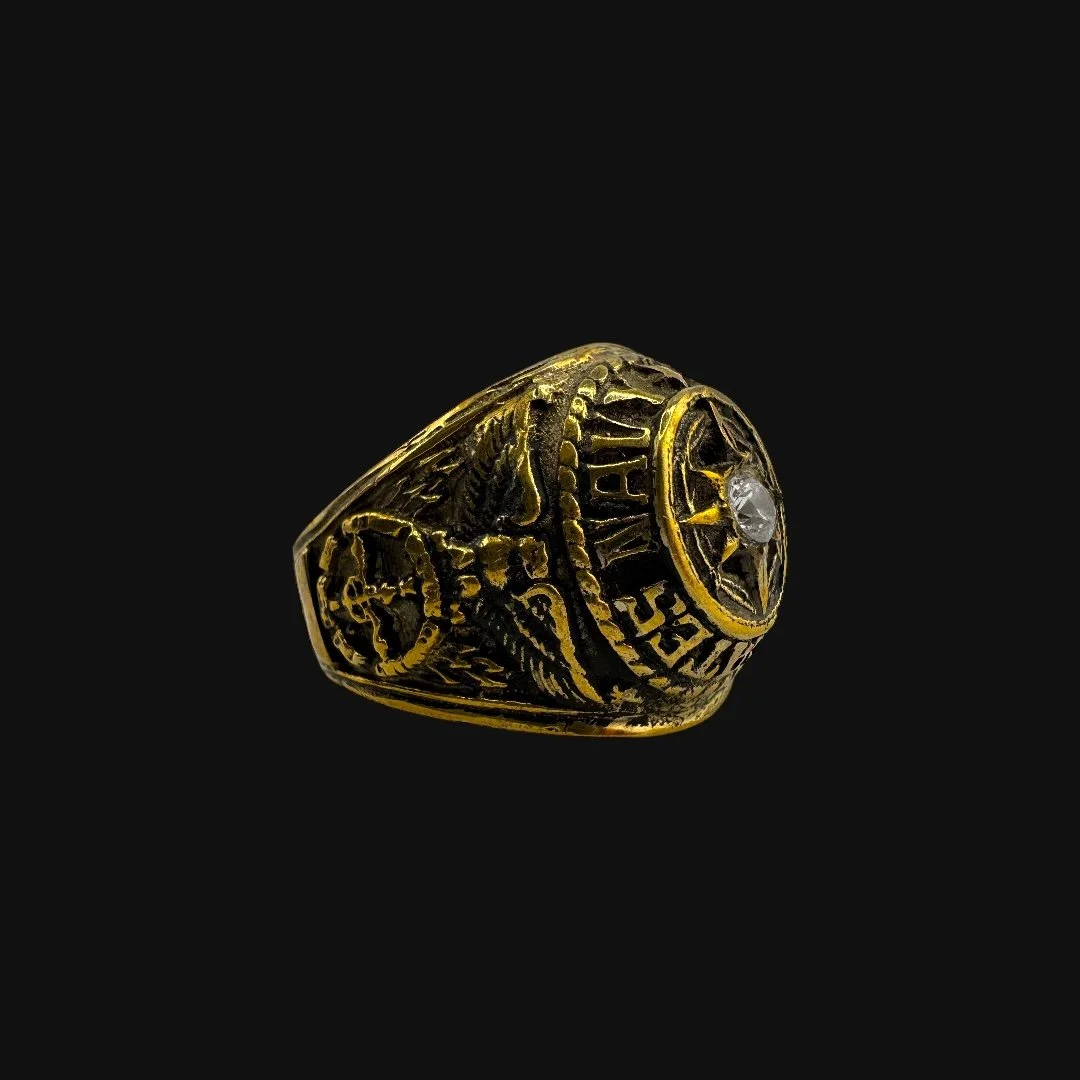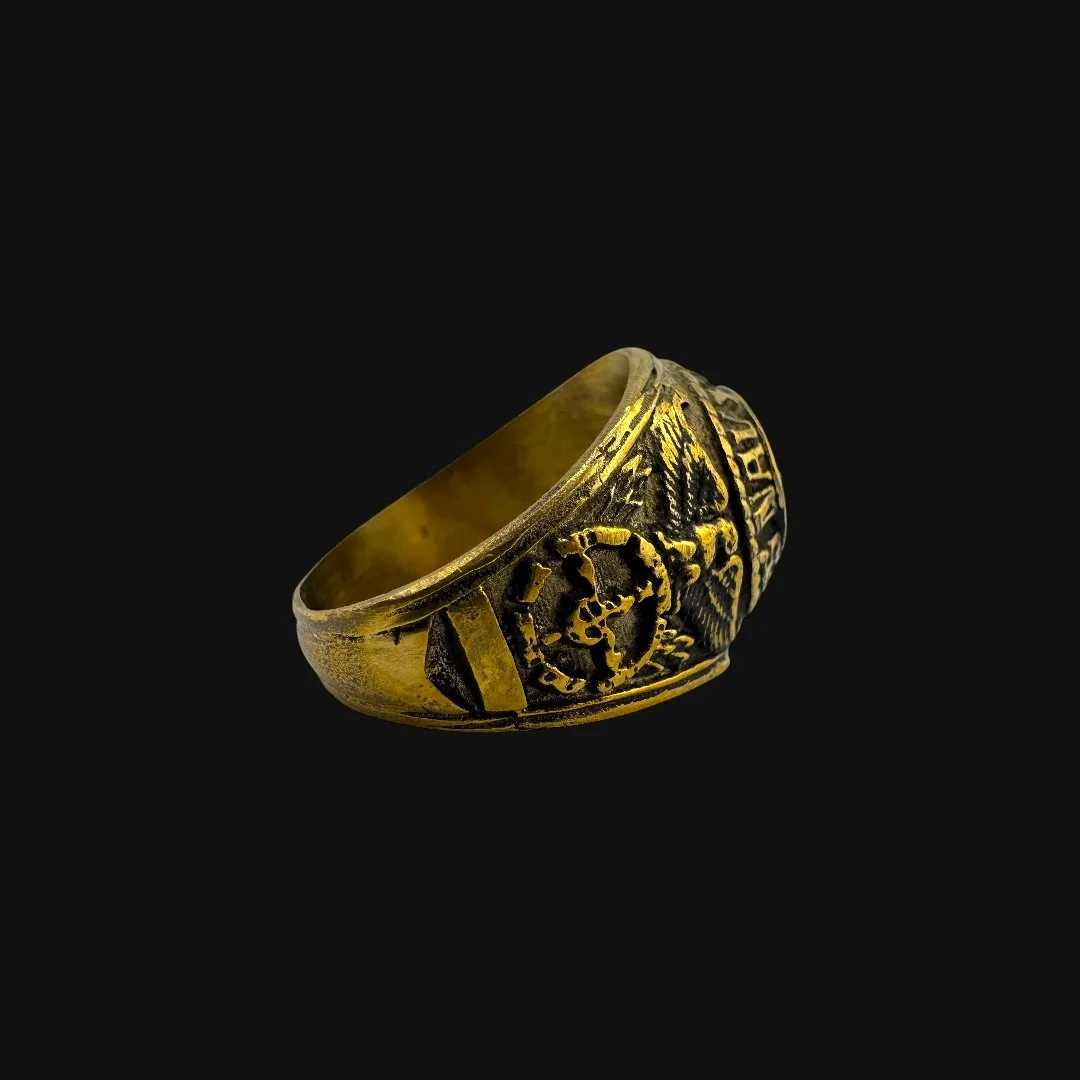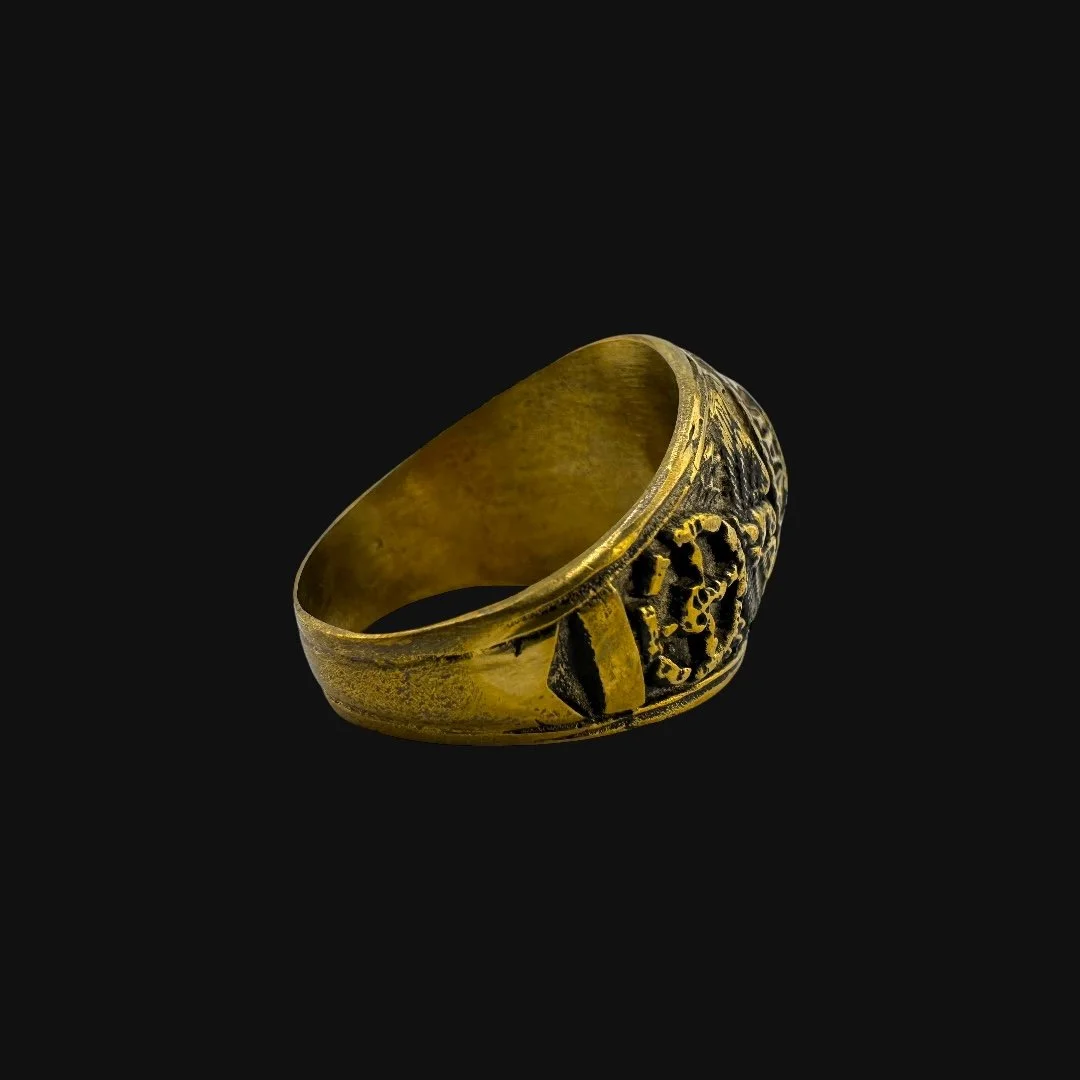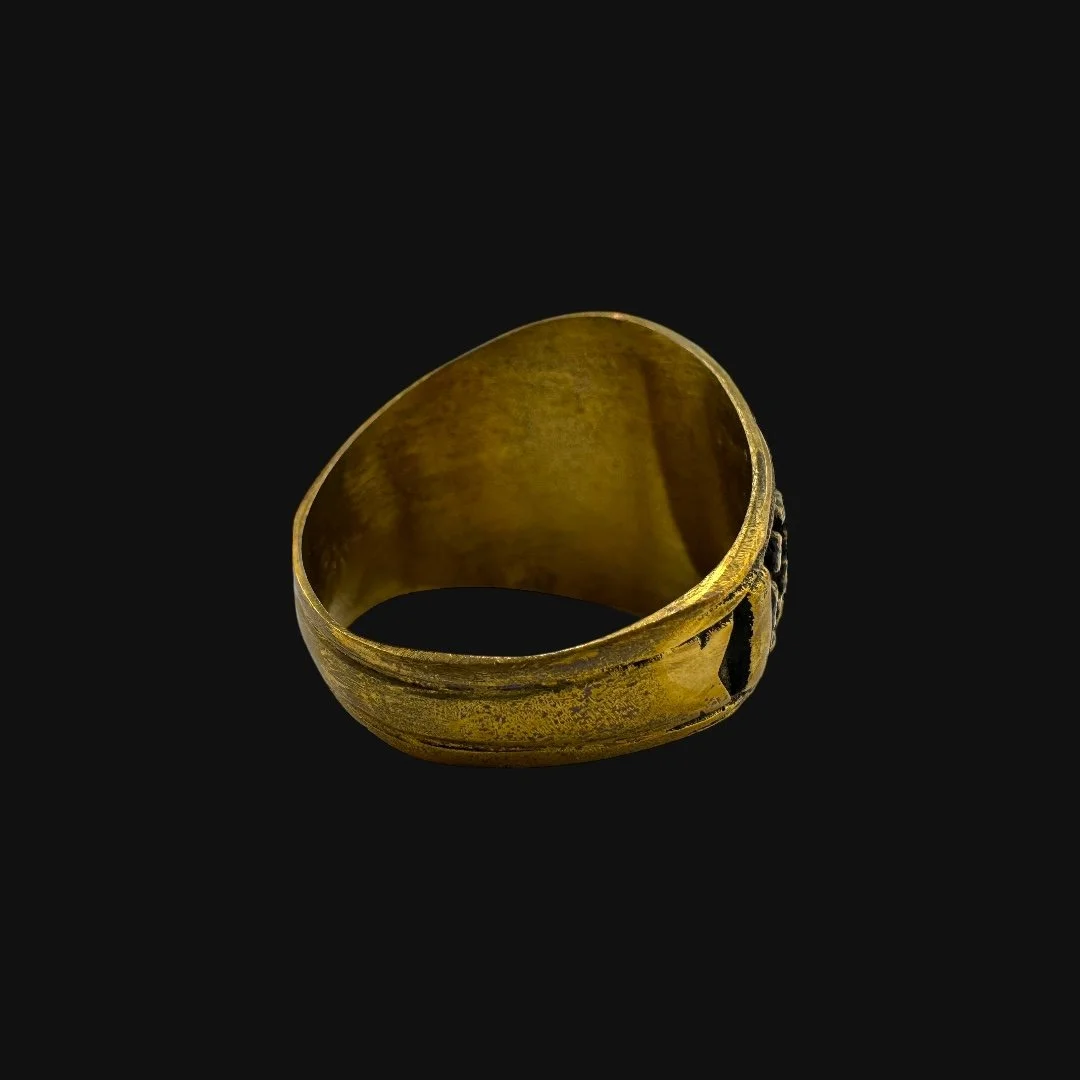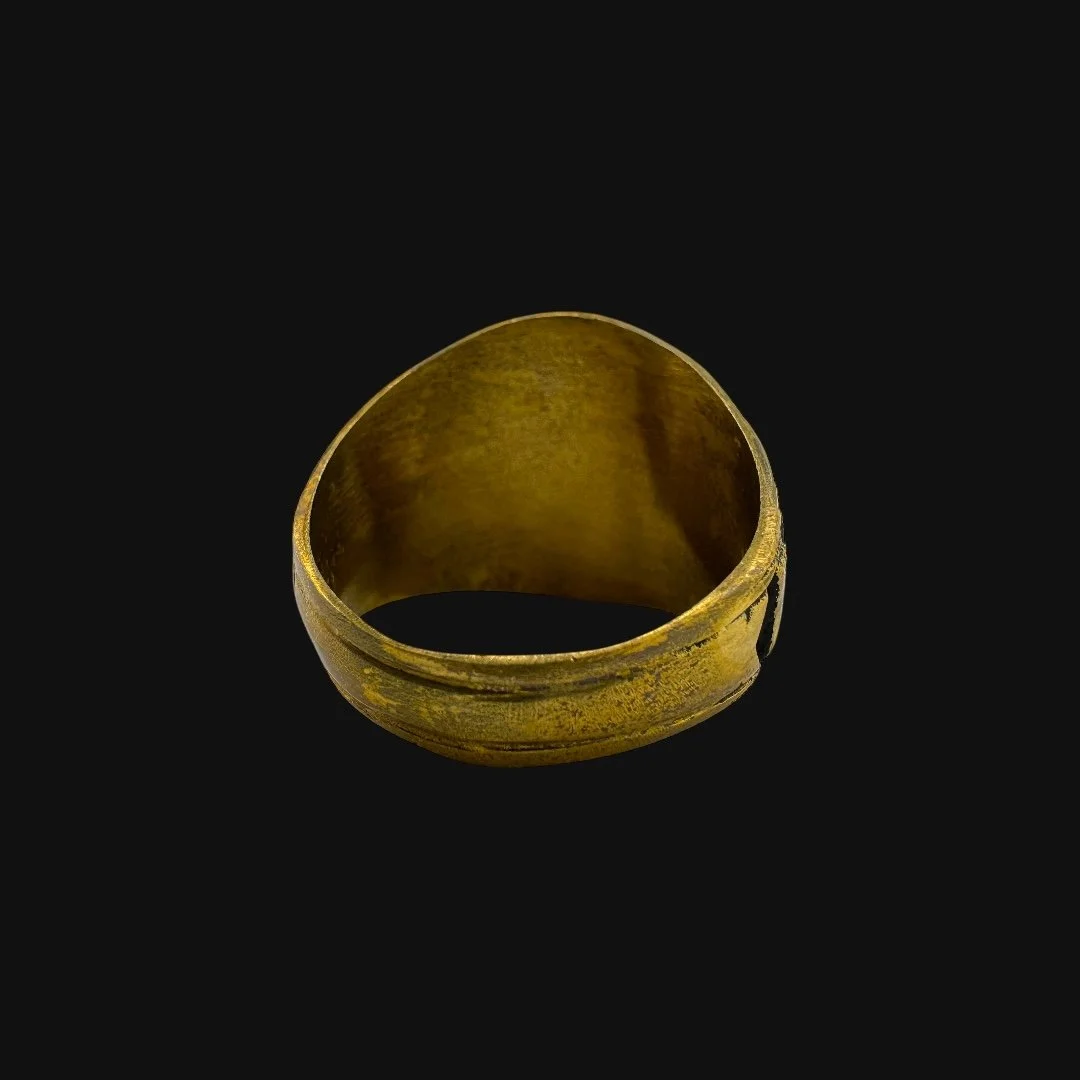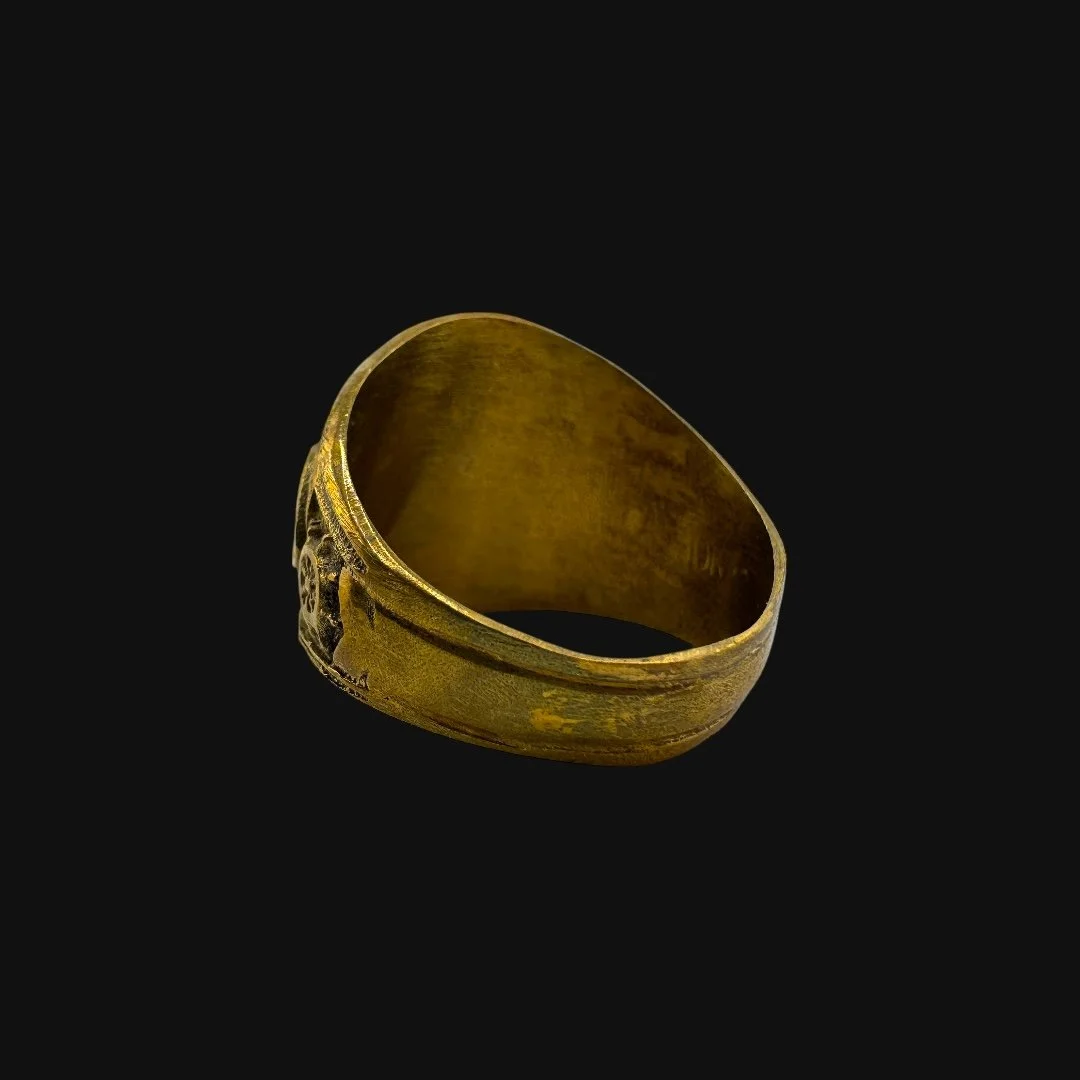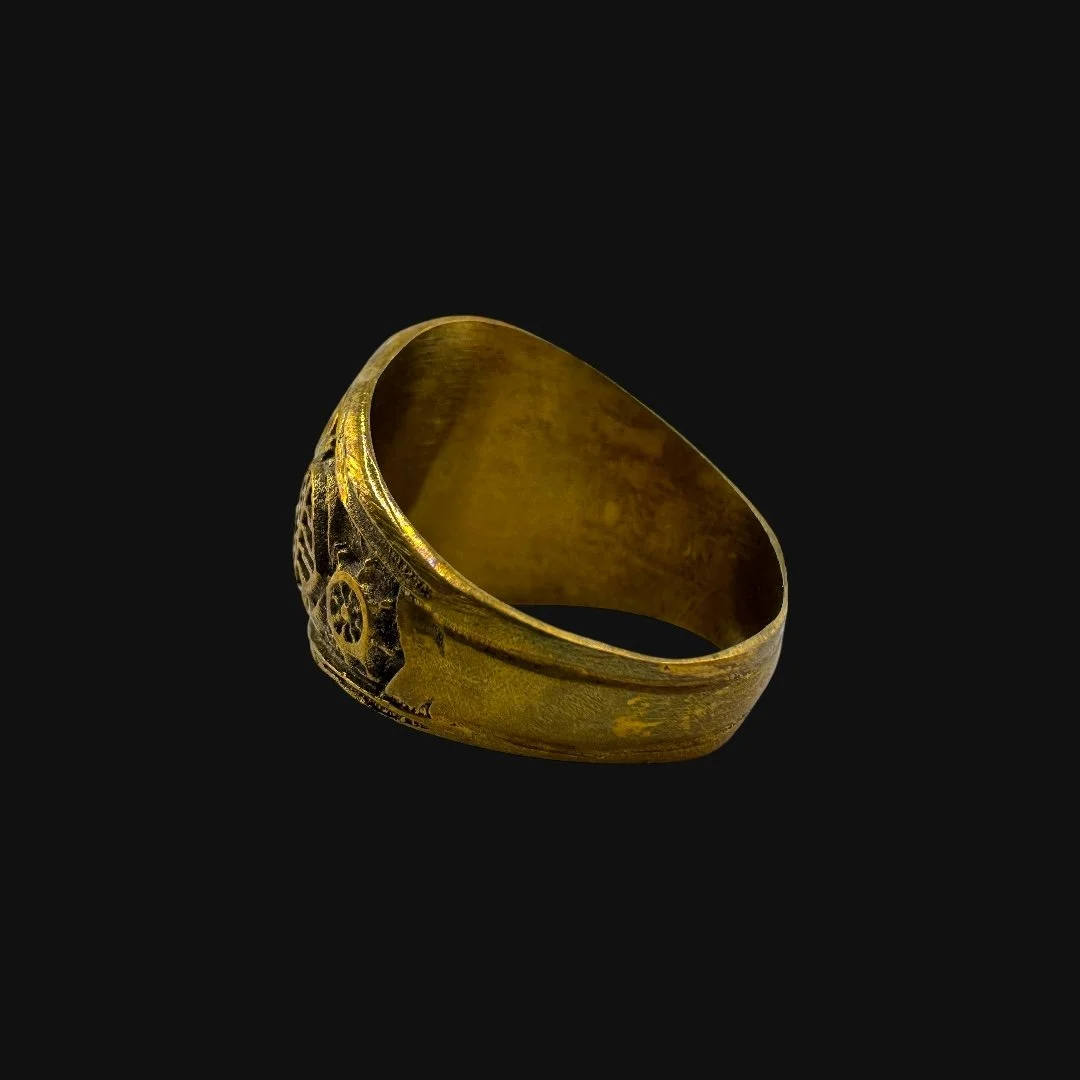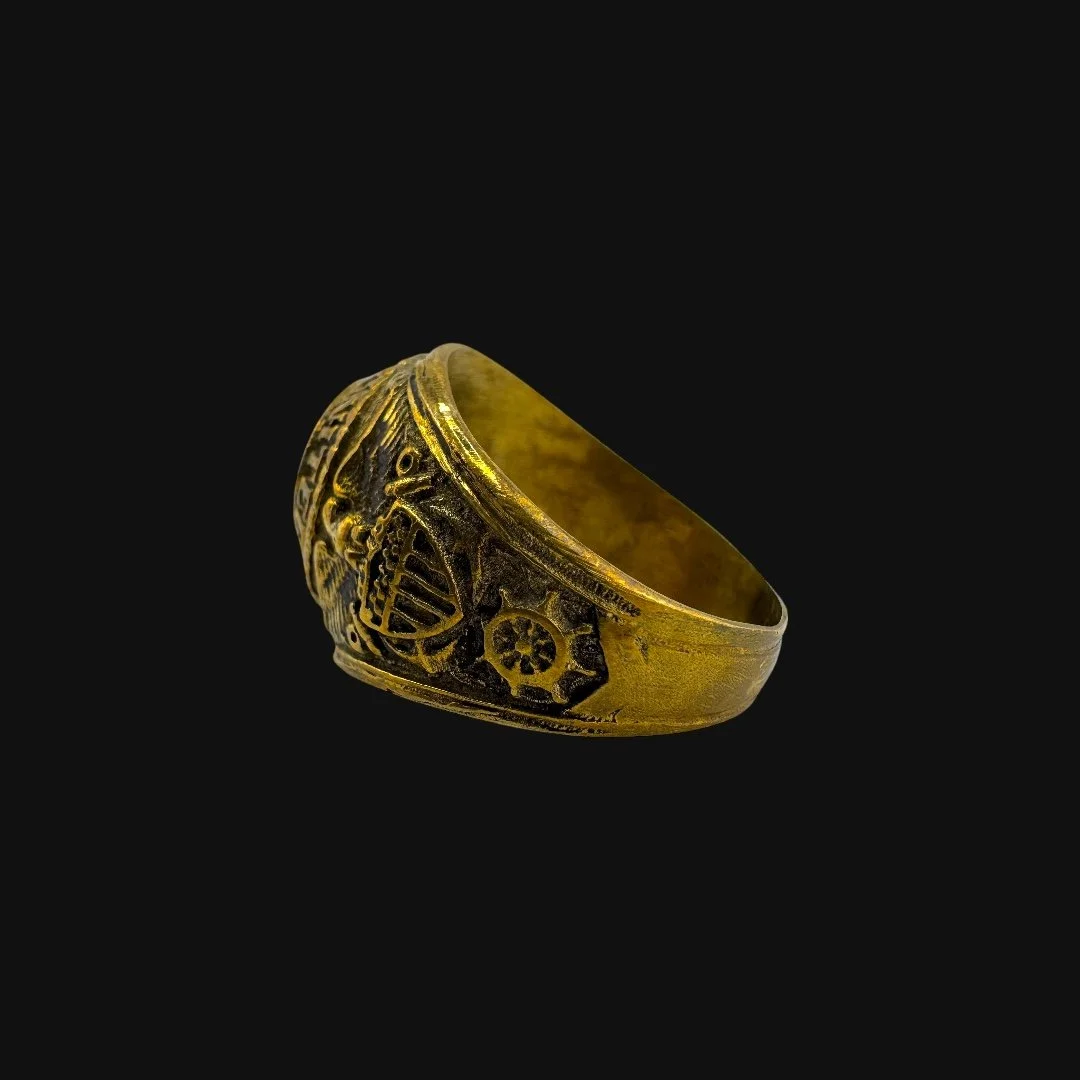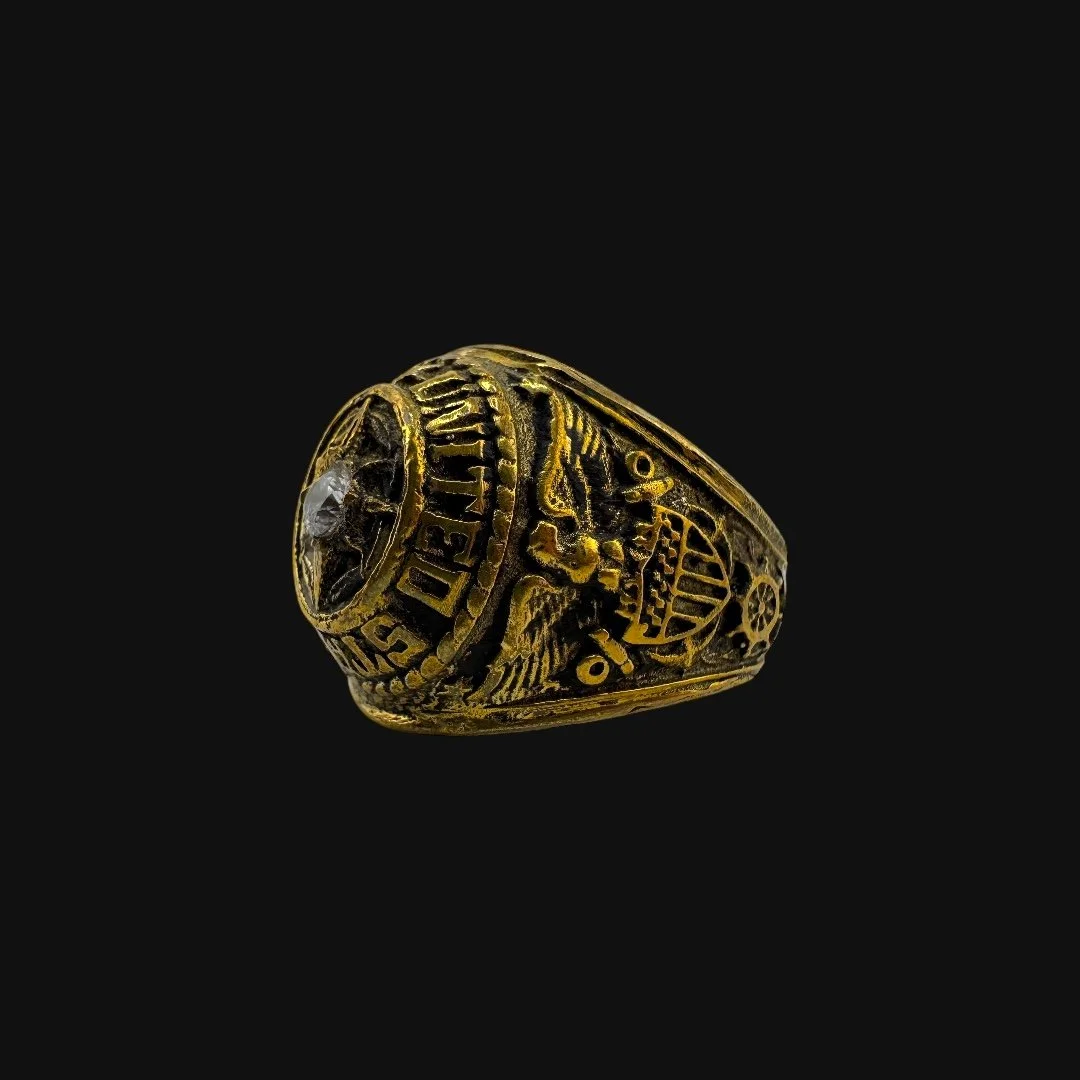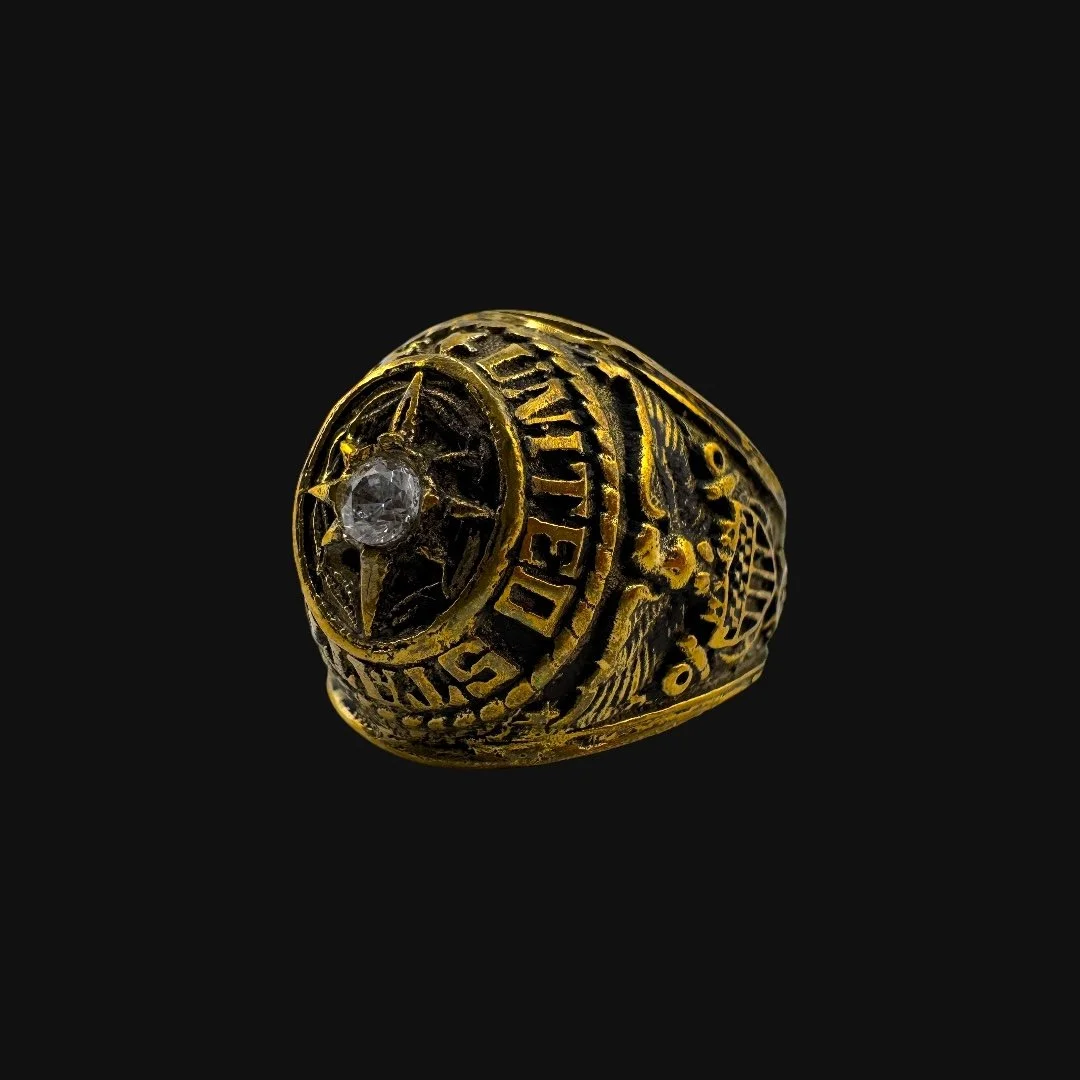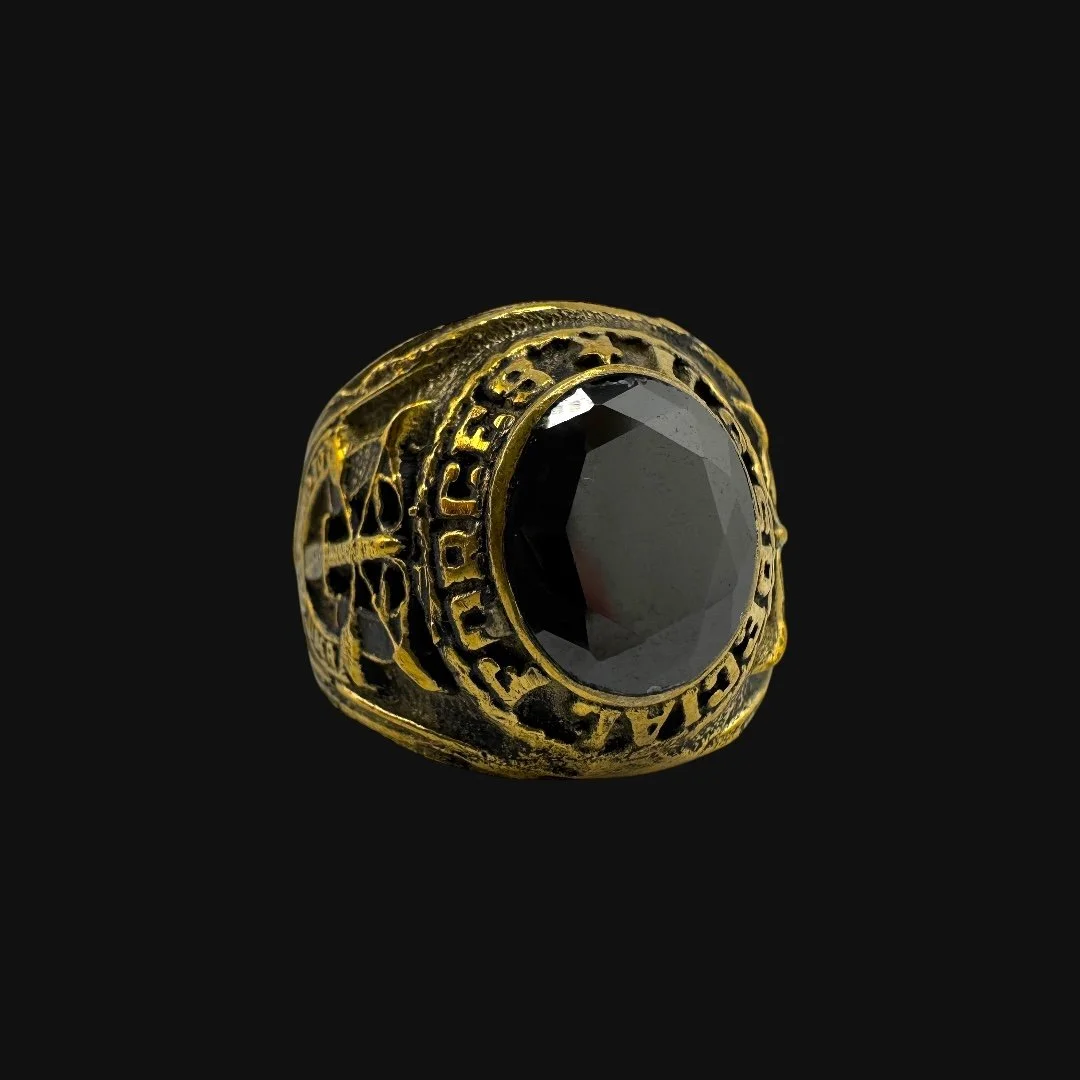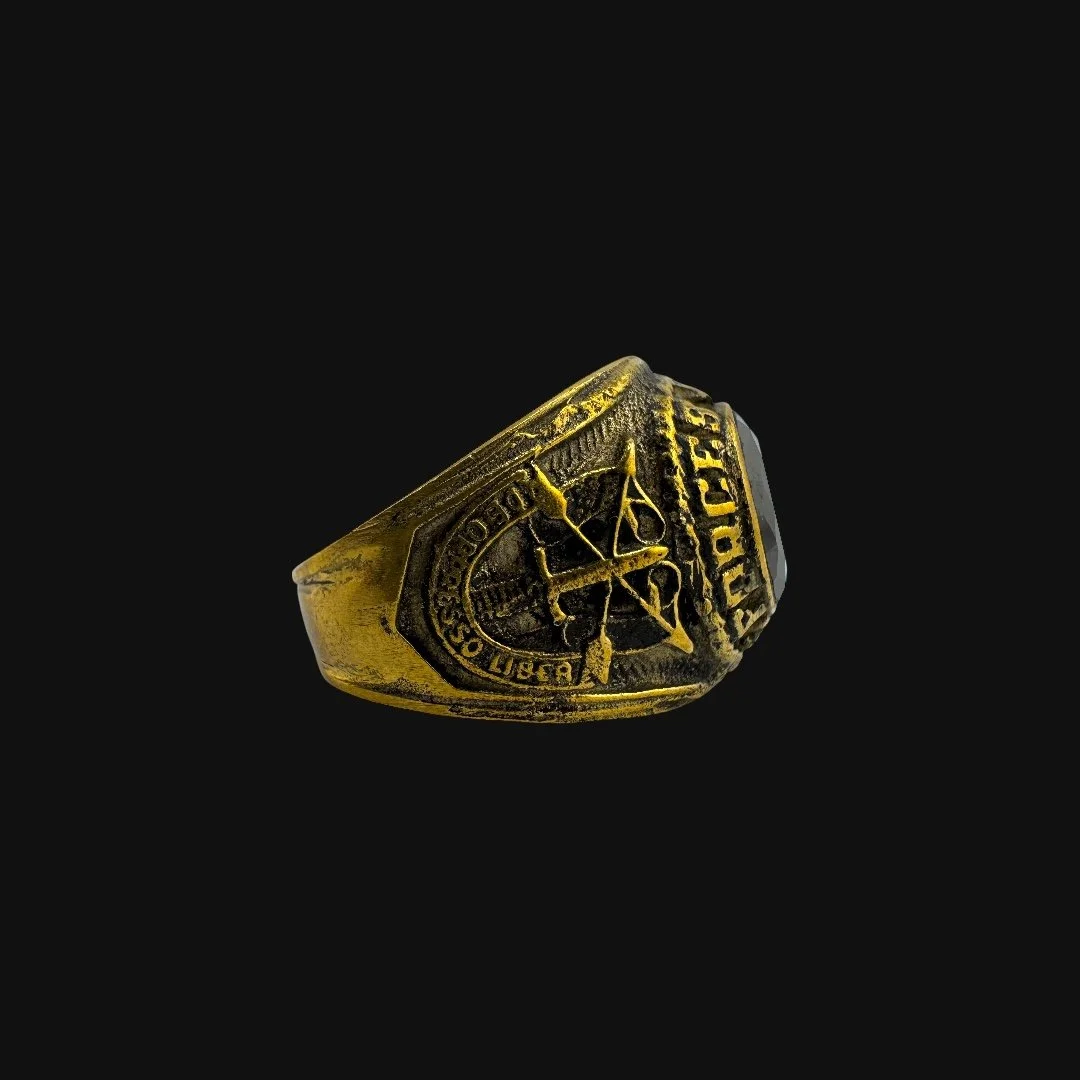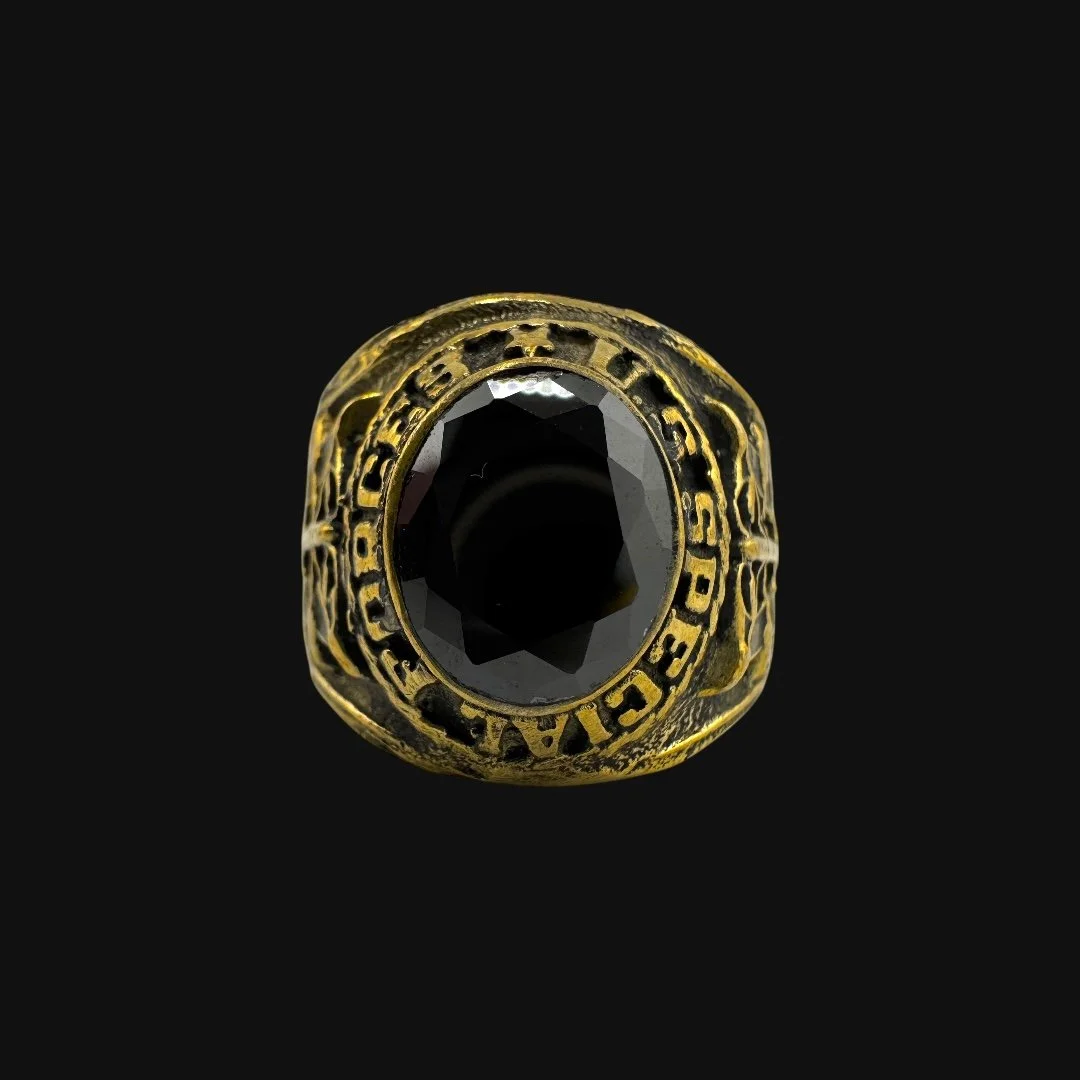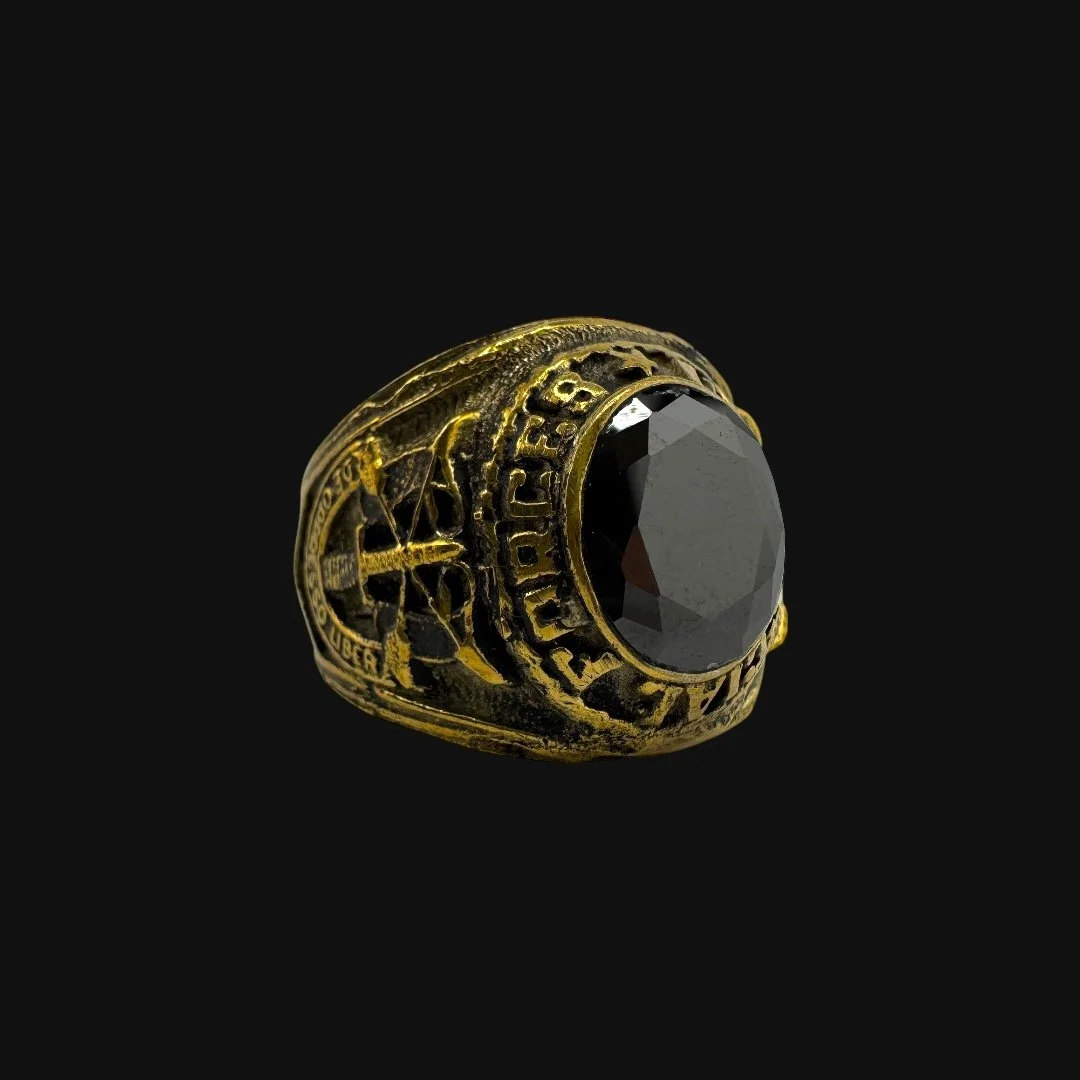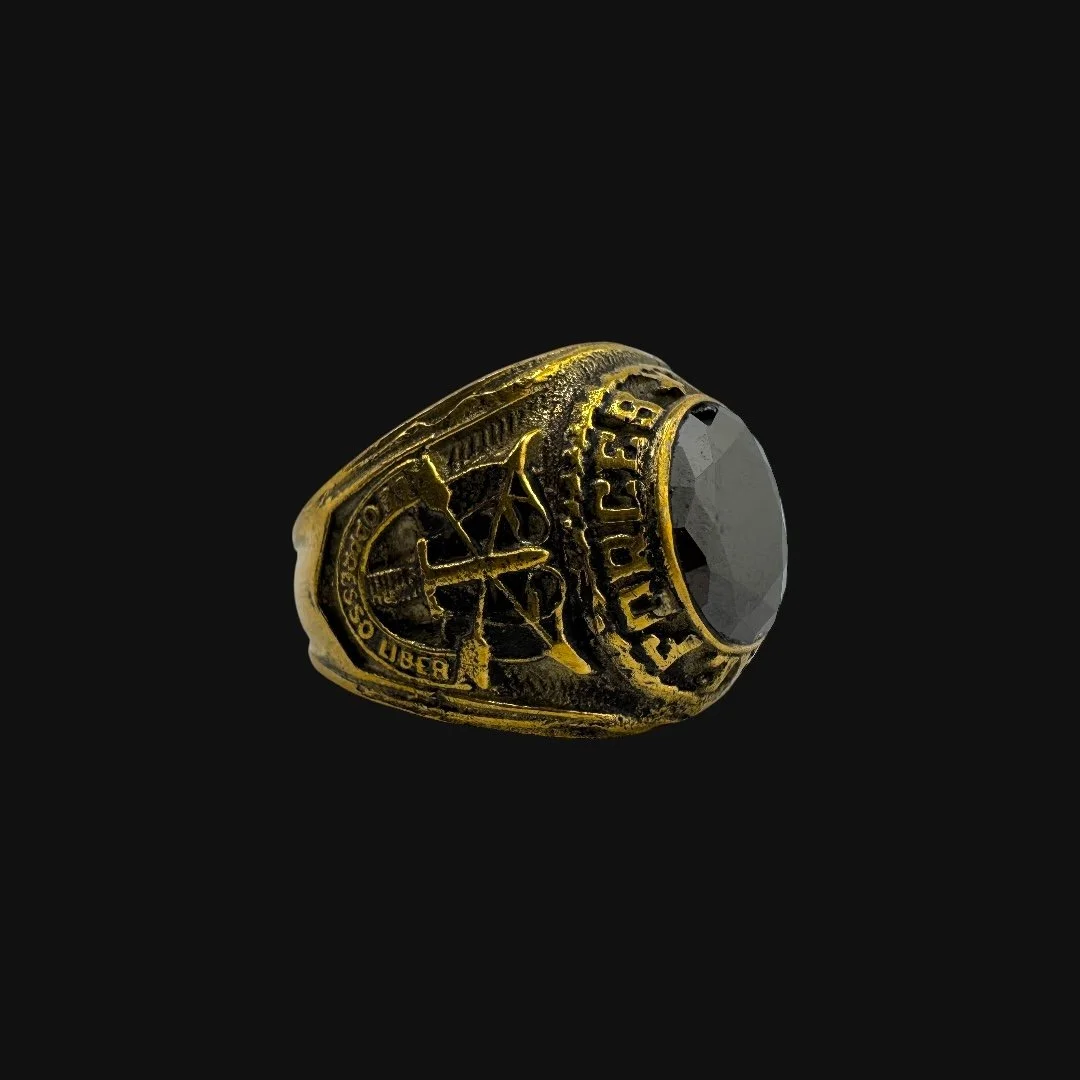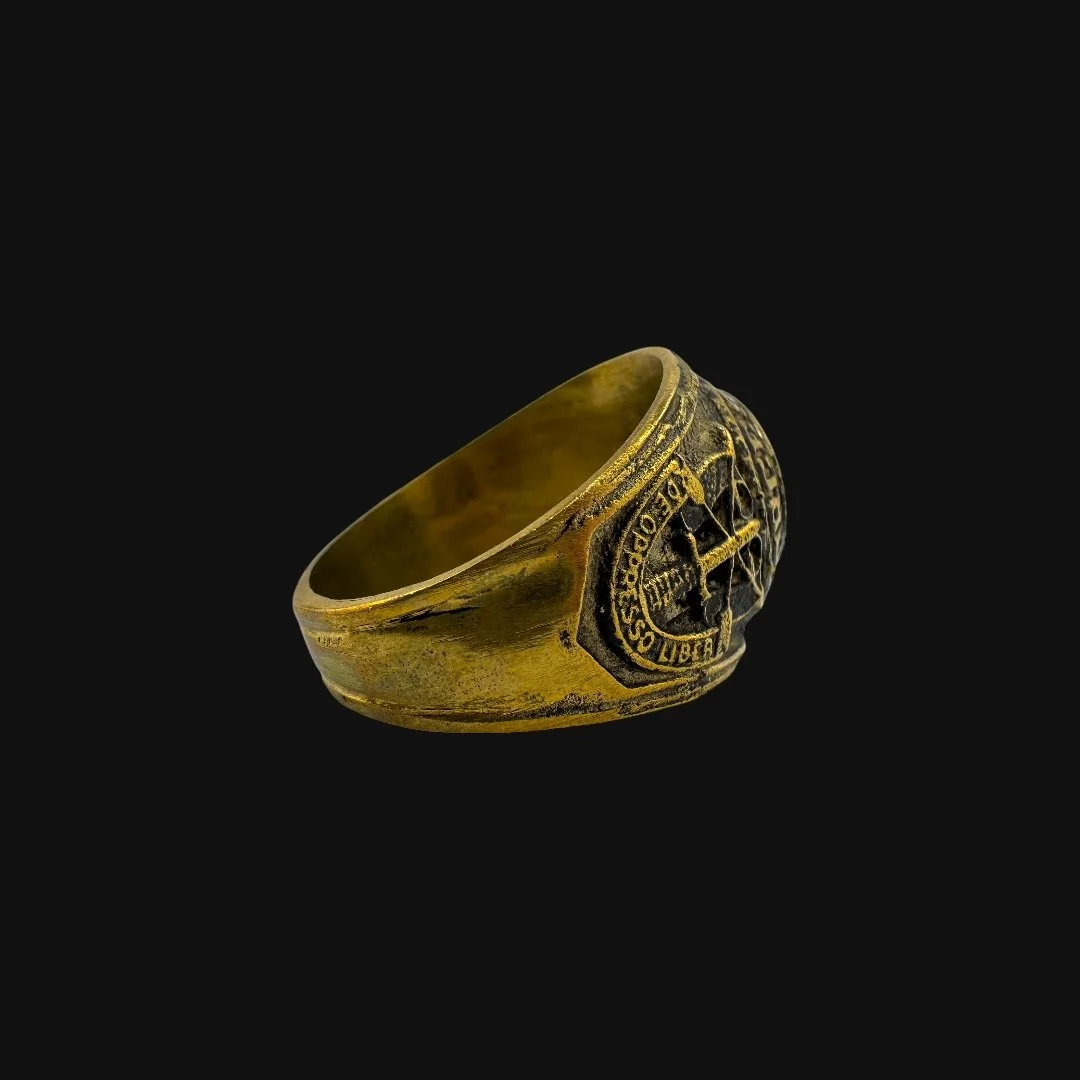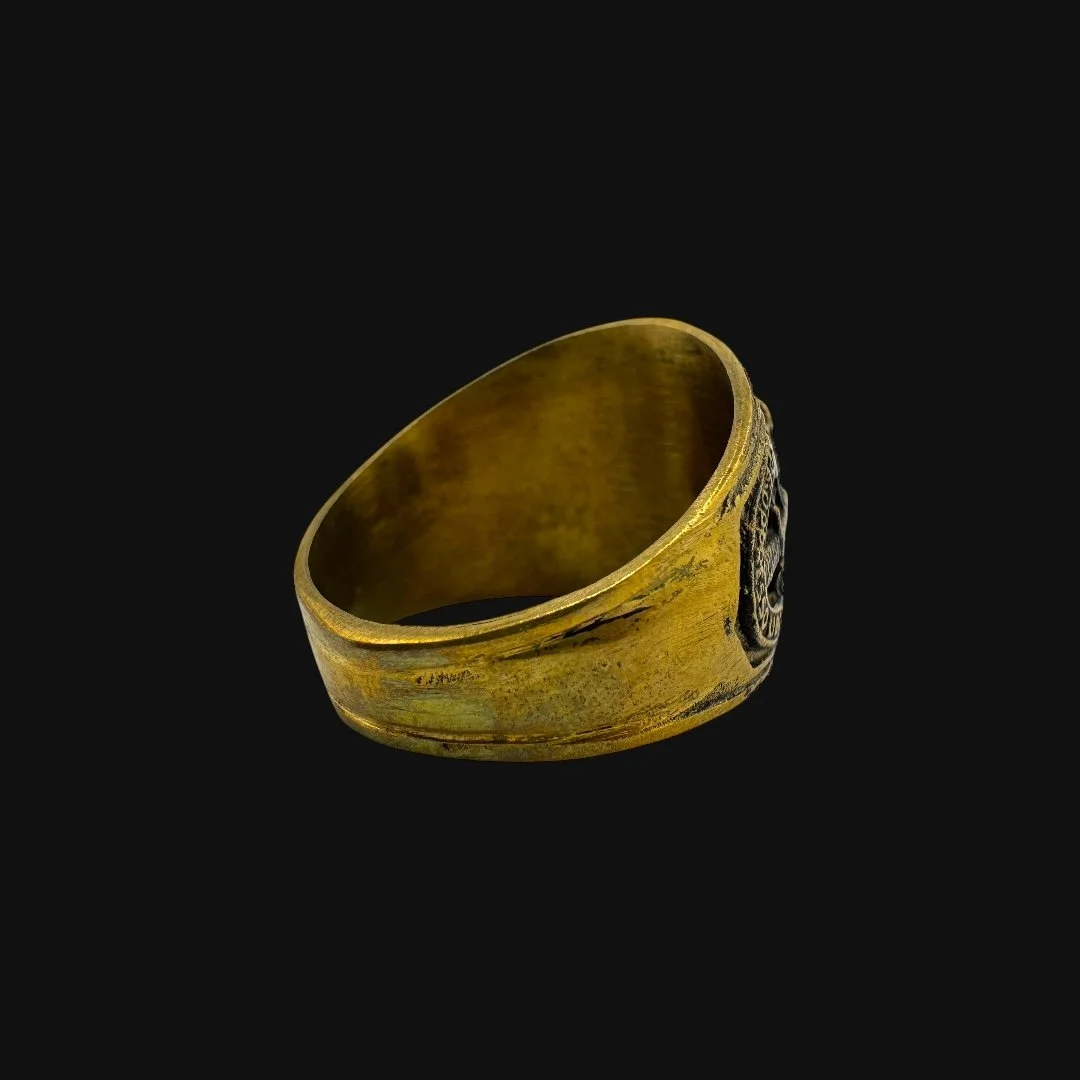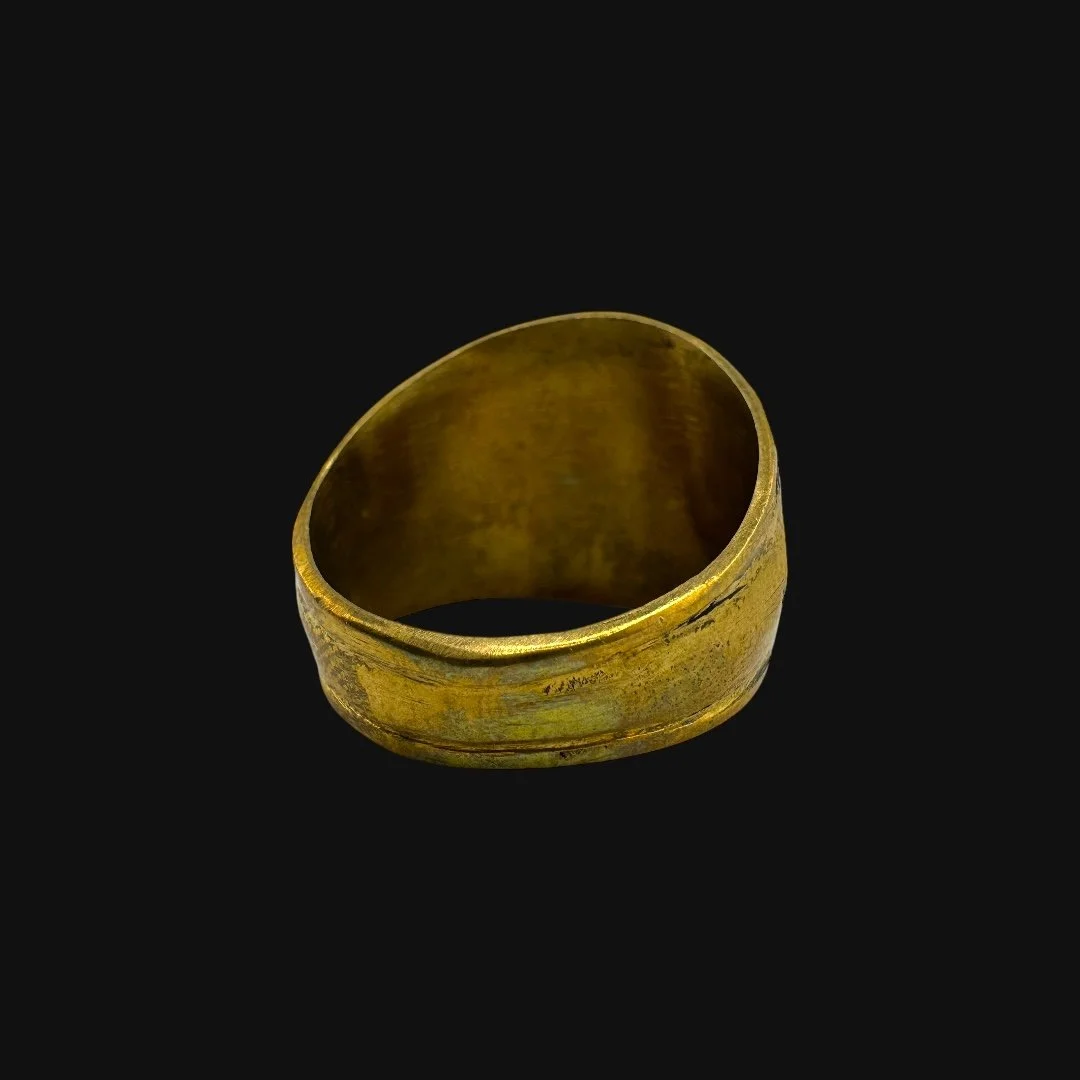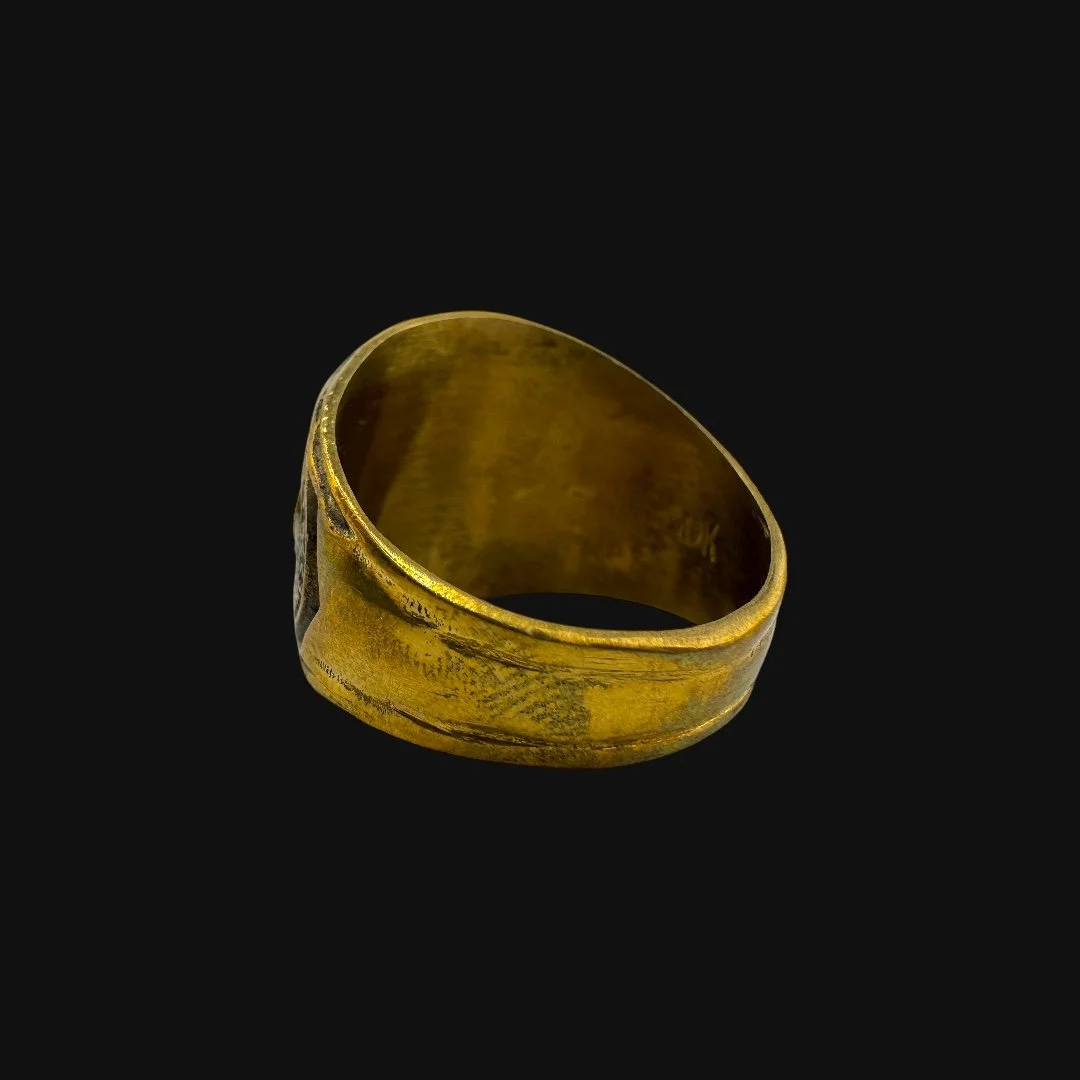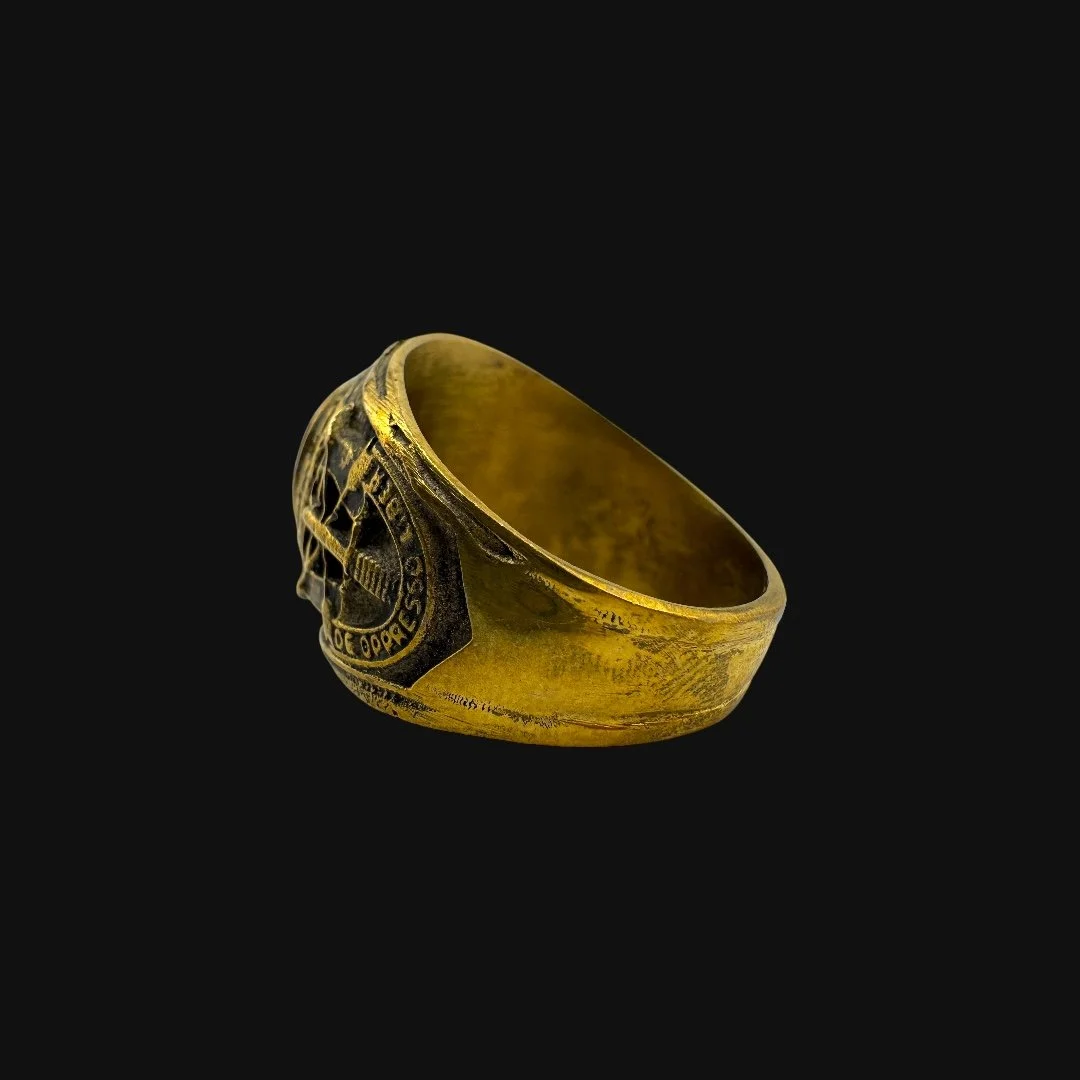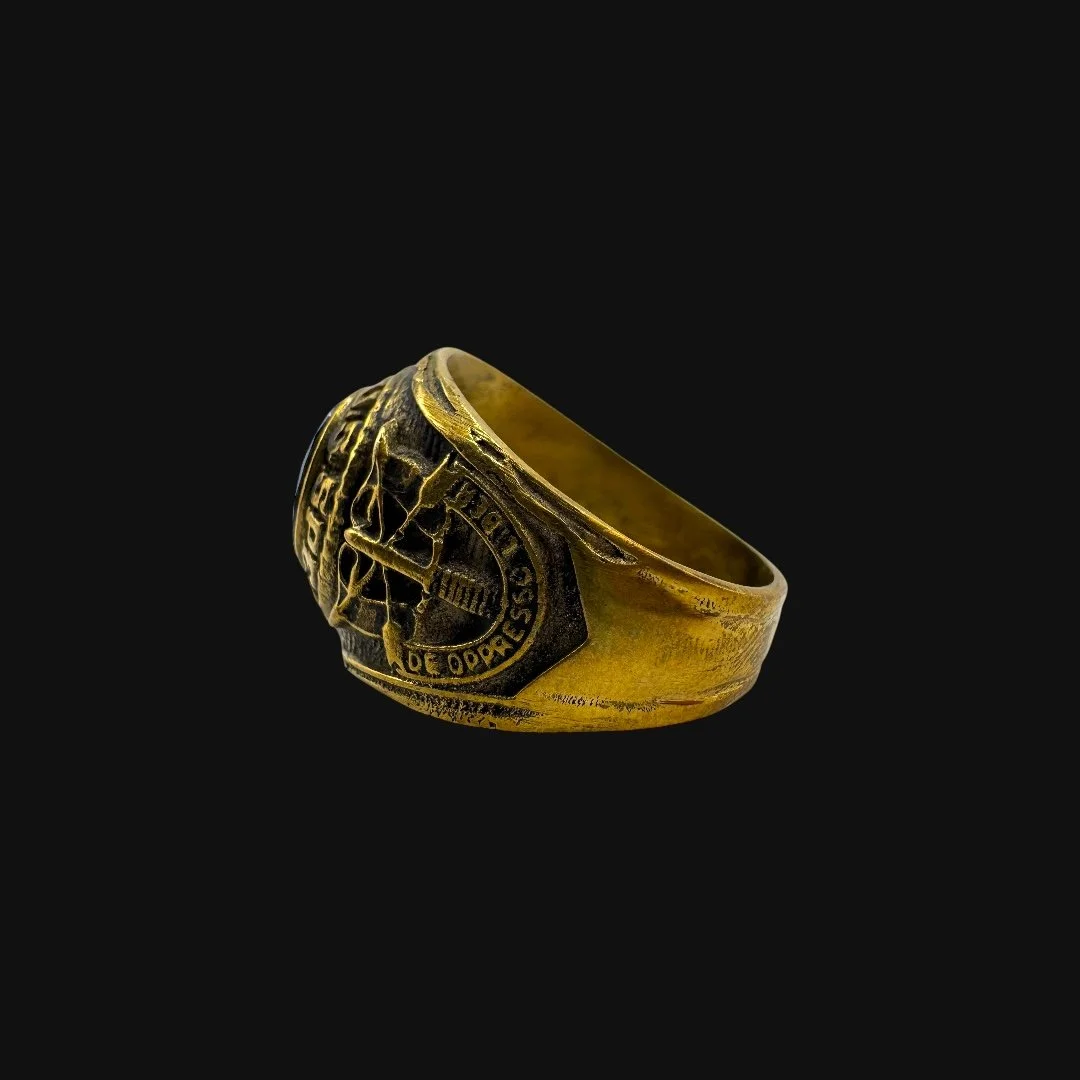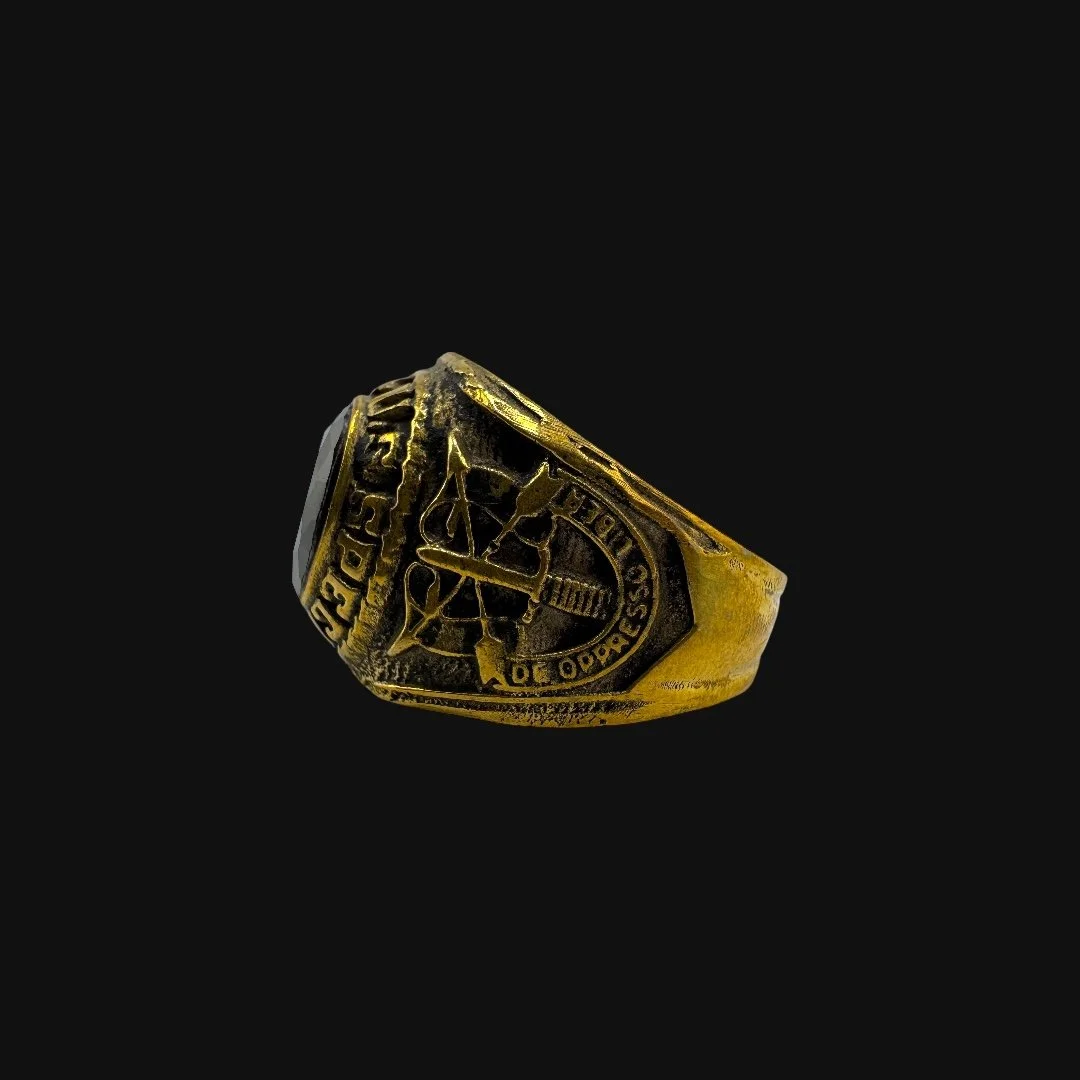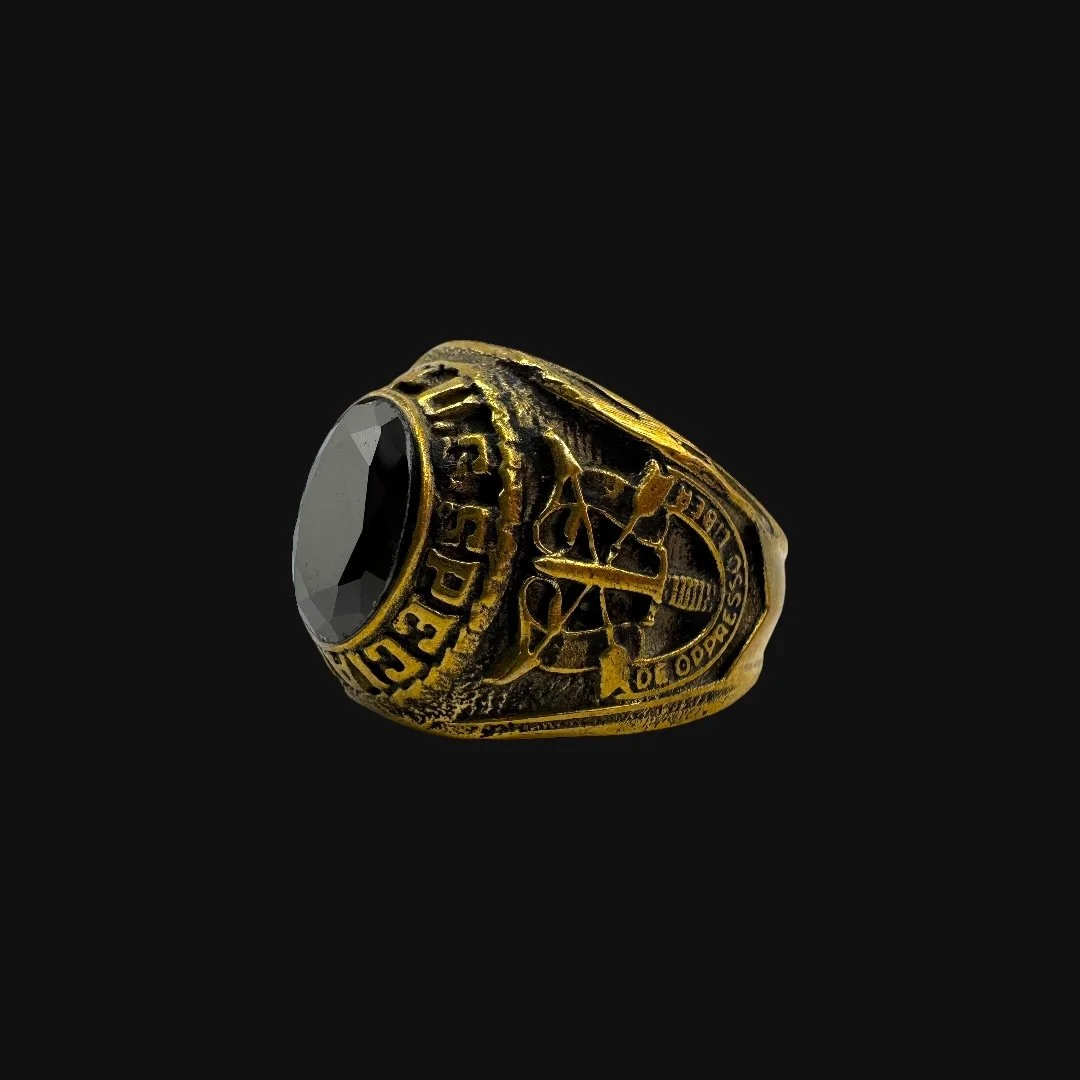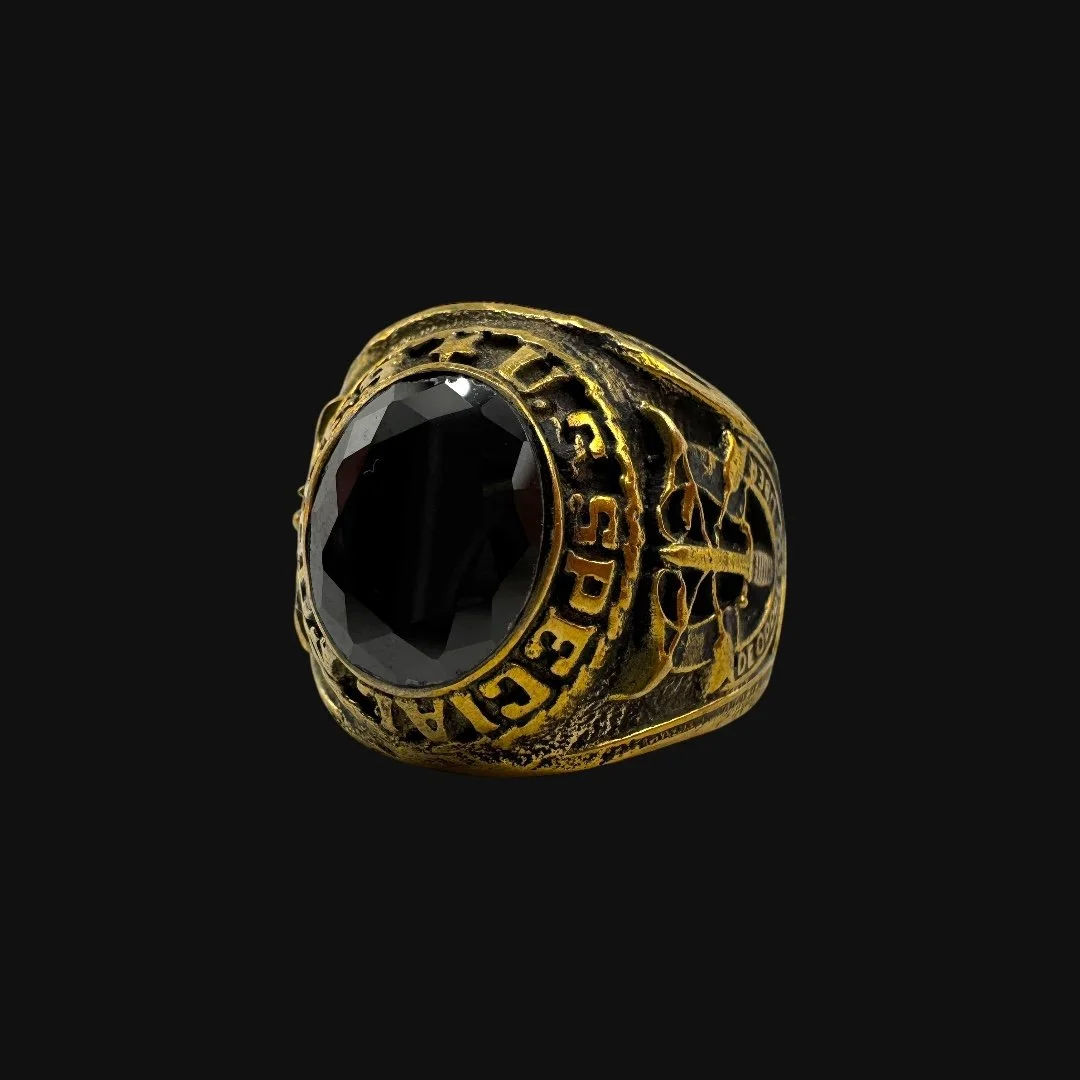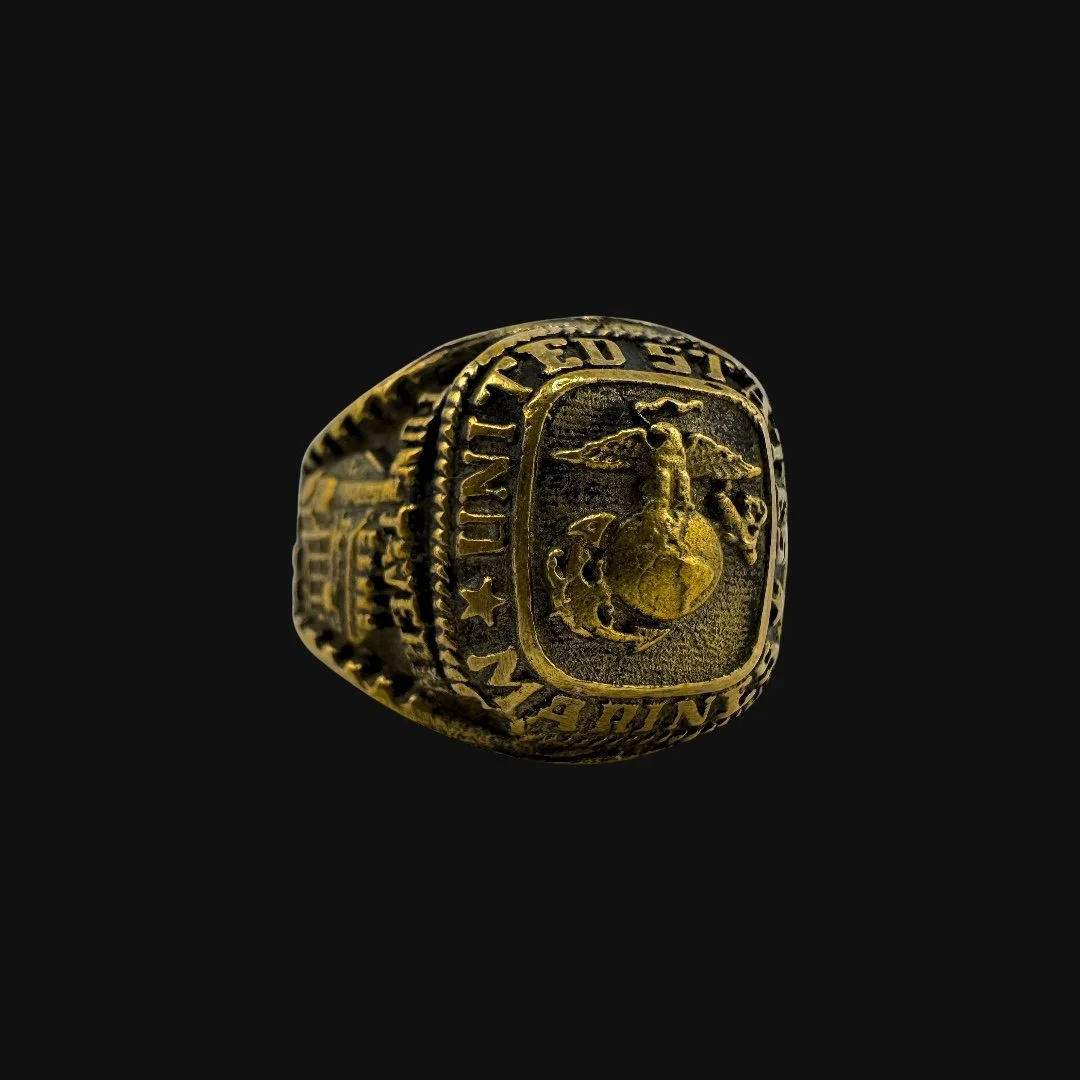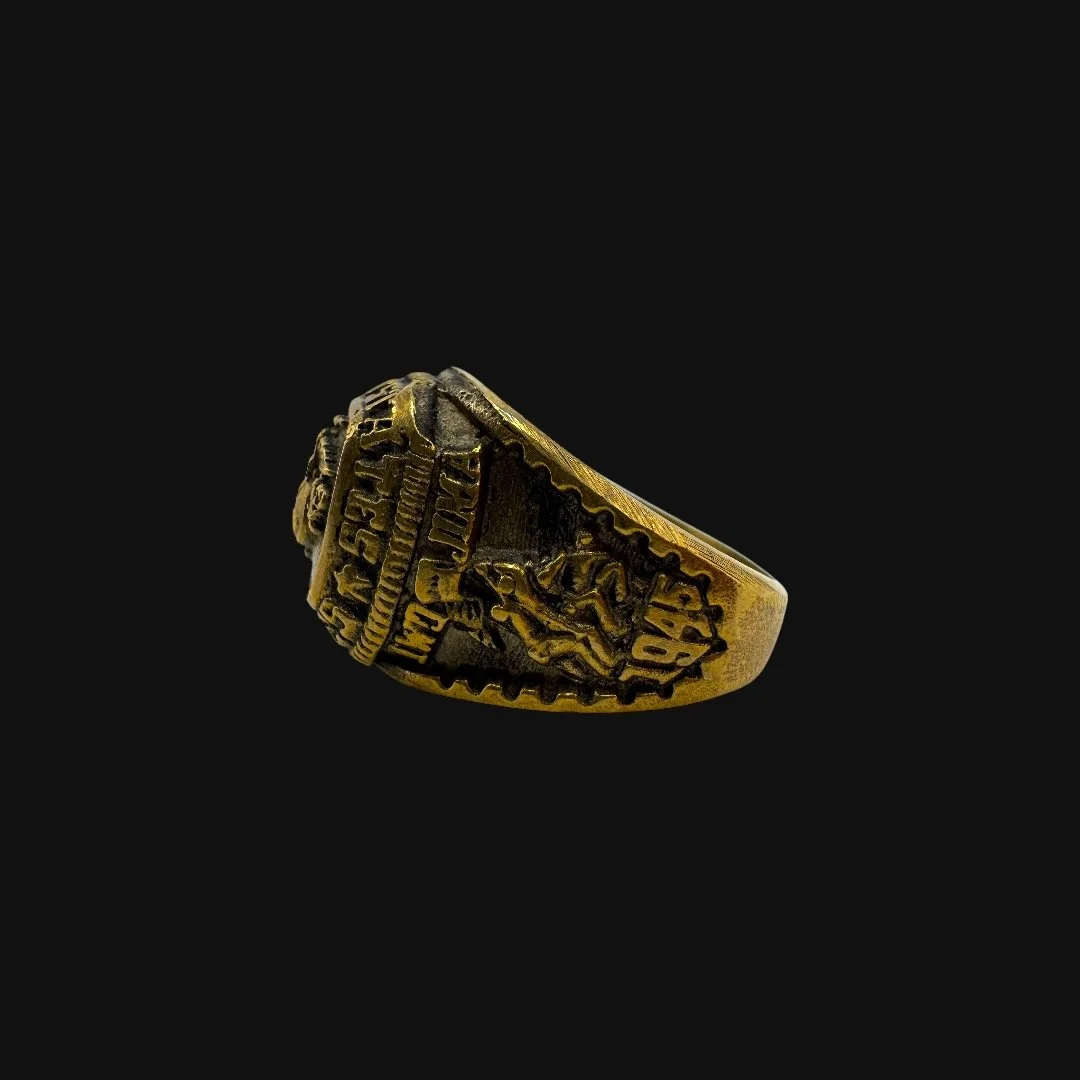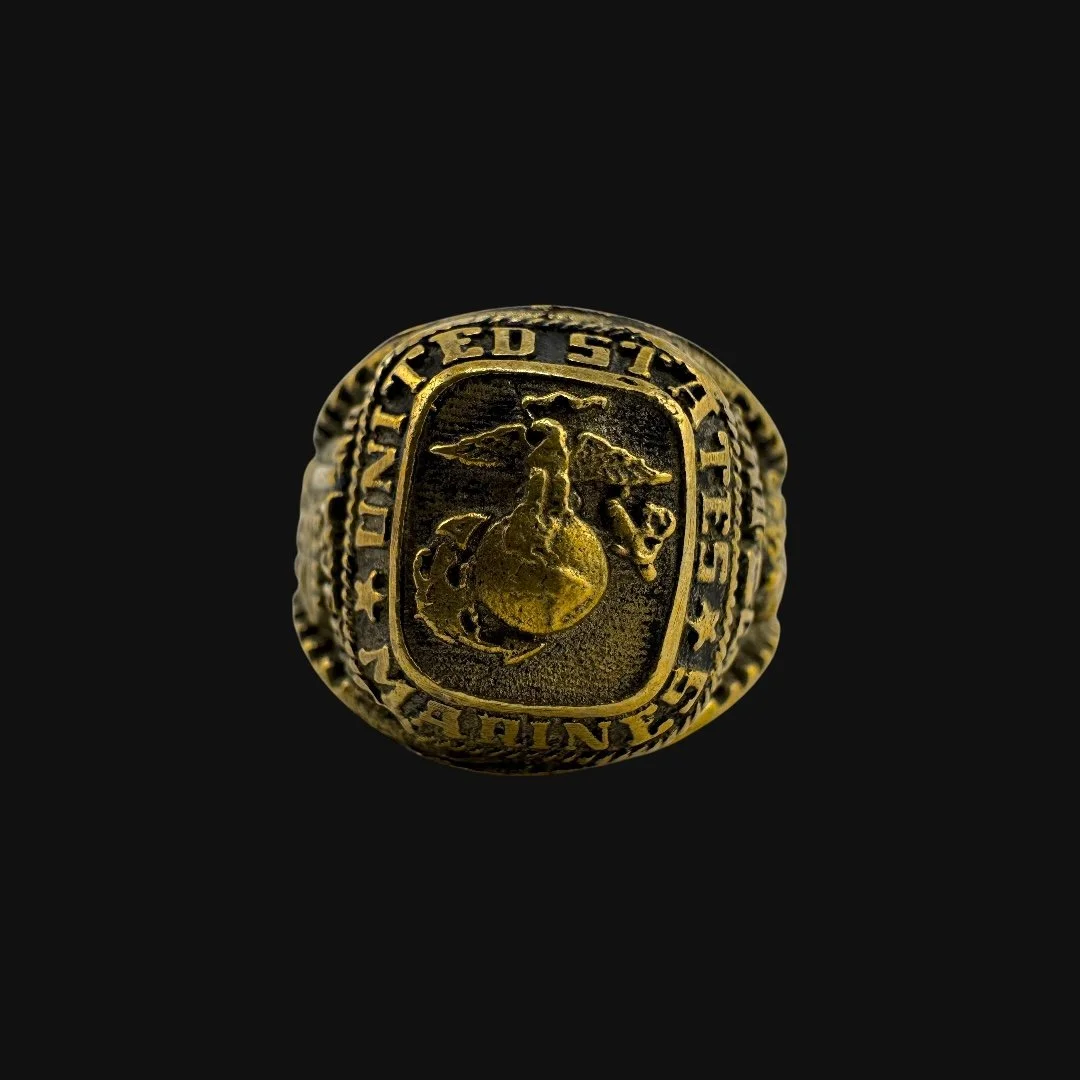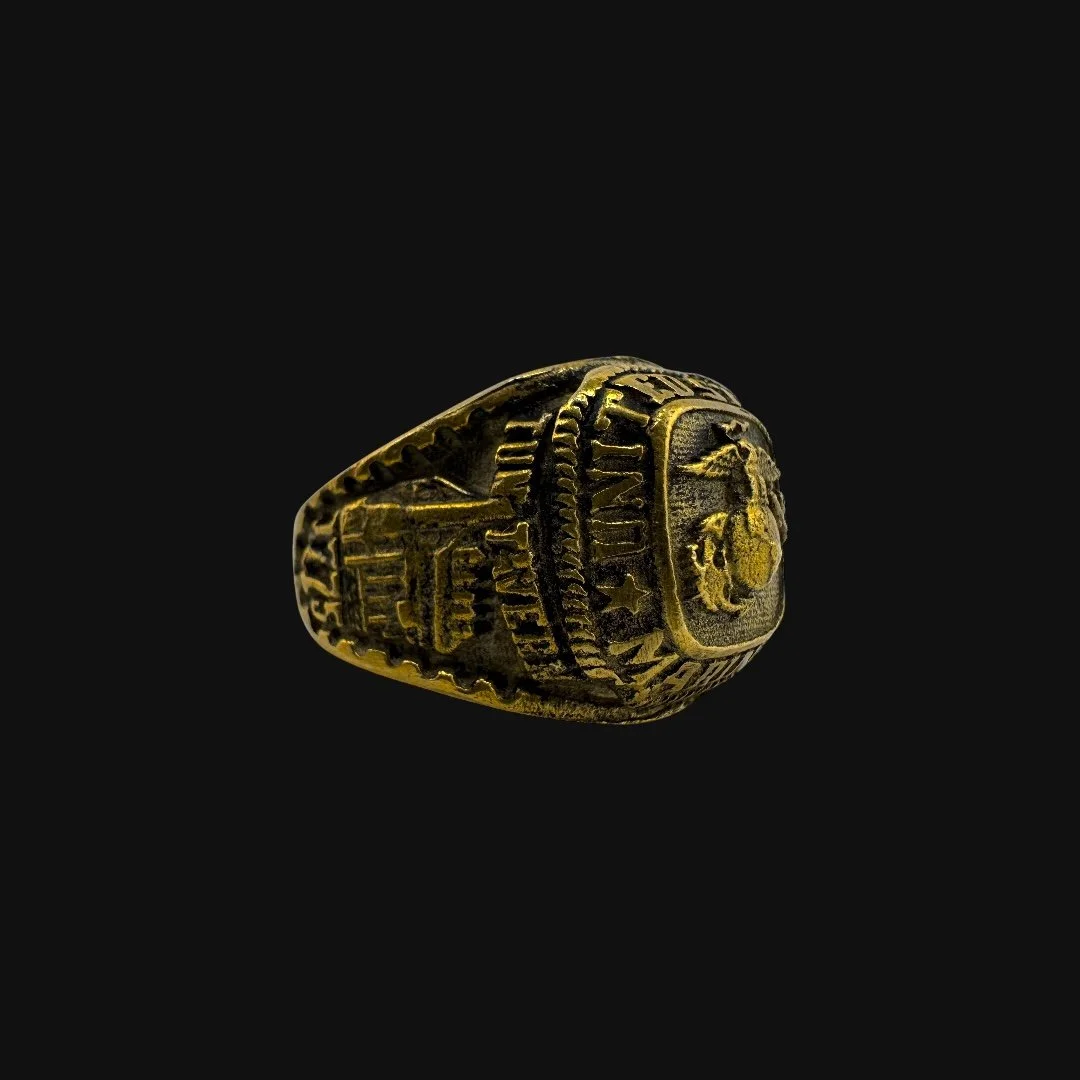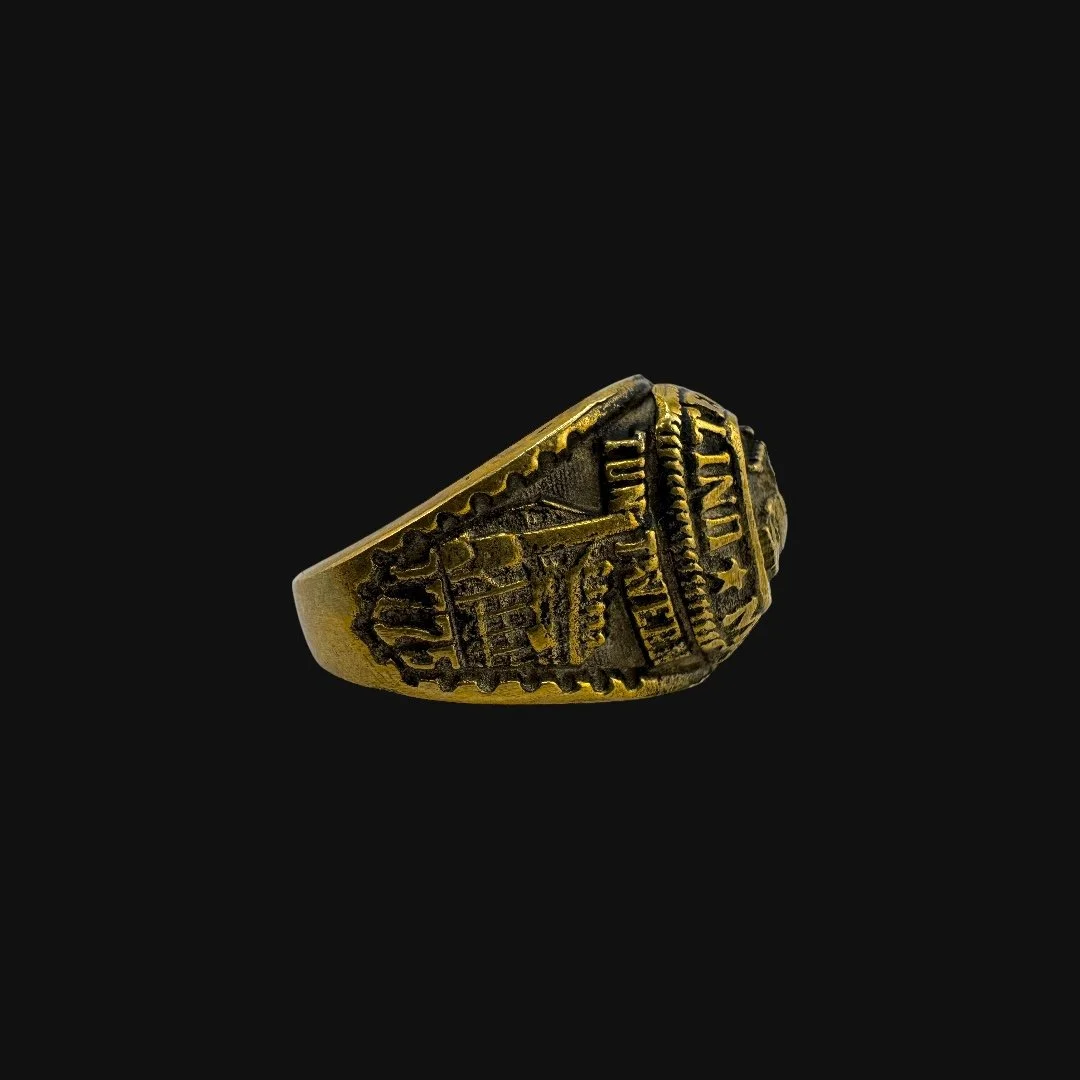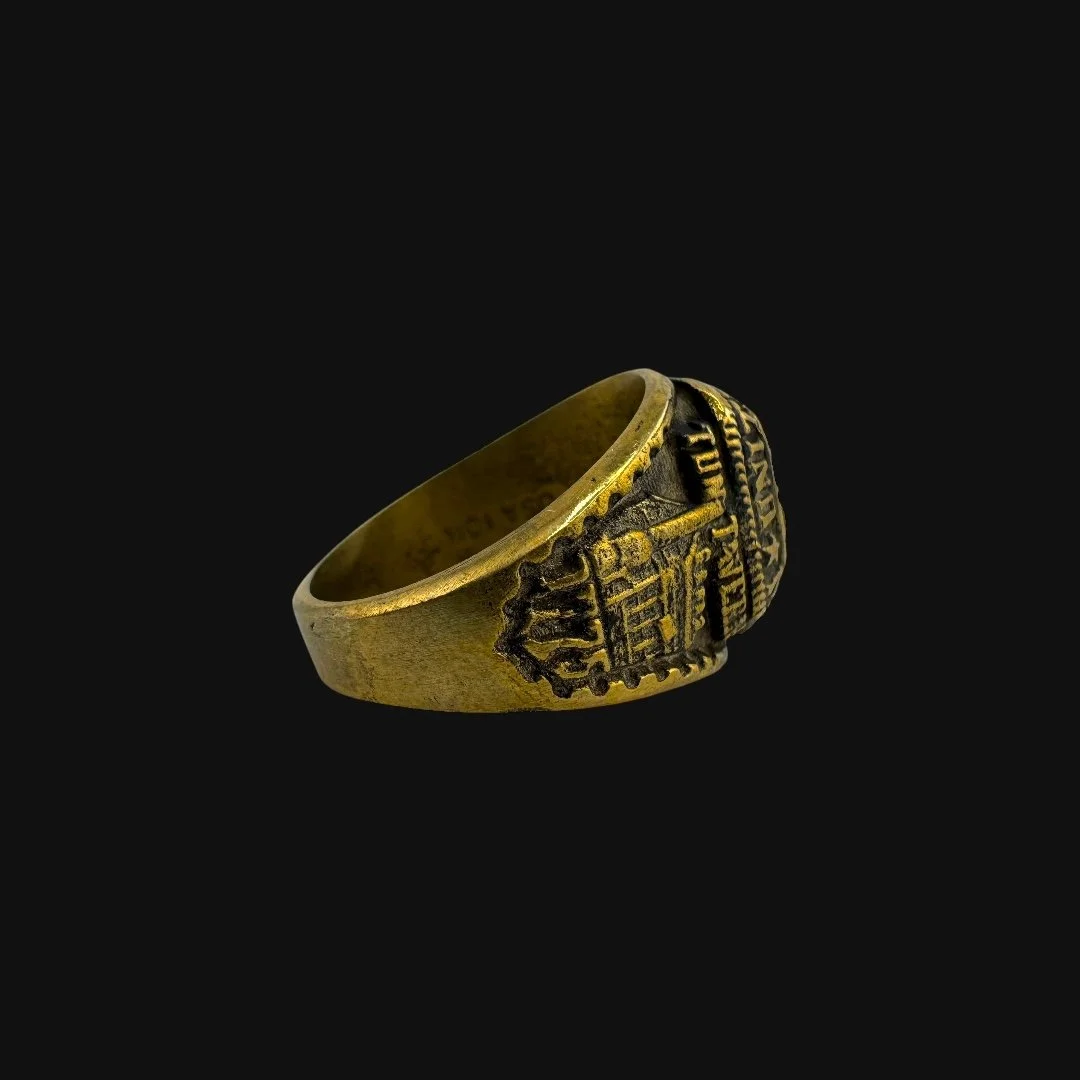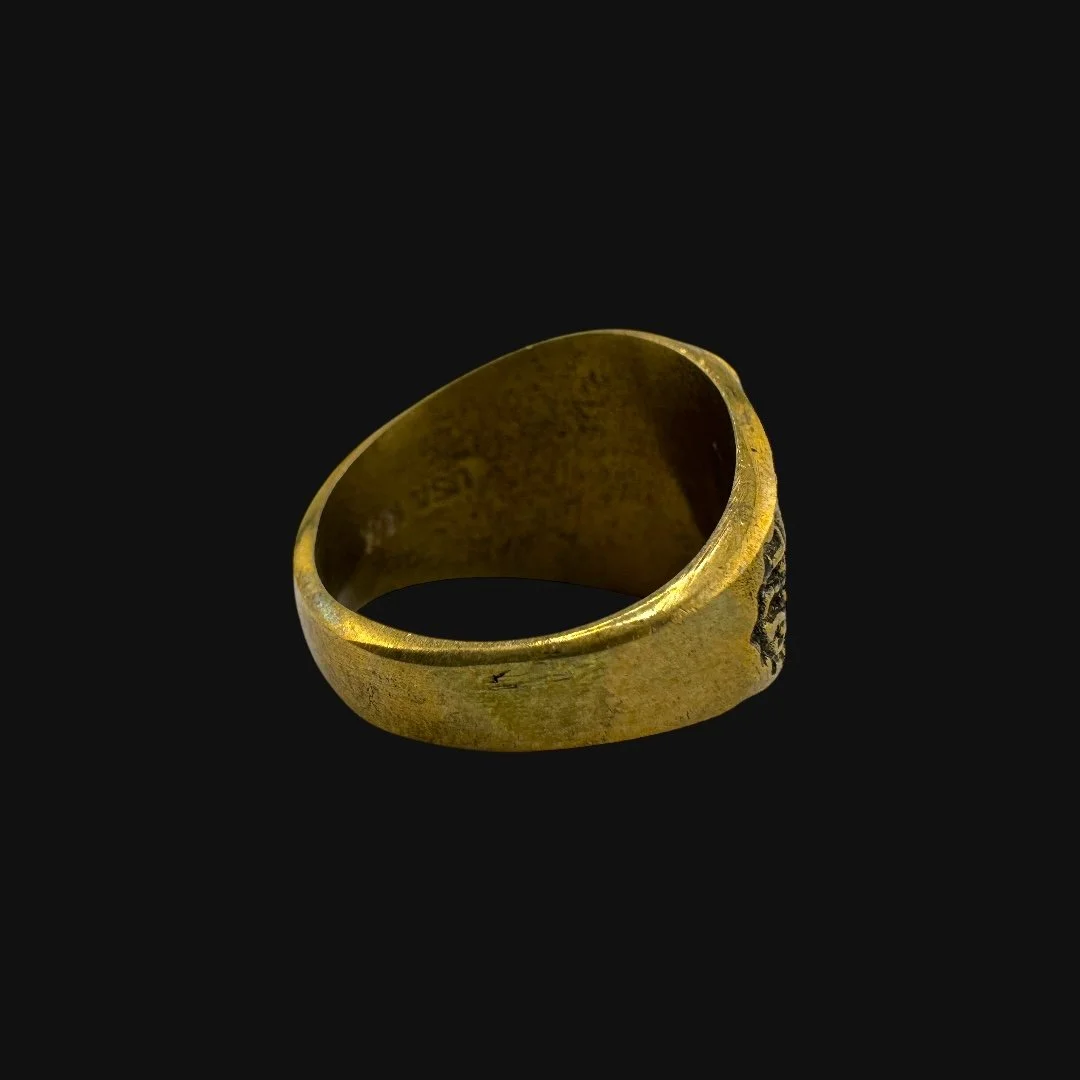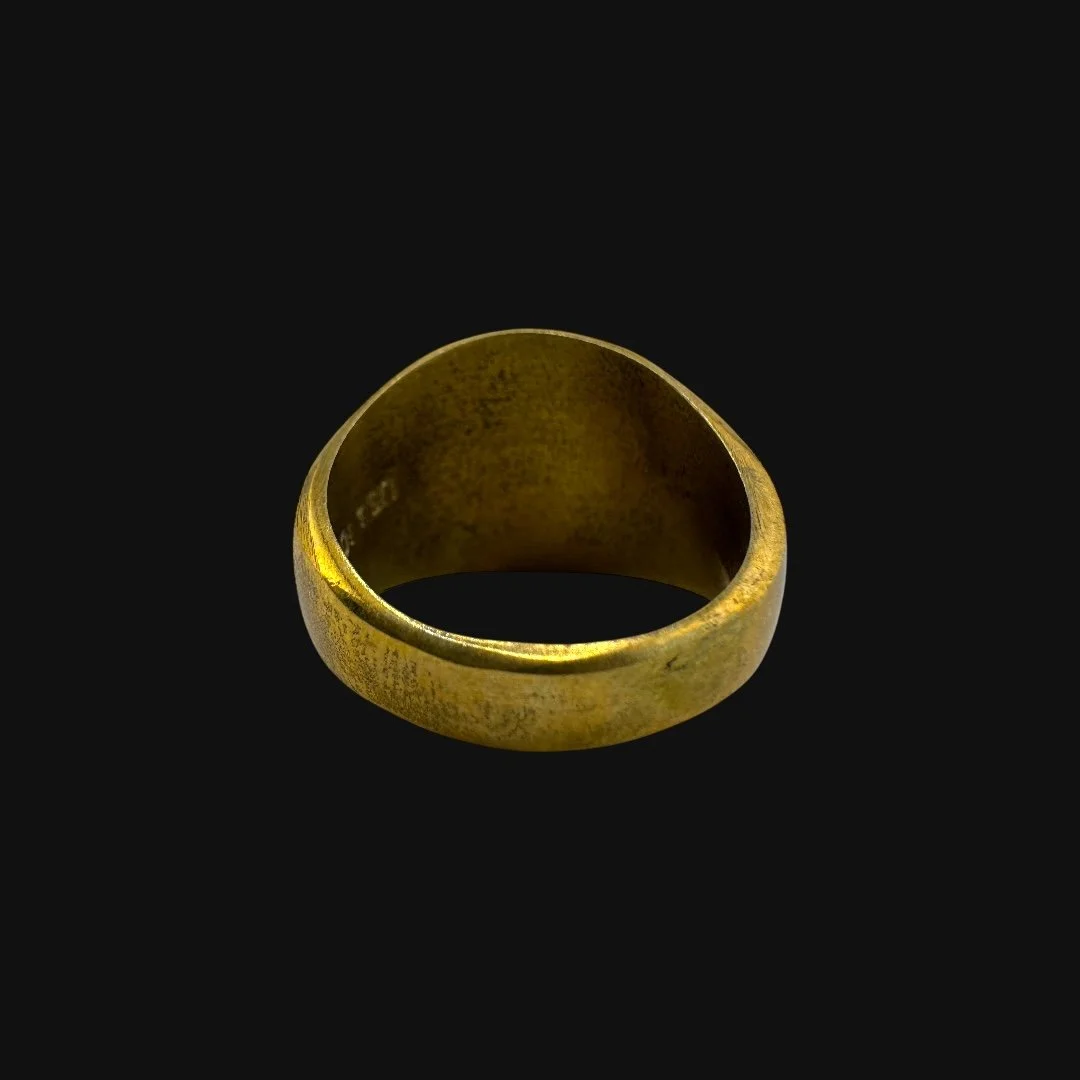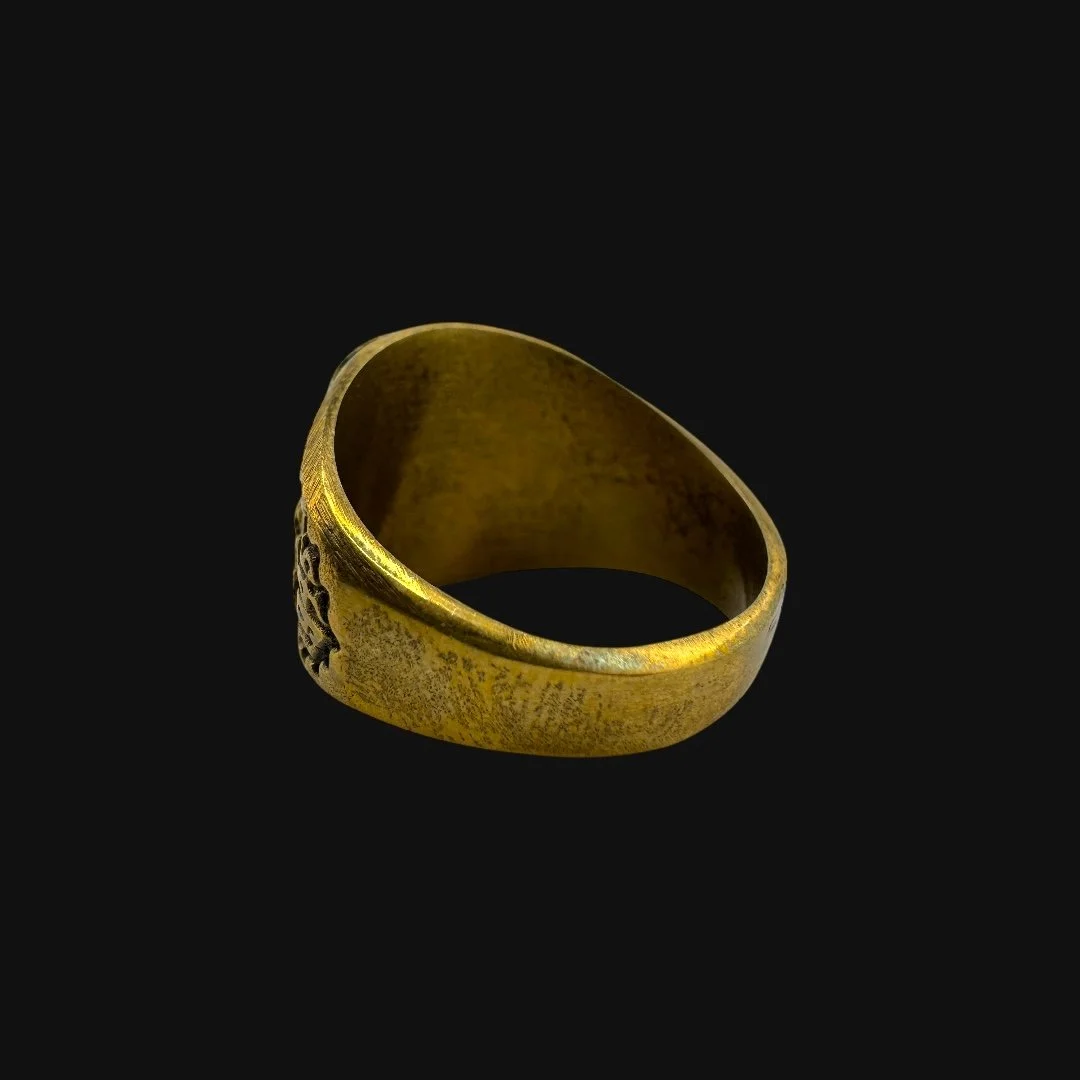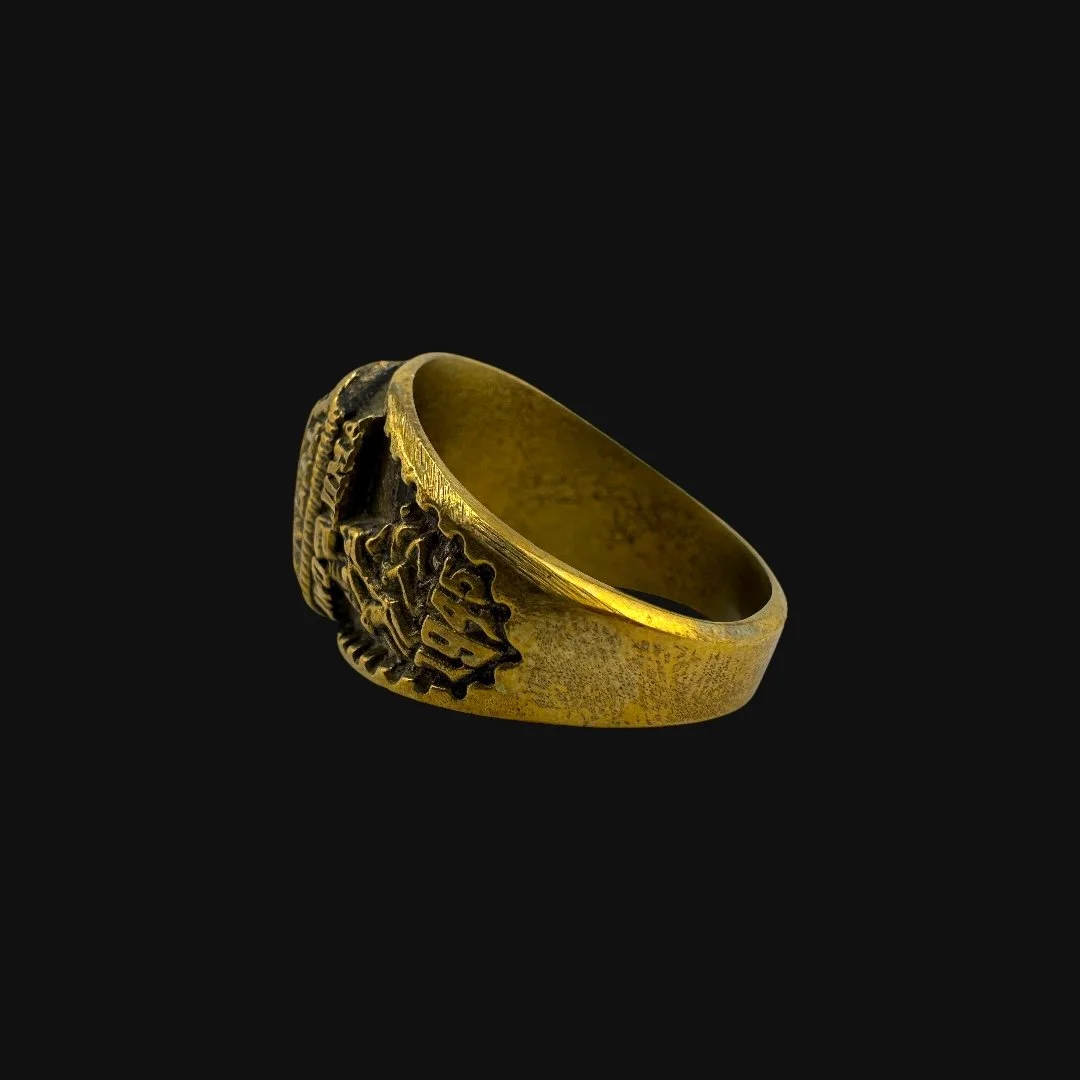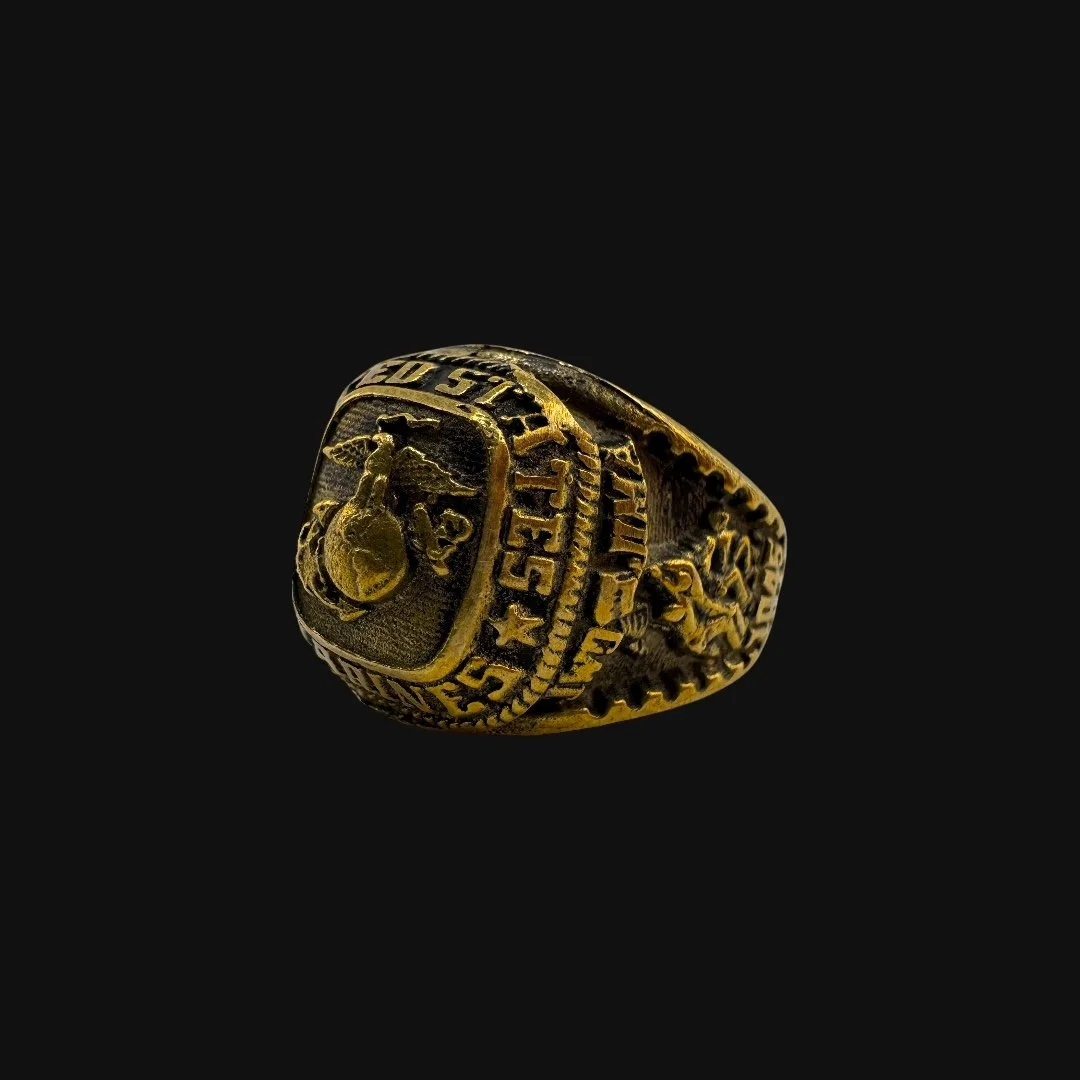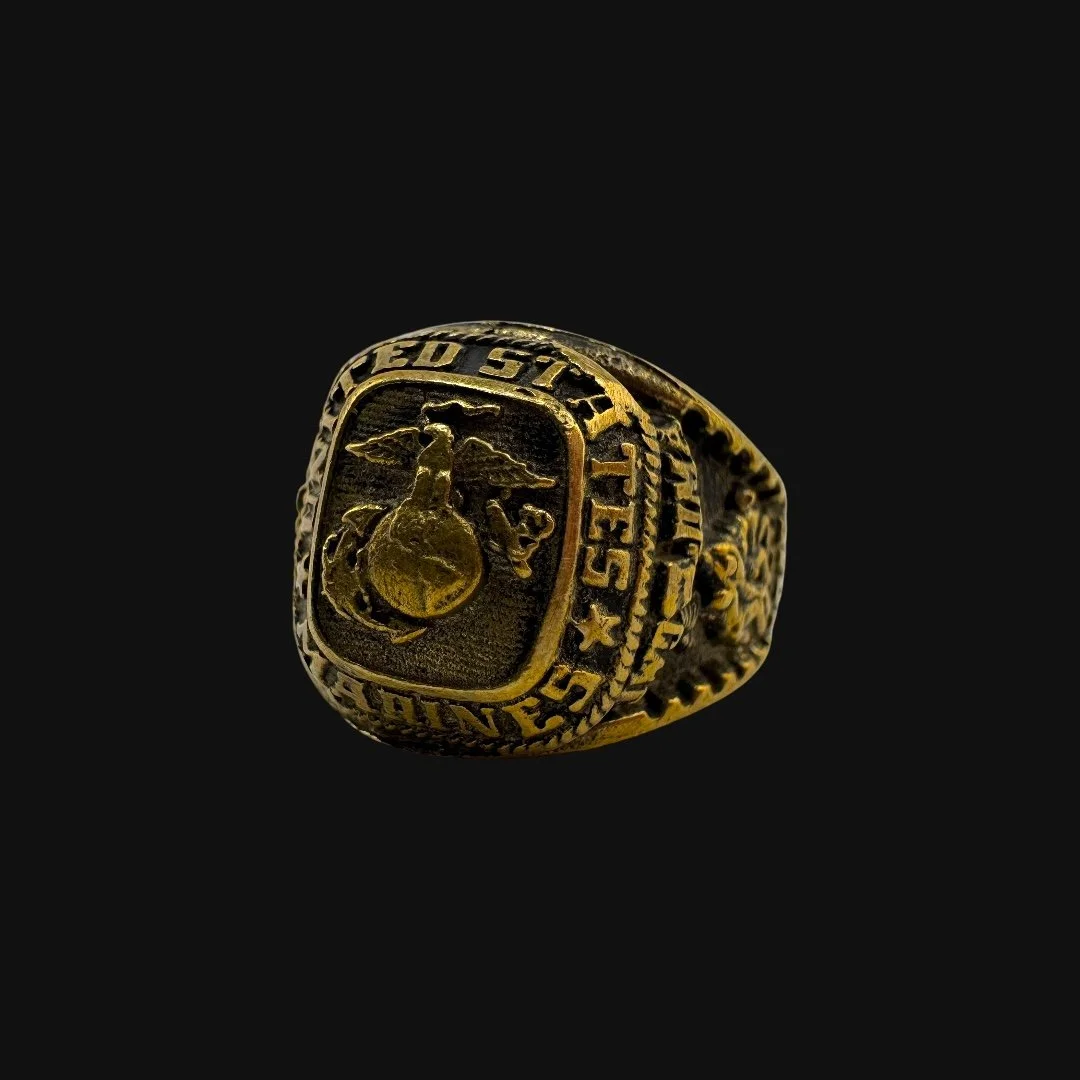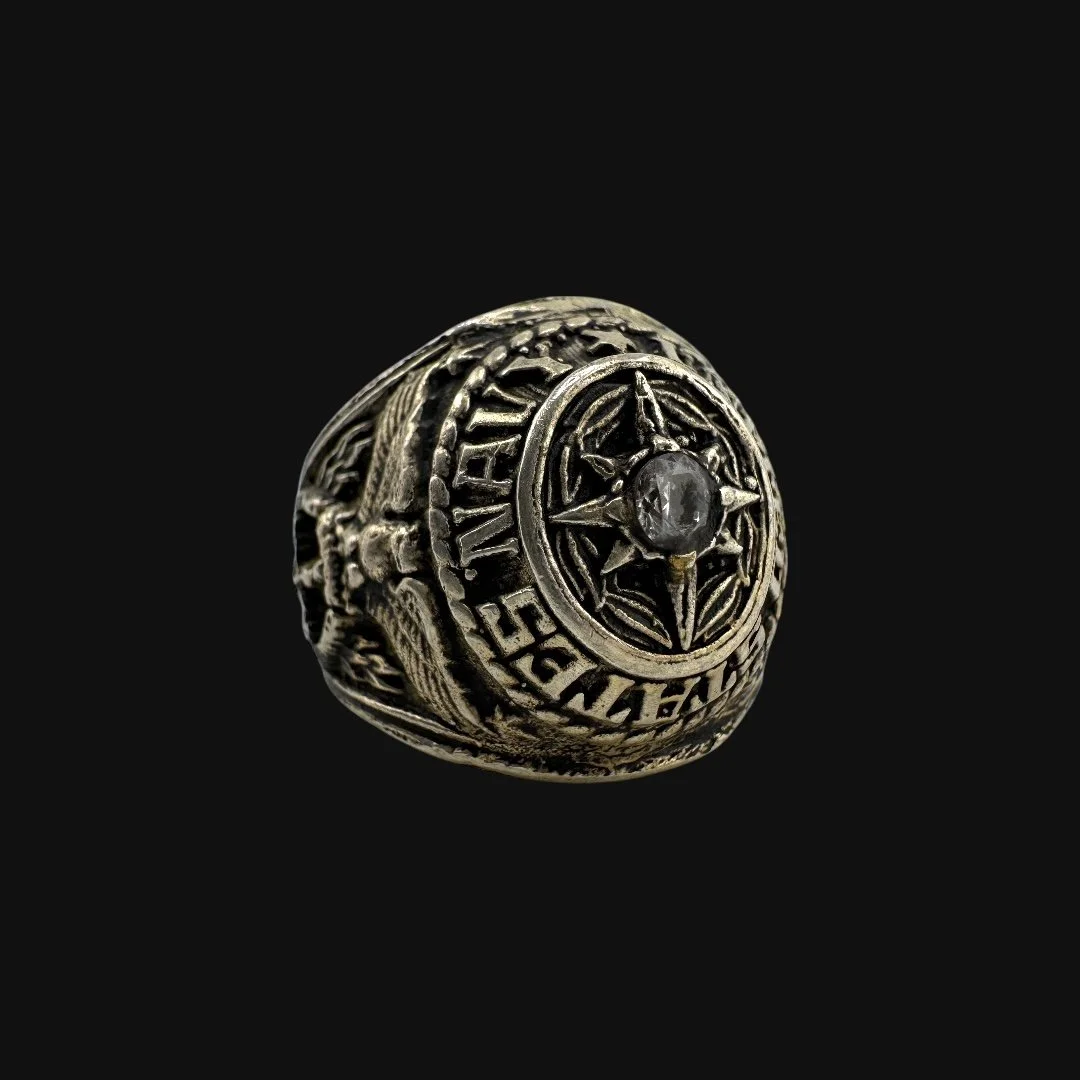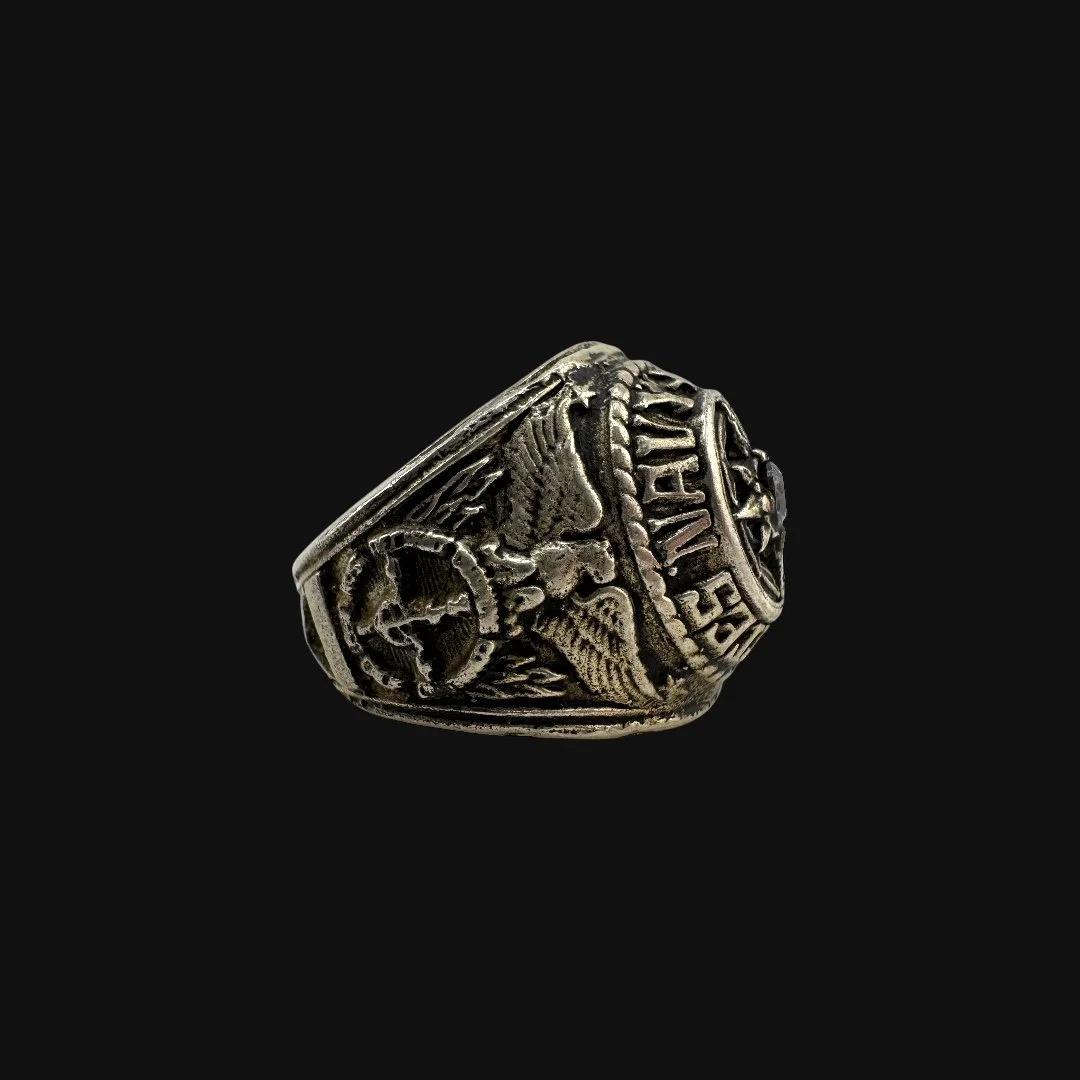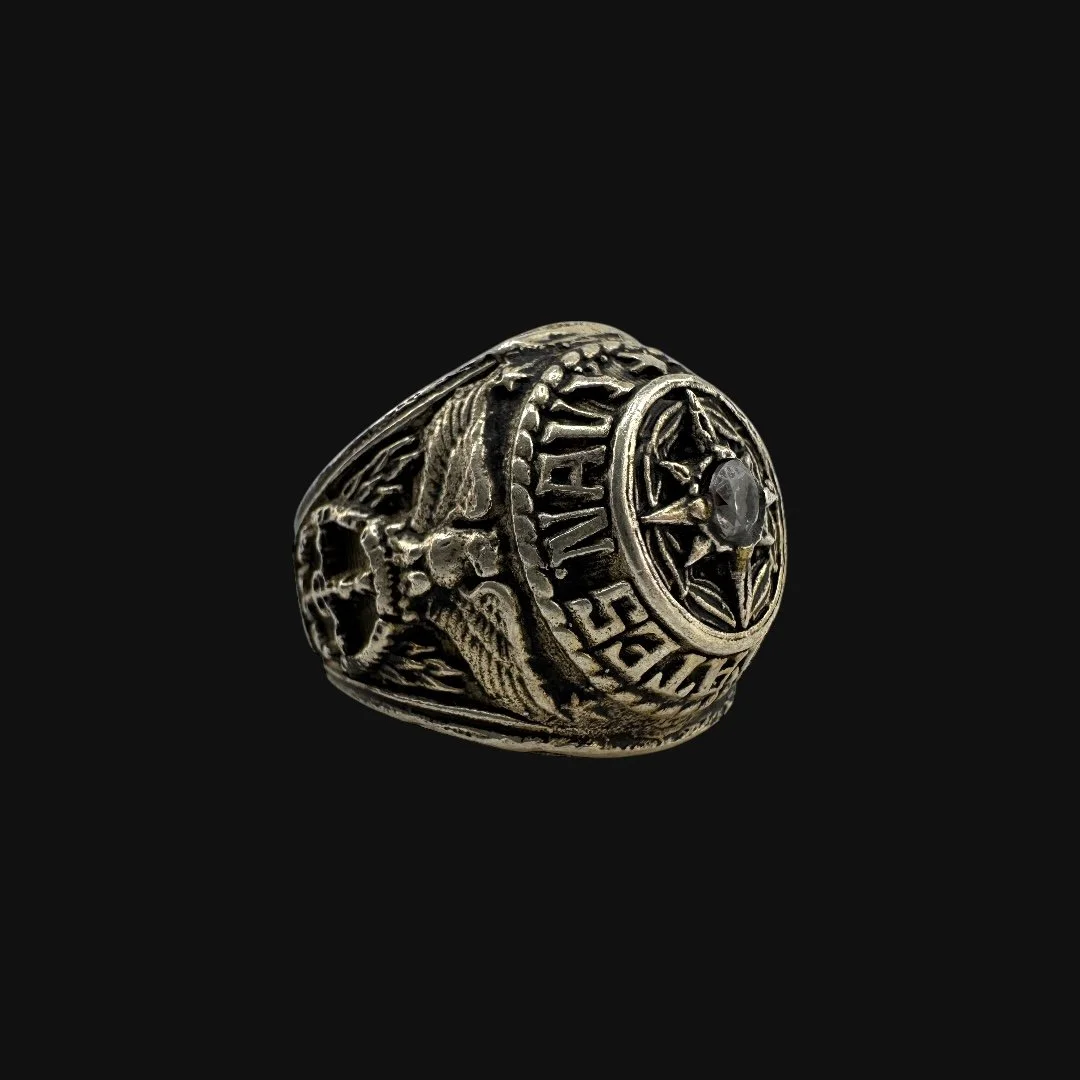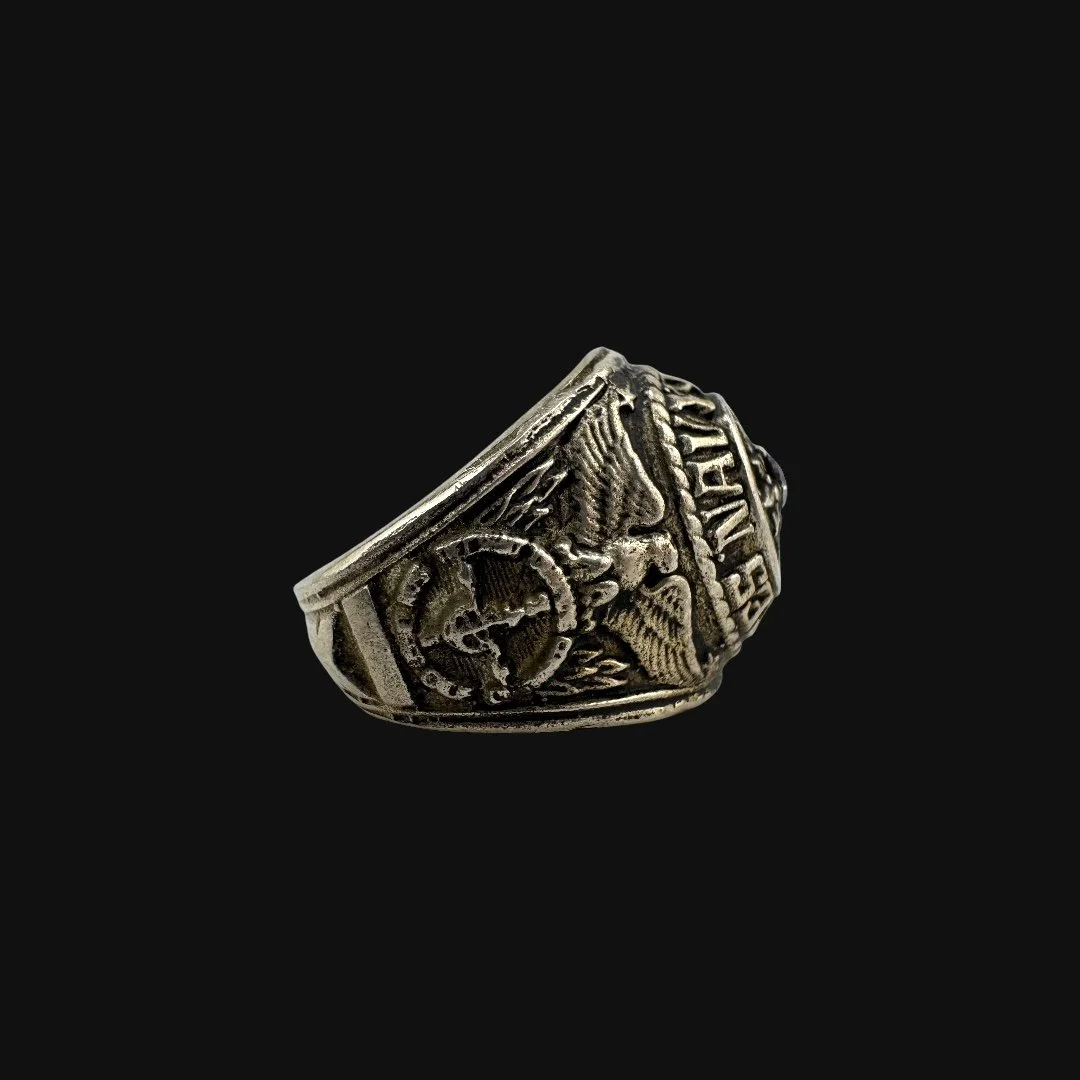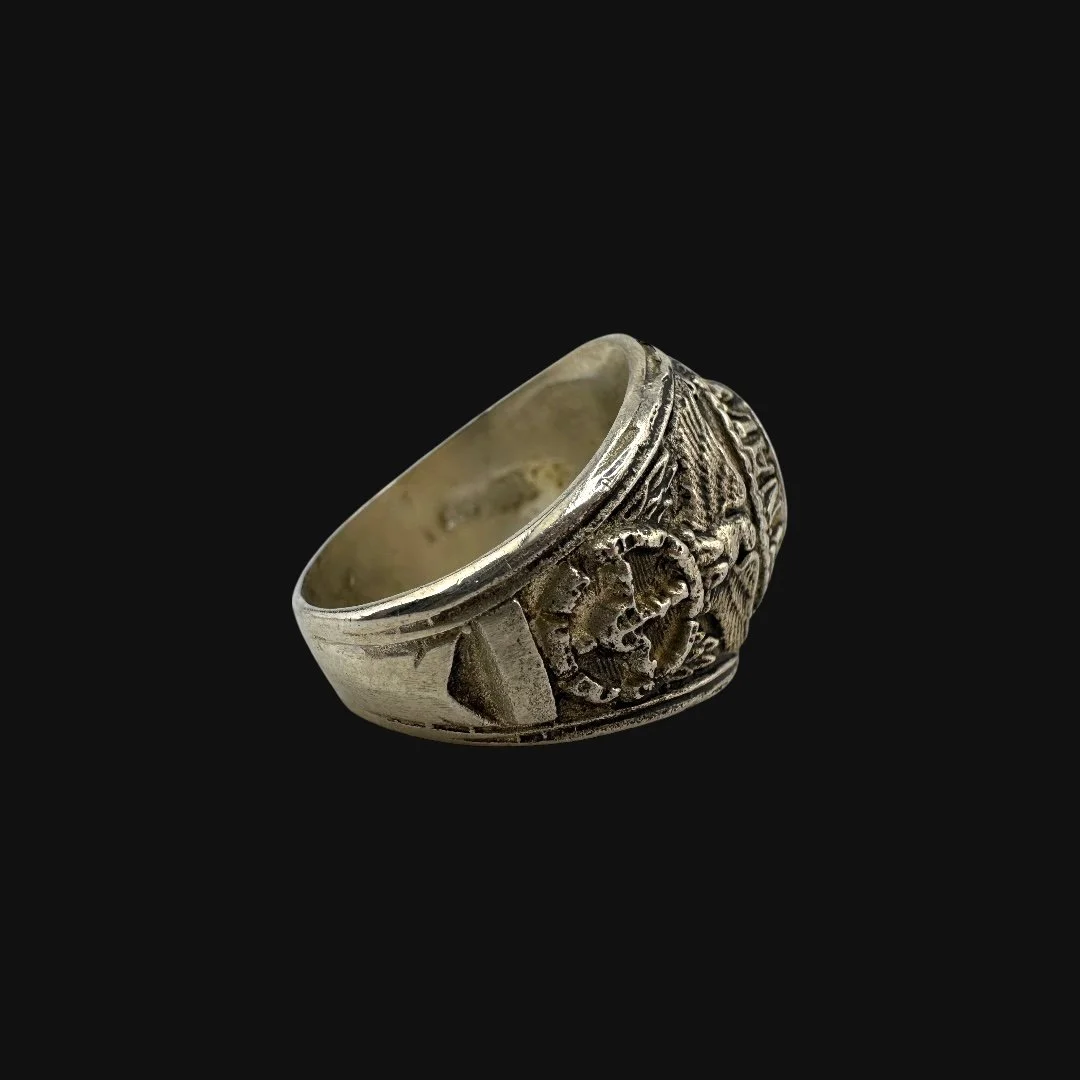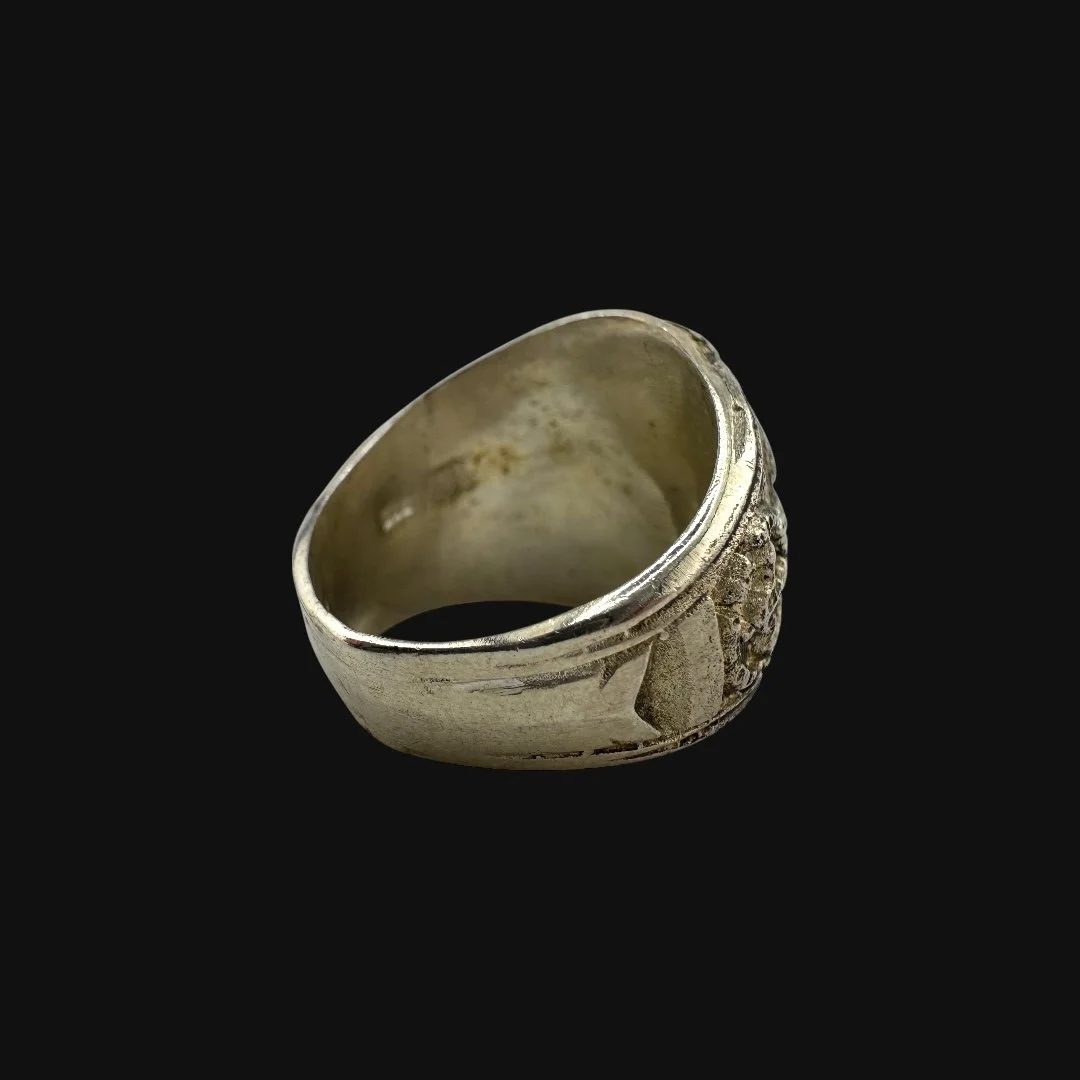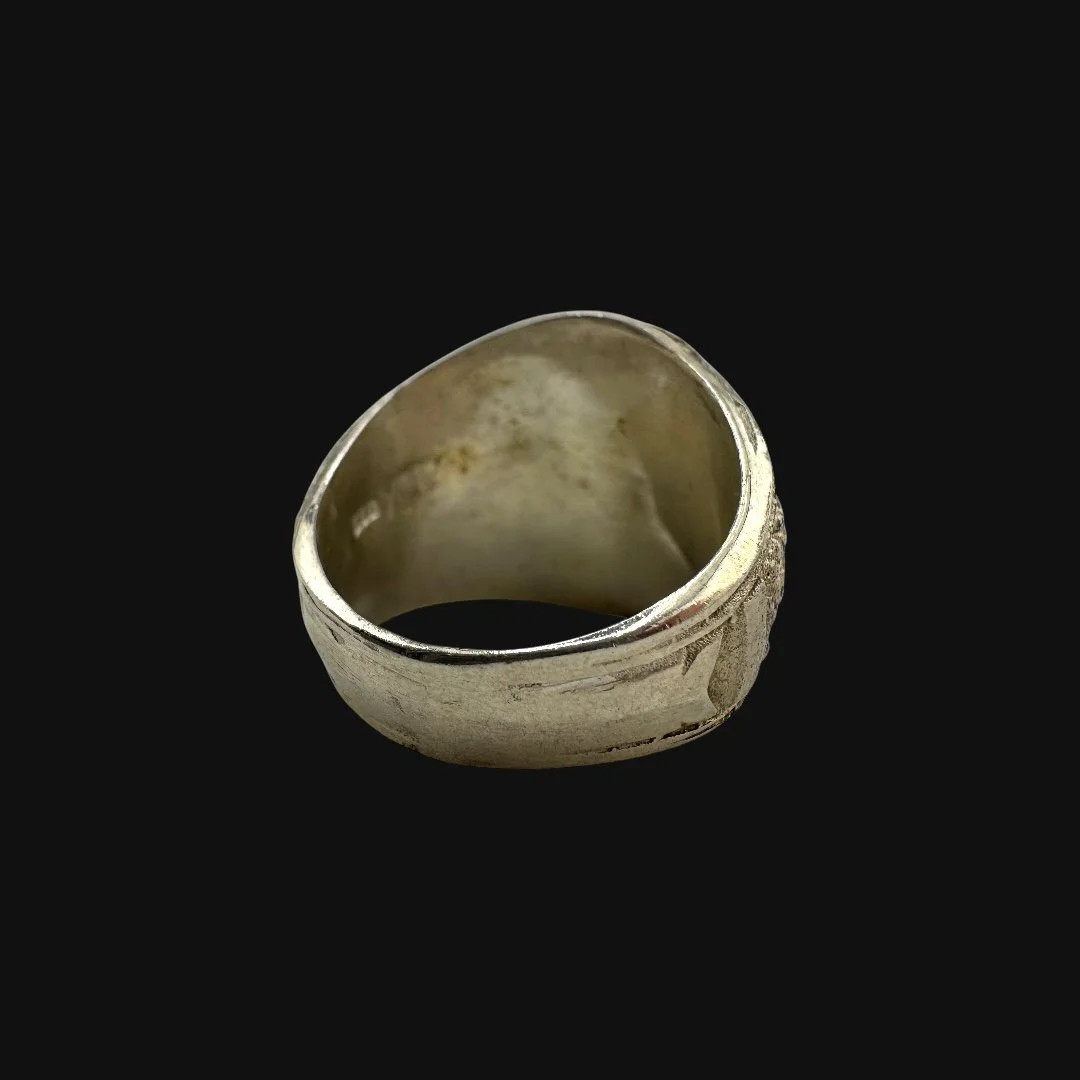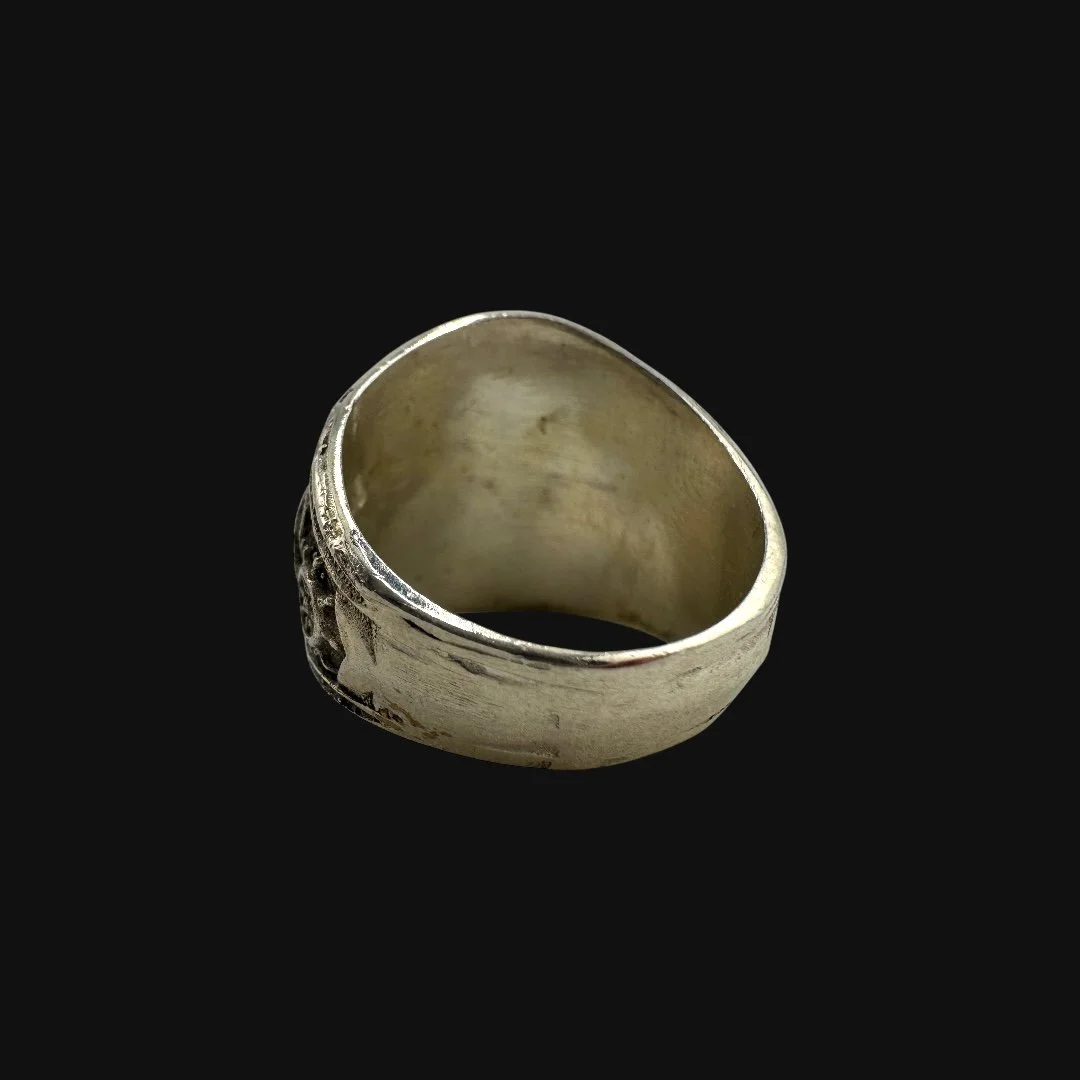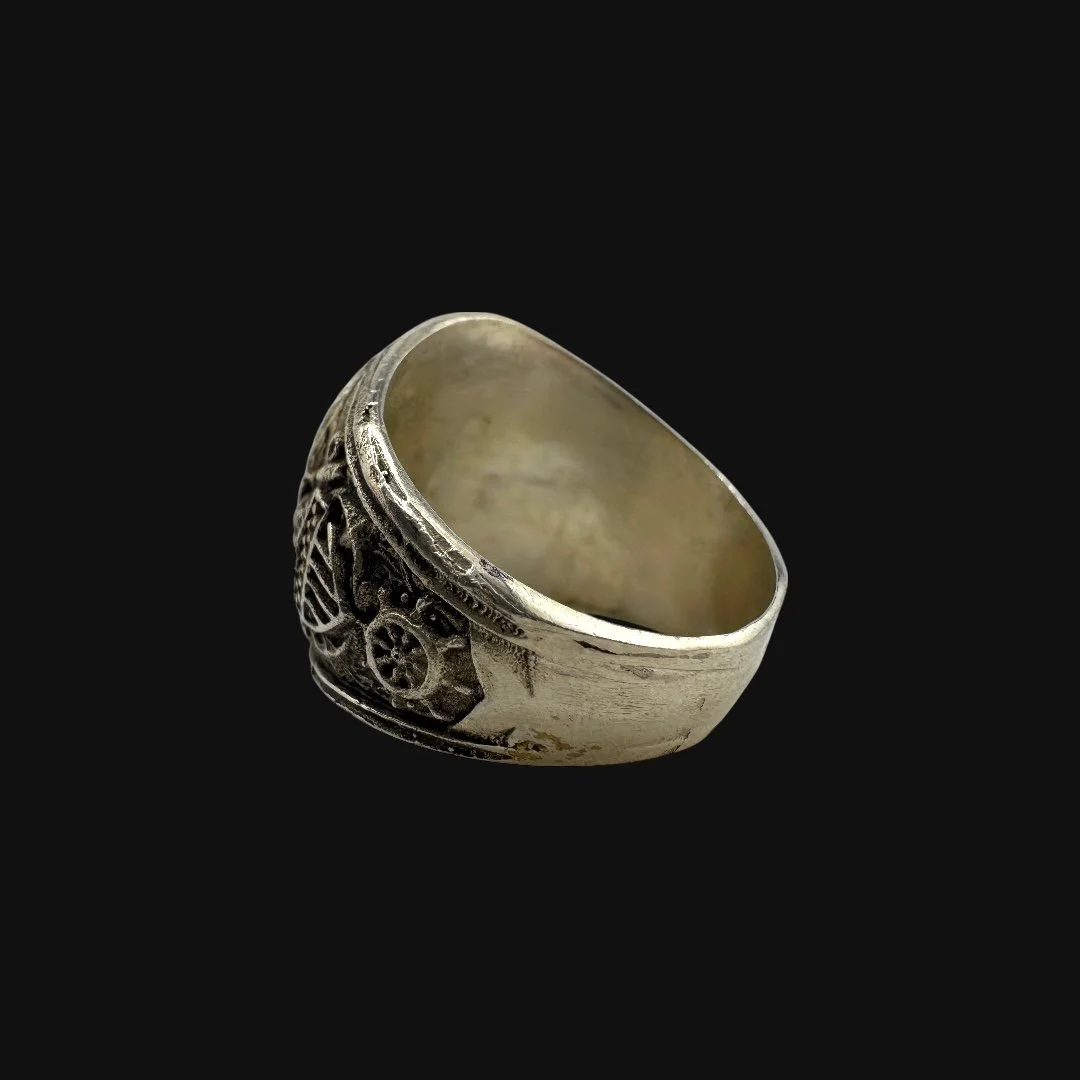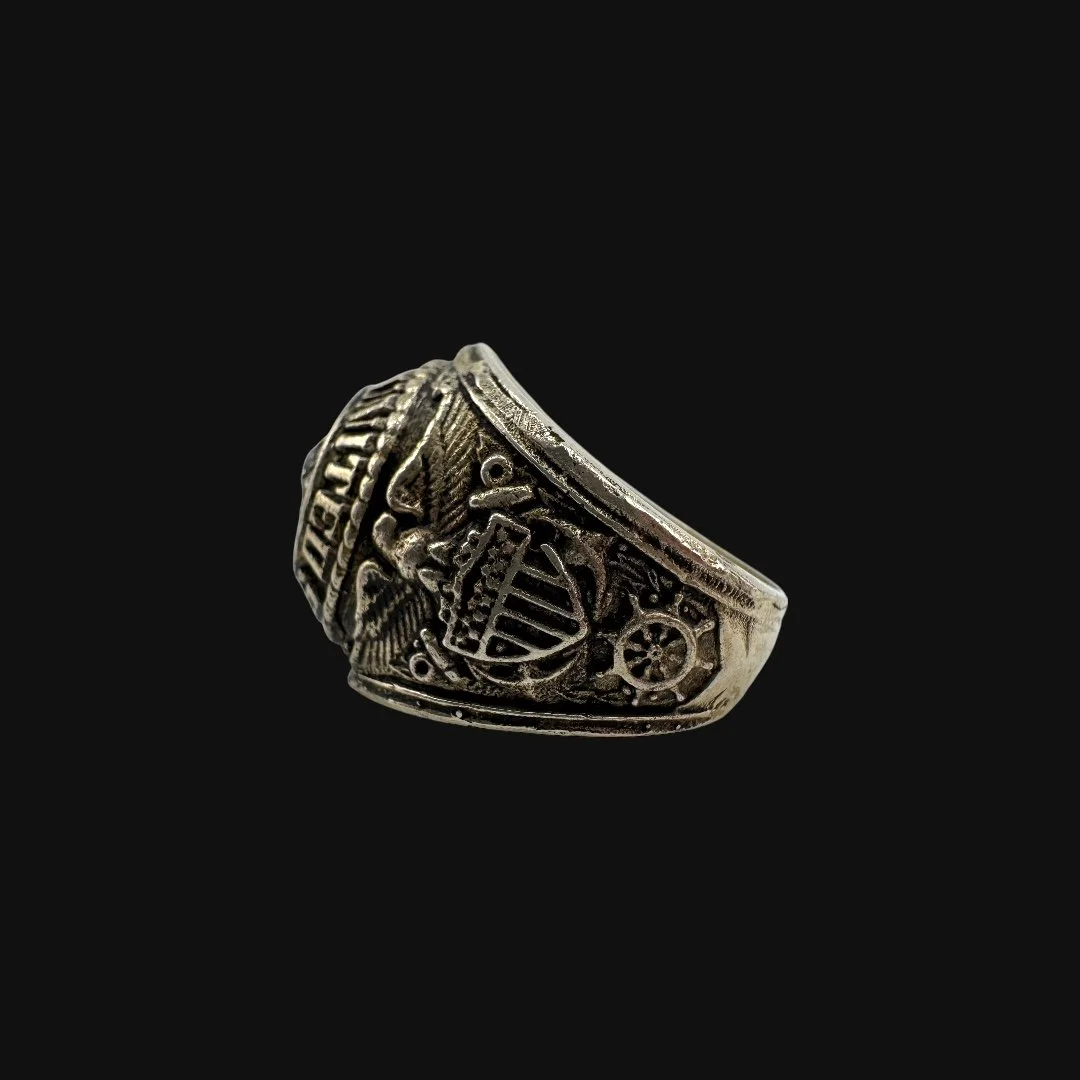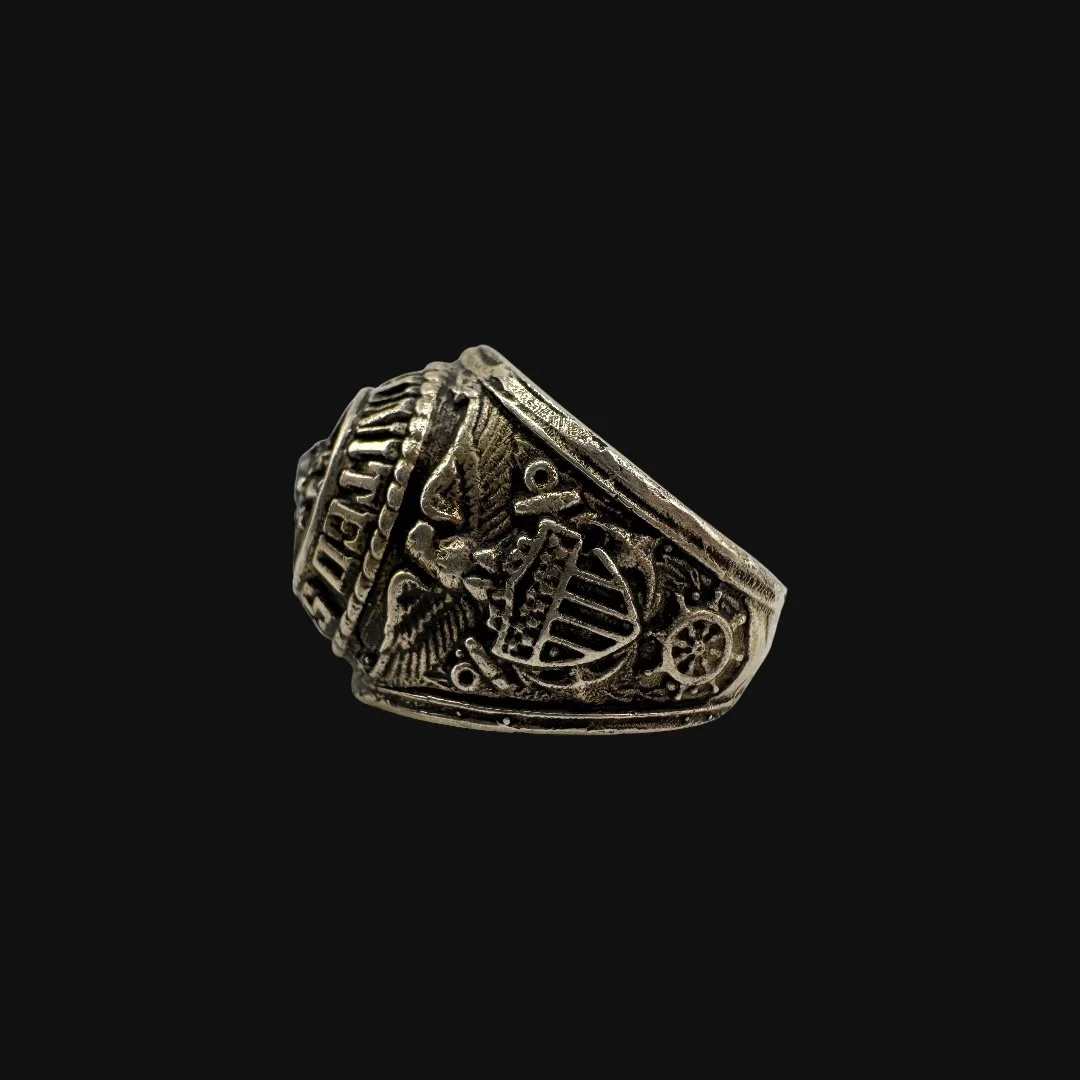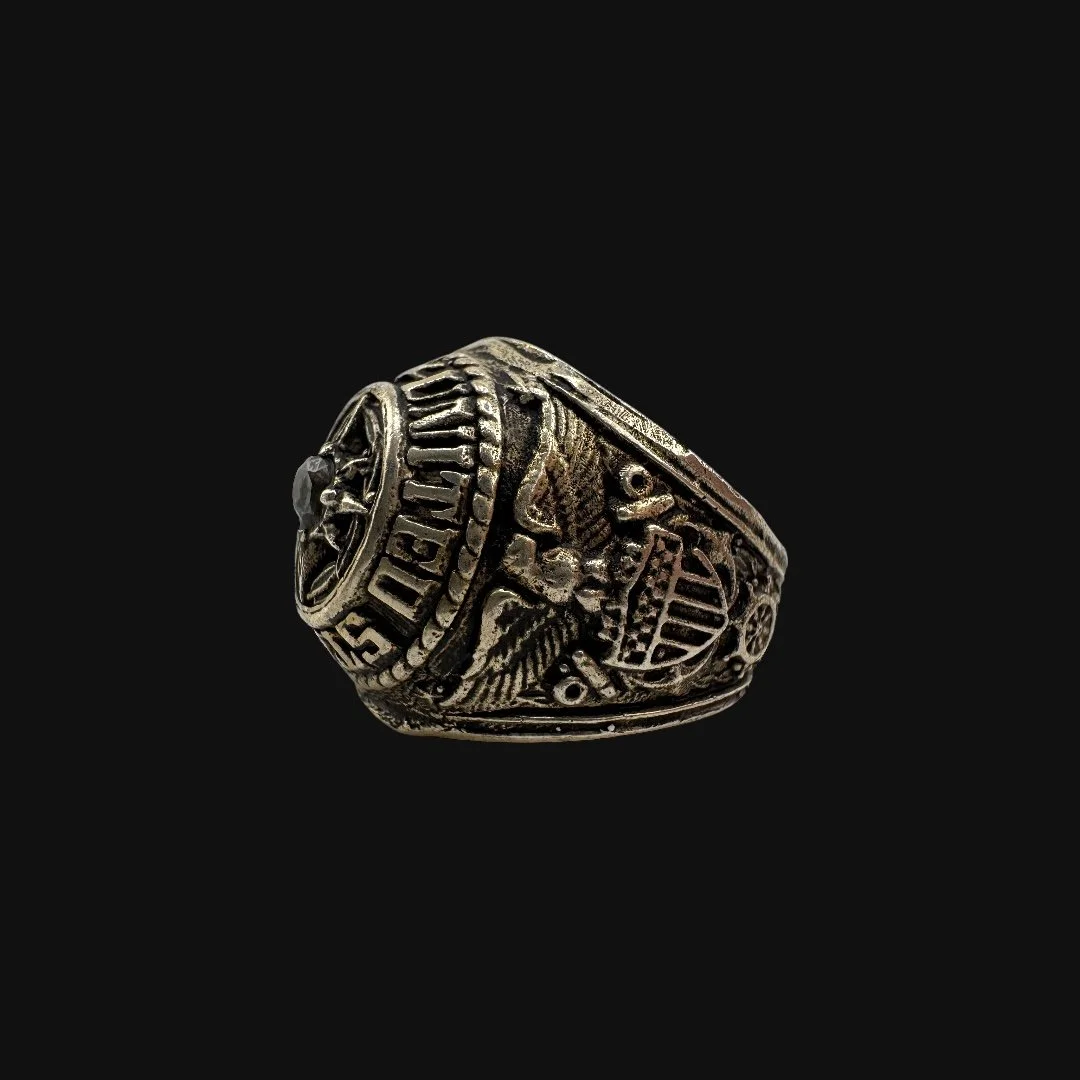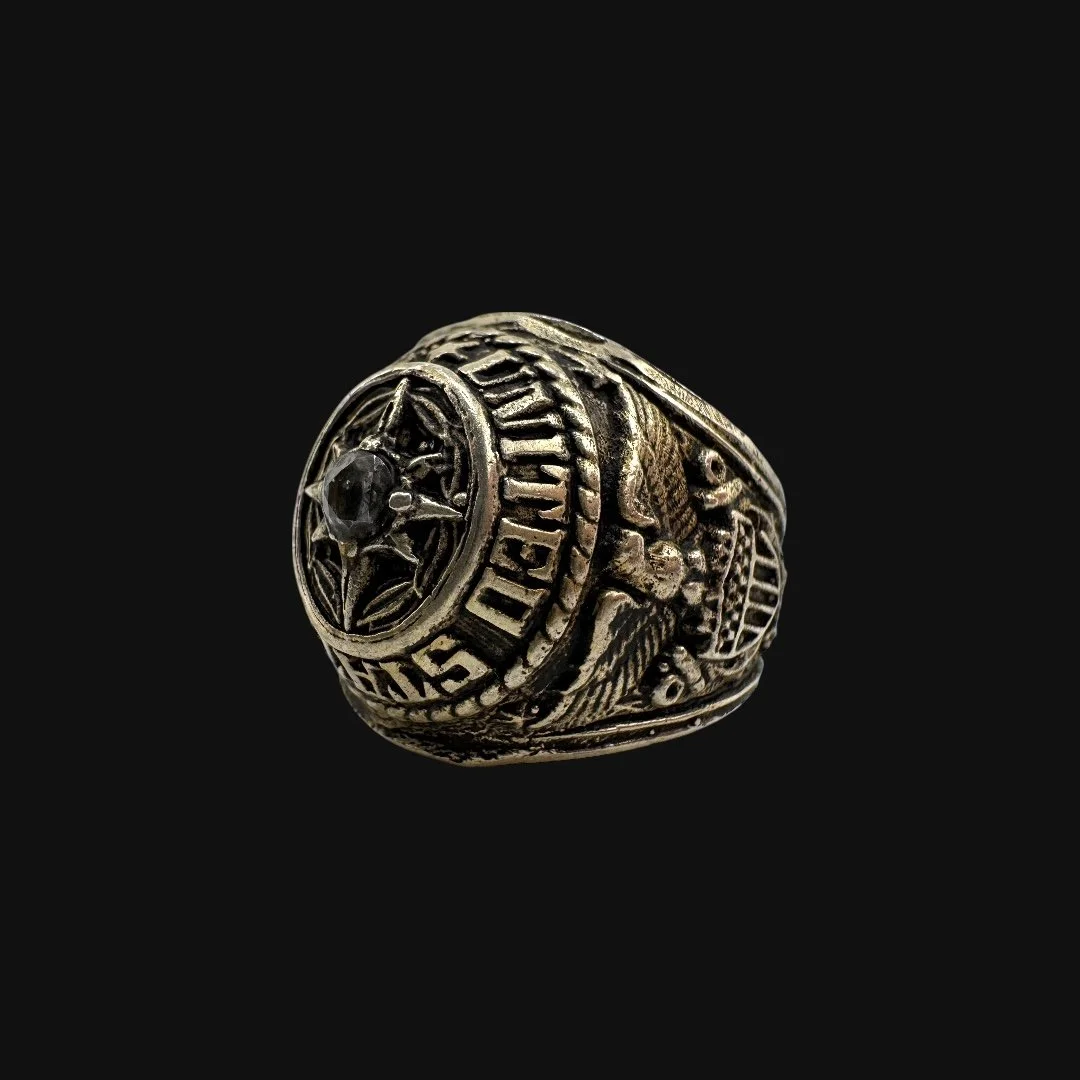 Image 1 of 14
Image 1 of 14

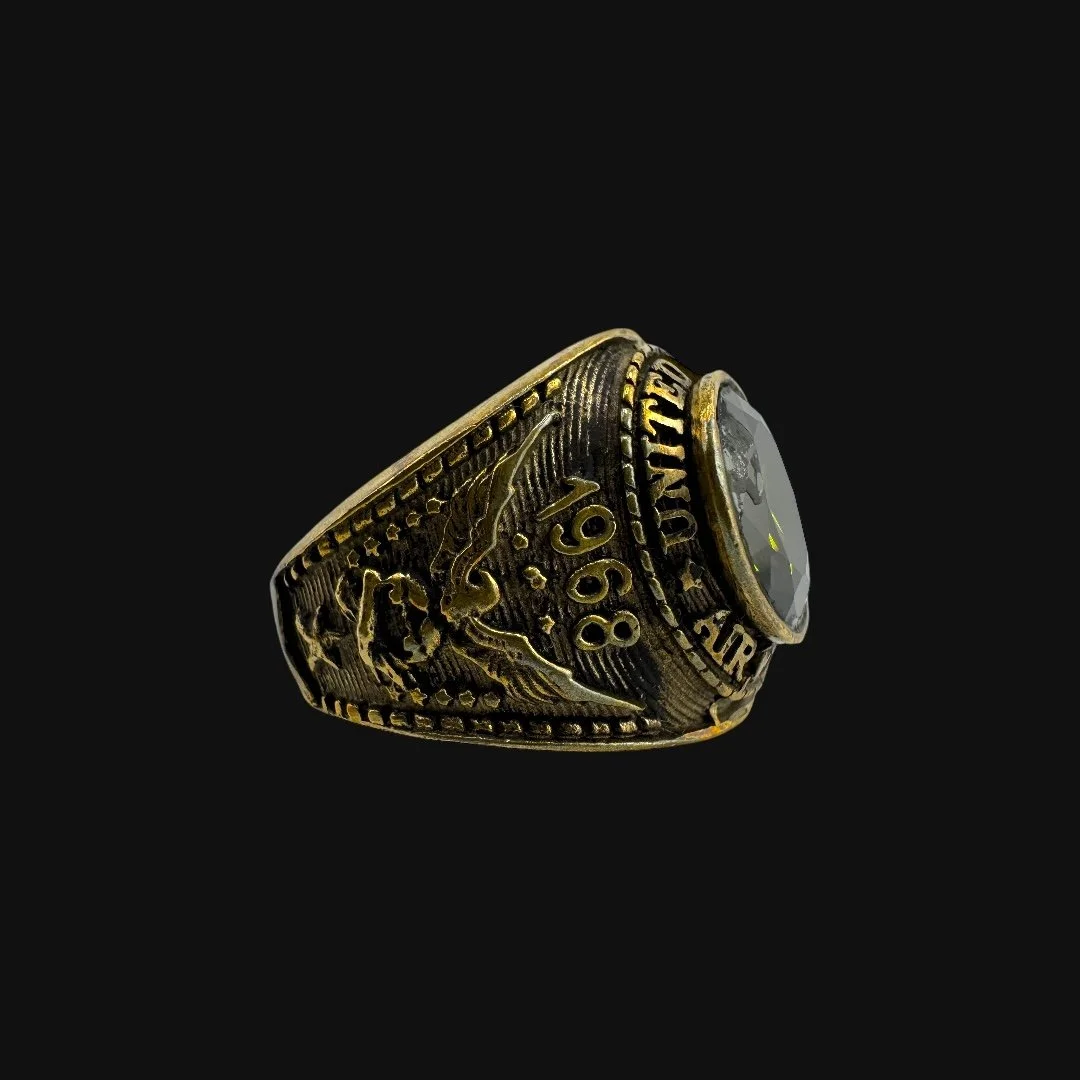 Image 2 of 14
Image 2 of 14

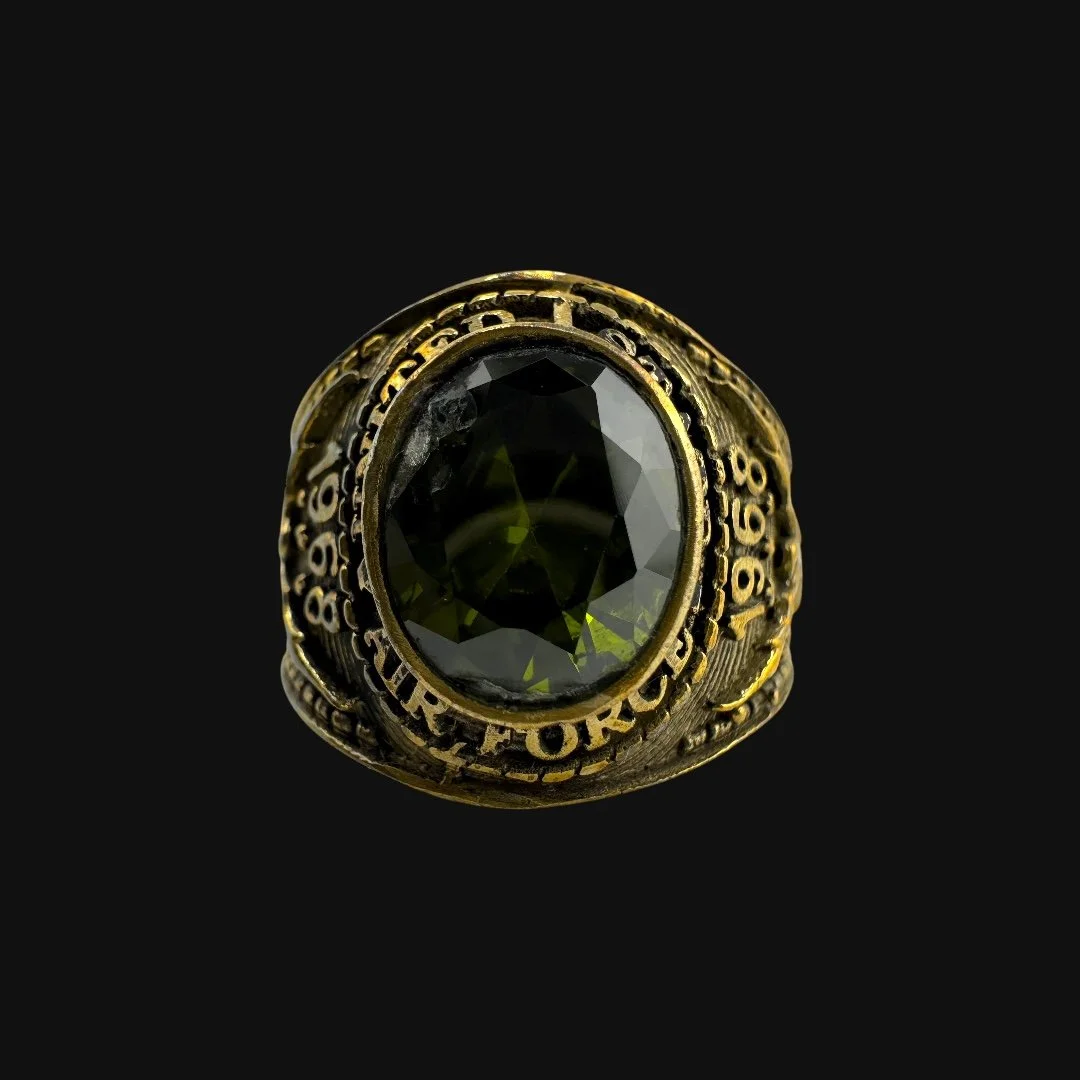 Image 3 of 14
Image 3 of 14

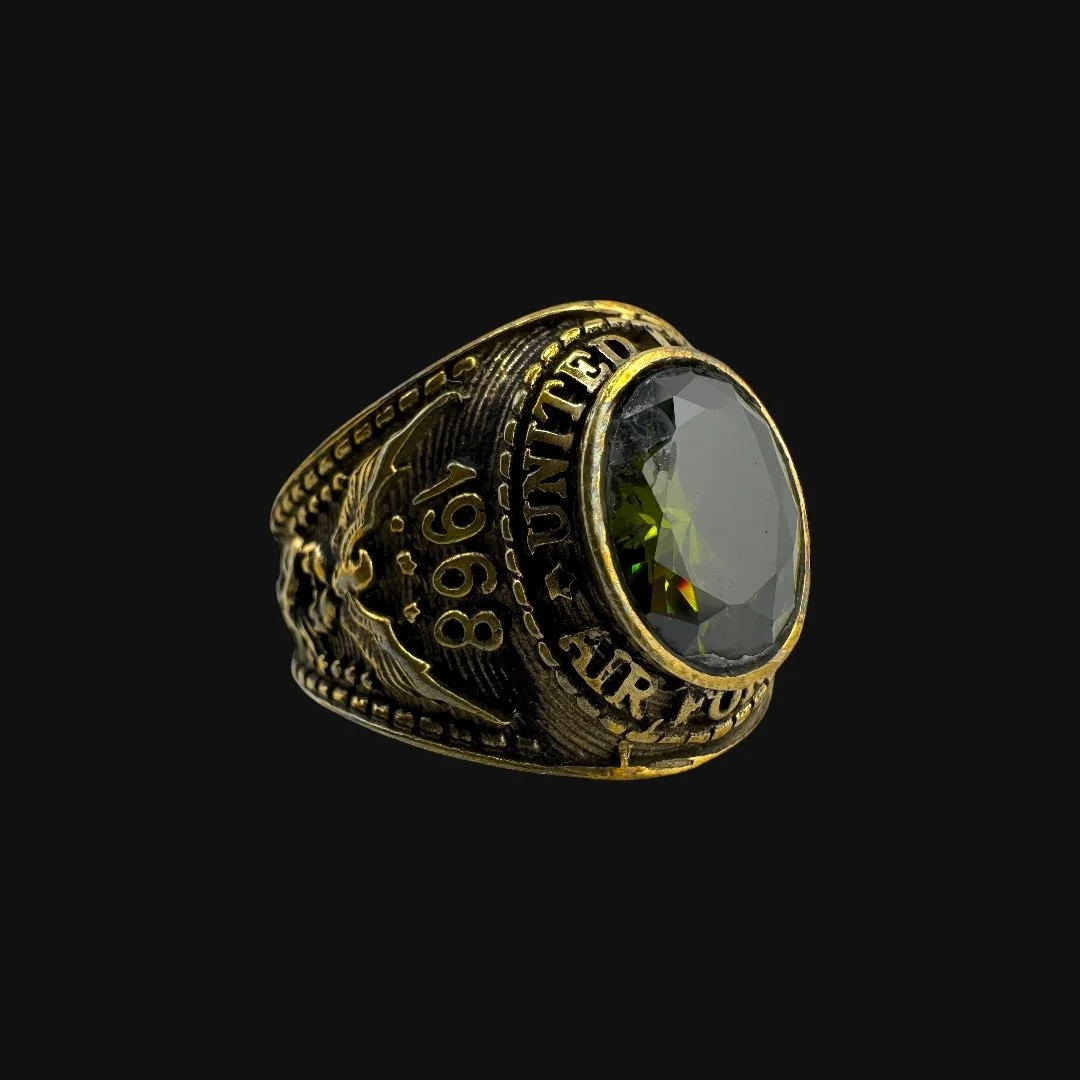 Image 4 of 14
Image 4 of 14

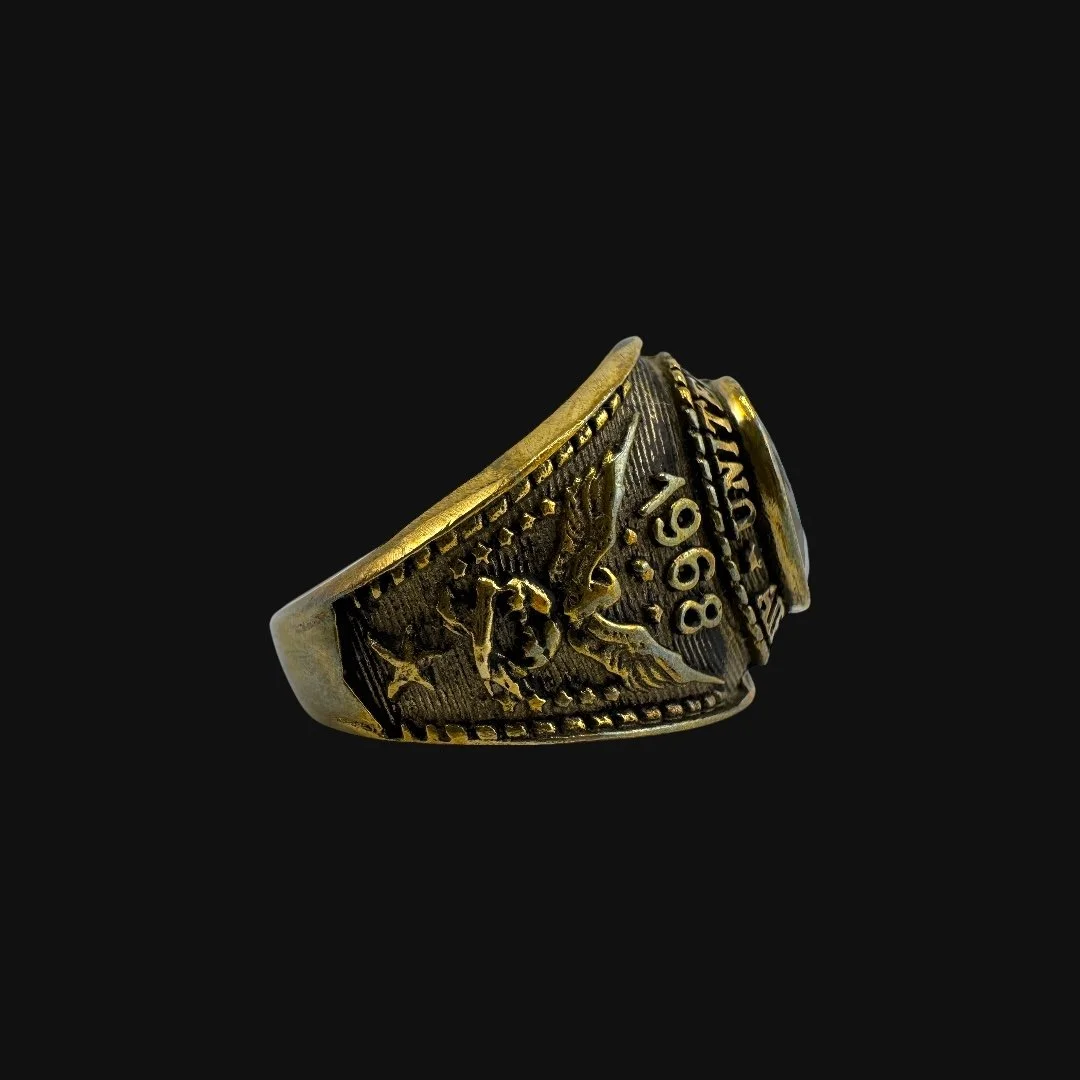 Image 5 of 14
Image 5 of 14

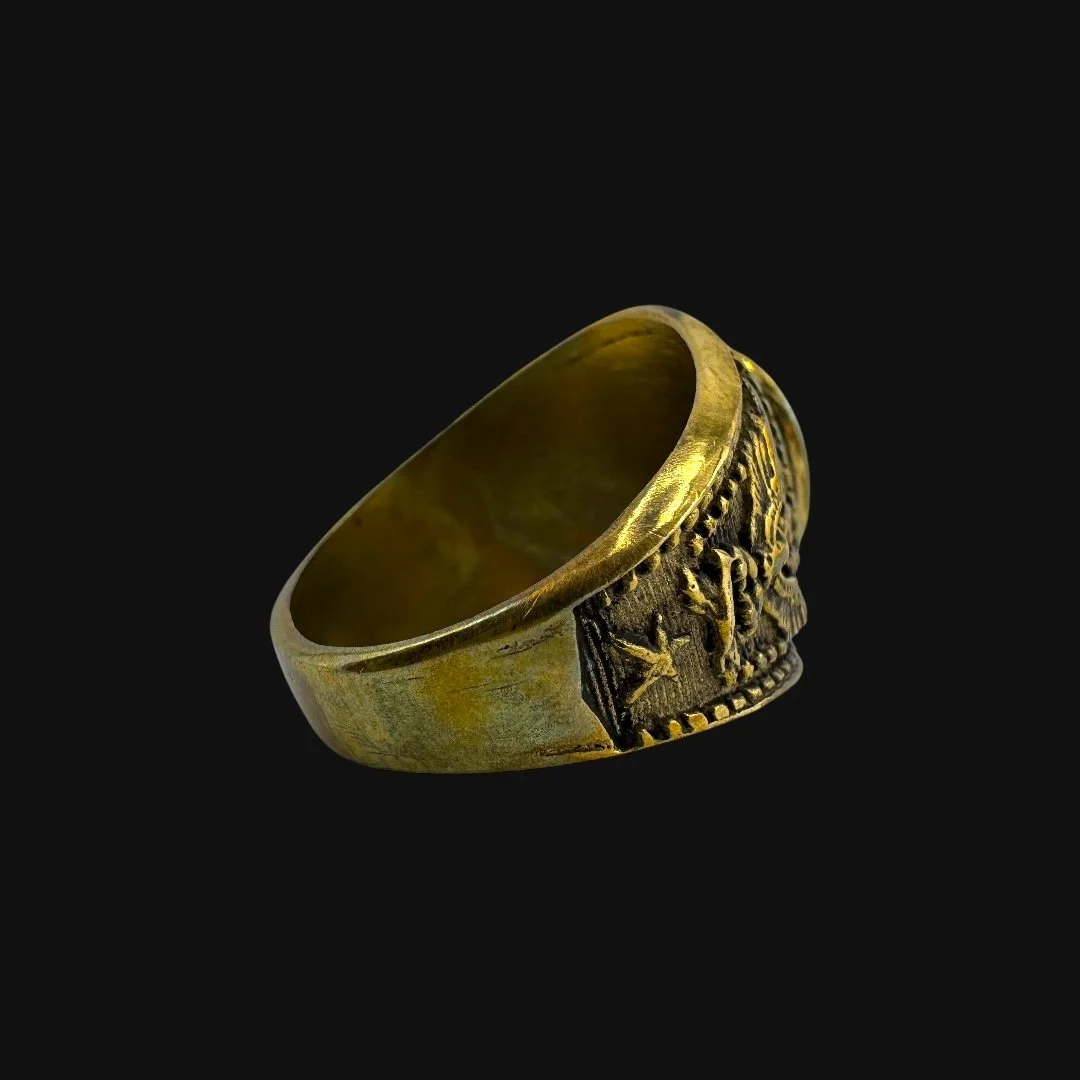 Image 6 of 14
Image 6 of 14

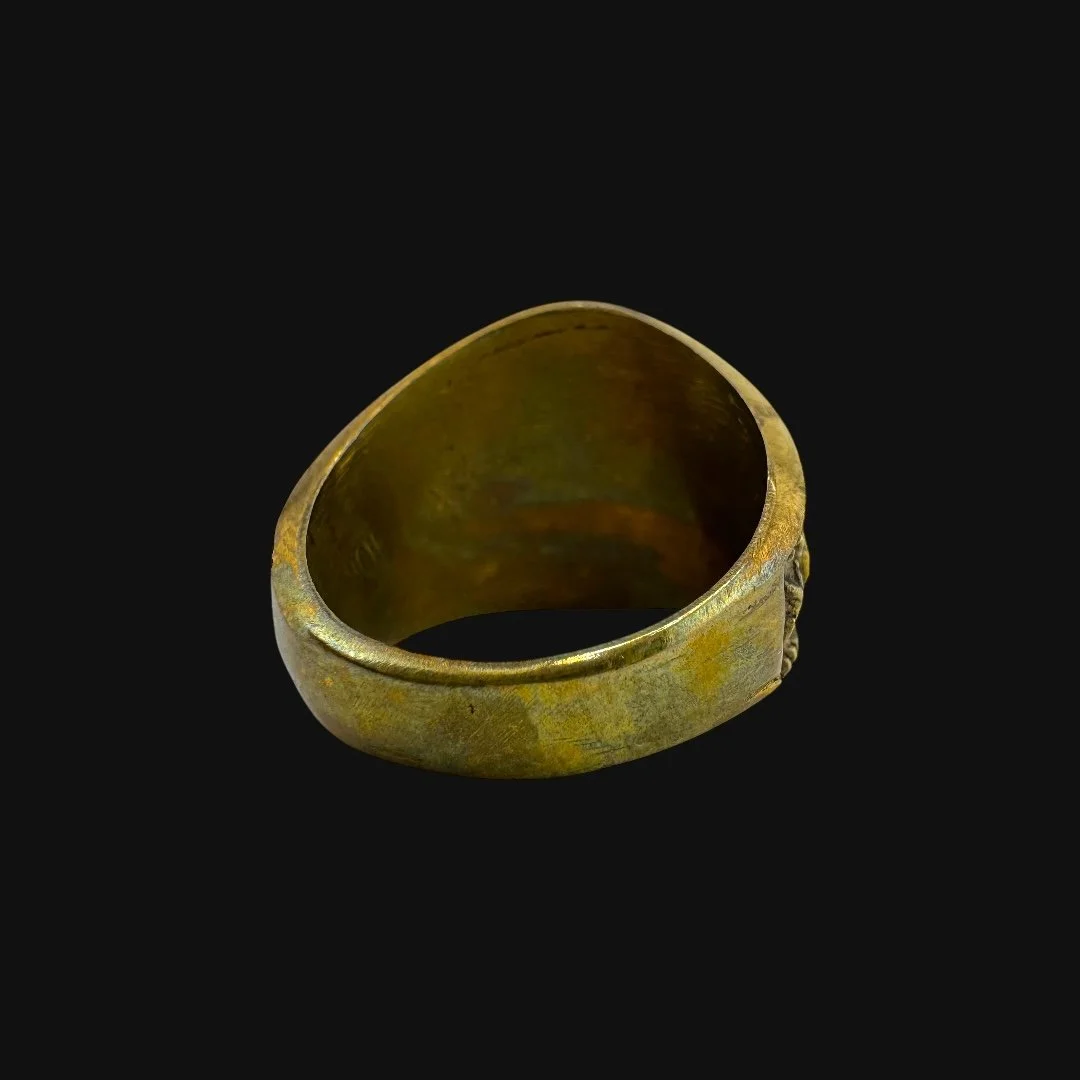 Image 7 of 14
Image 7 of 14

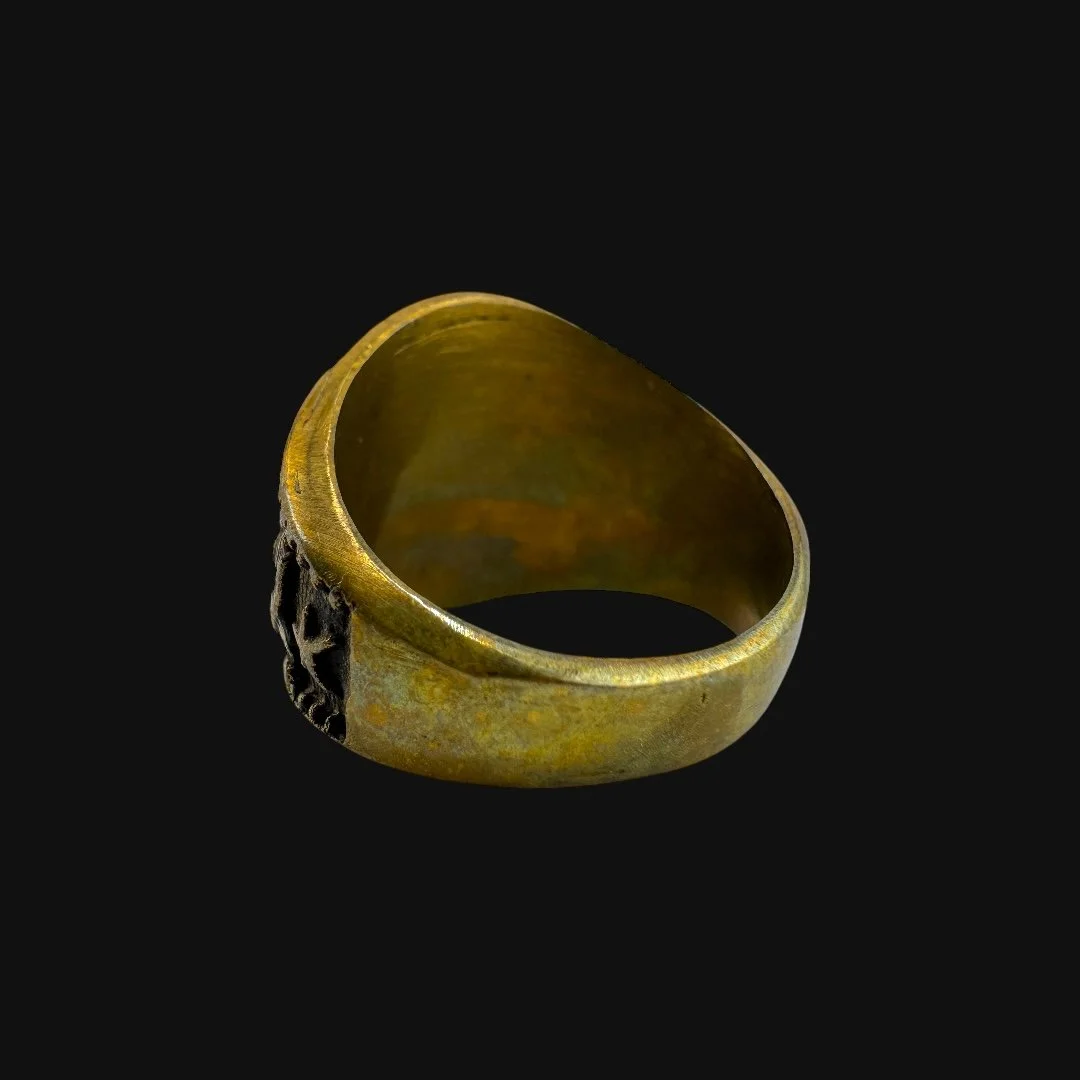 Image 8 of 14
Image 8 of 14

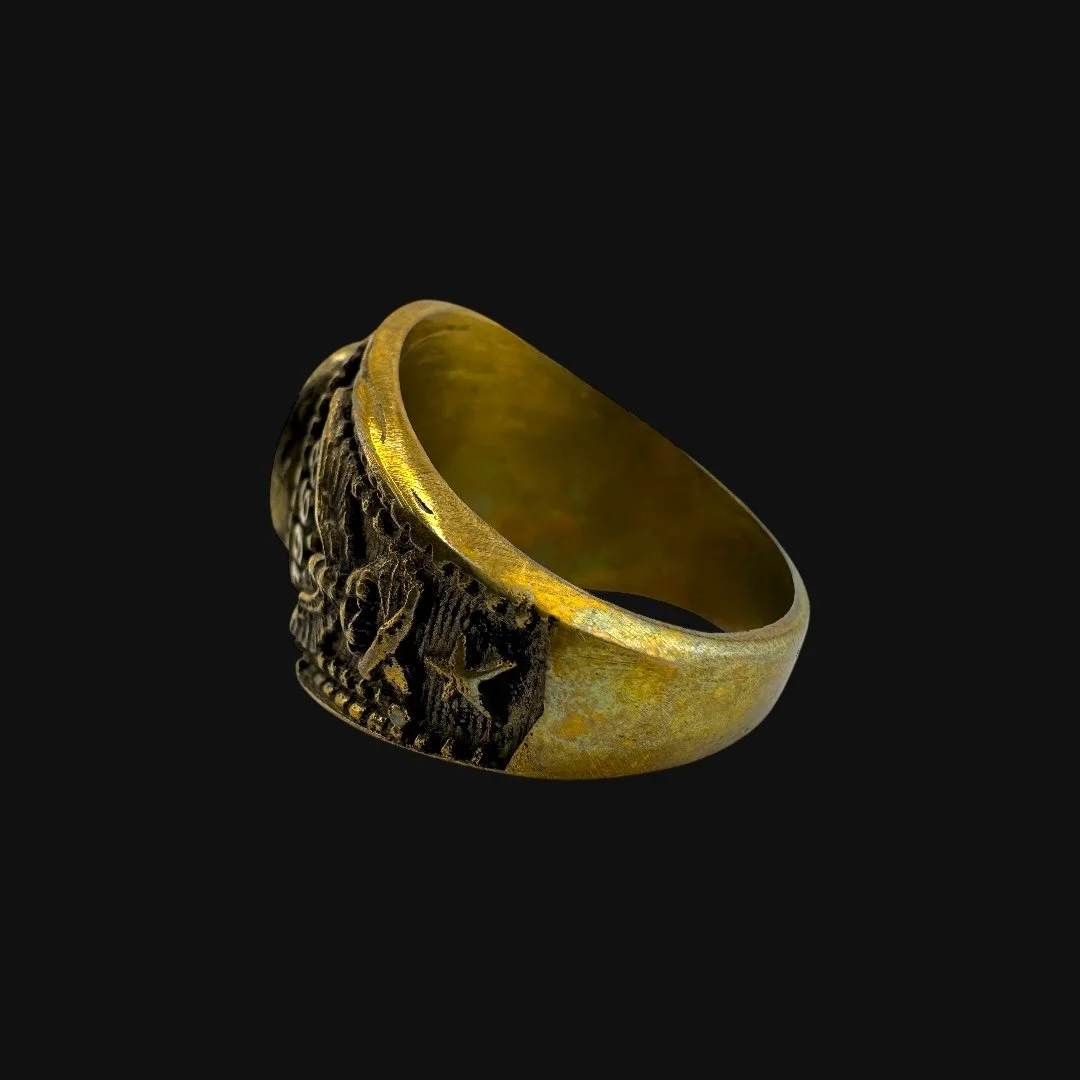 Image 9 of 14
Image 9 of 14

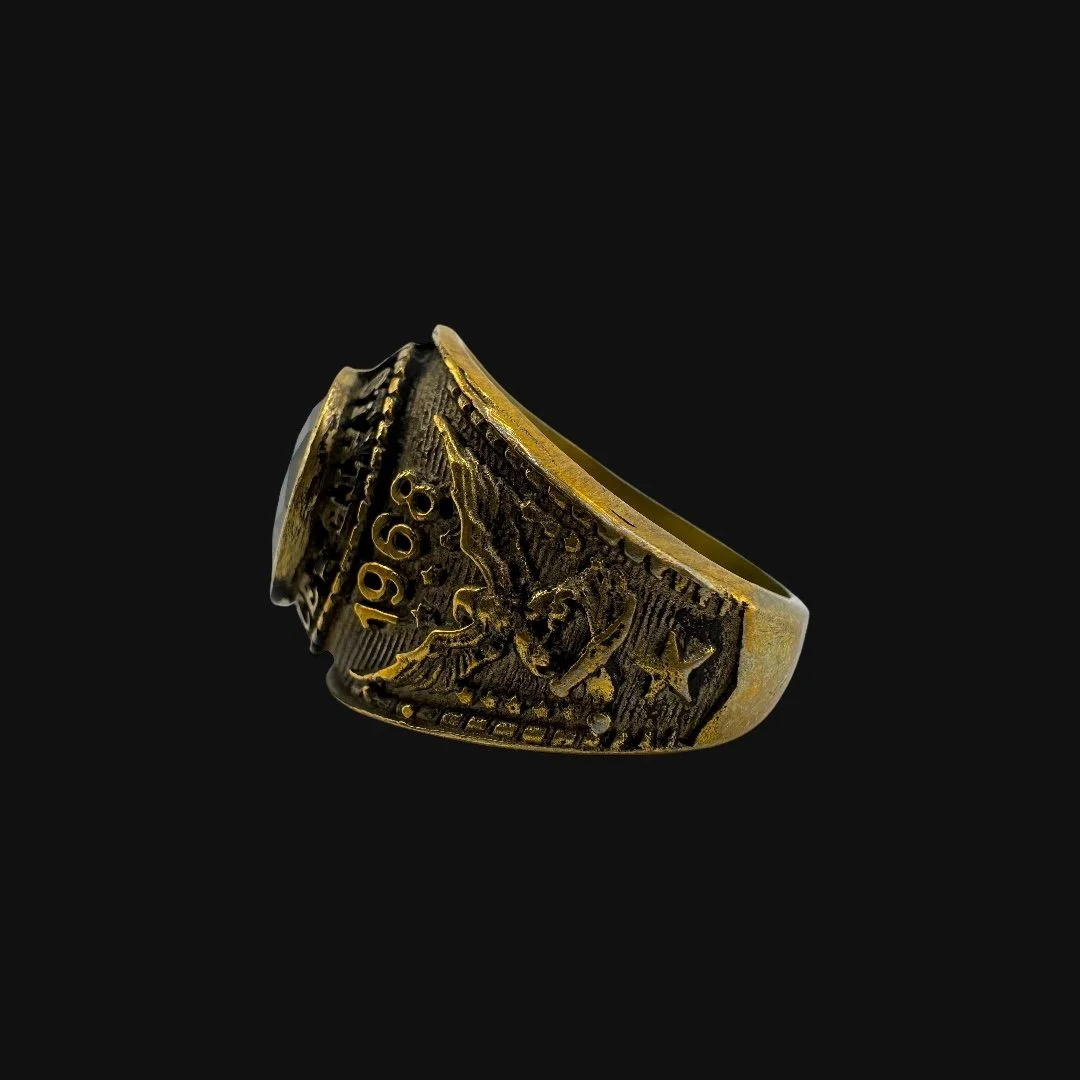 Image 10 of 14
Image 10 of 14

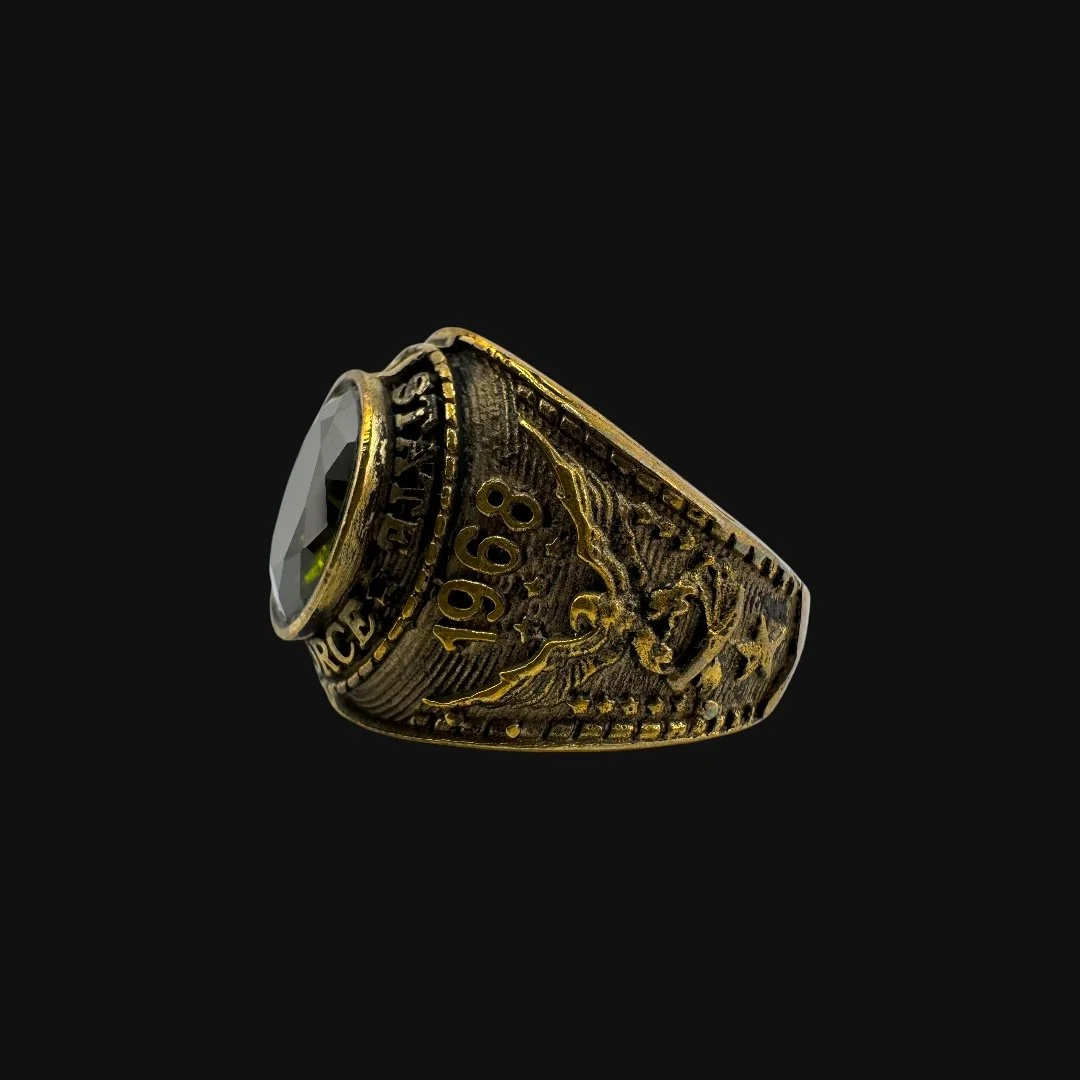 Image 11 of 14
Image 11 of 14

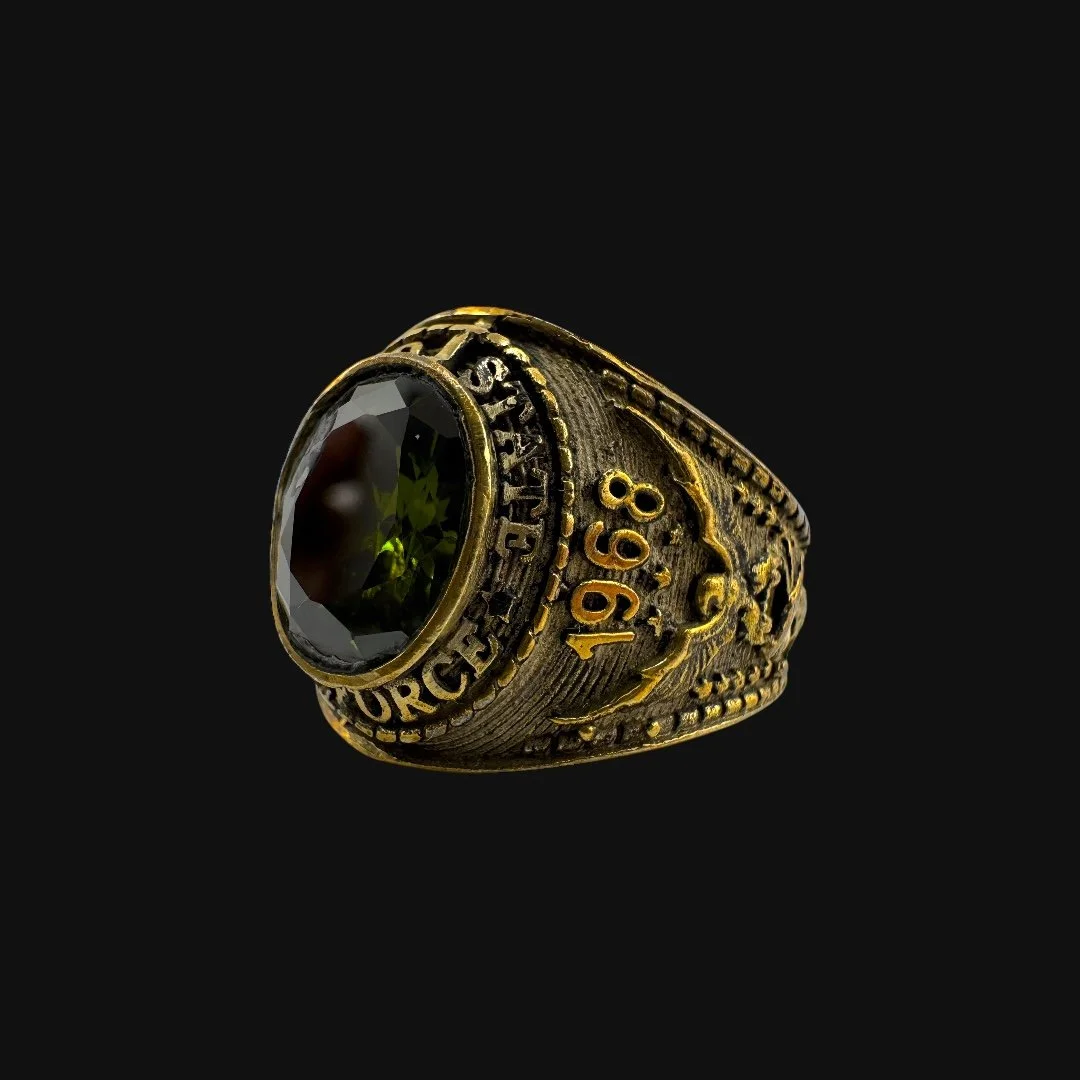 Image 12 of 14
Image 12 of 14

 Image 13 of 14
Image 13 of 14

 Image 14 of 14
Image 14 of 14















Original Vietnam War 1968 United States Air Force "Operation Rolling Thunder" 10K Green Gemstone Ring (Size 9.25)
Comes with a hand-signed C.O.A. and a full historical research write-up
From: Vietnam War
Branch: United States Air Force
Dated: 1968
Ring Size: 9.25 (US)
Material: 10K Gold
Wearable History Collection:
This authentic Vietnam War–era ring, preserved in its original and unaltered condition, reflects the craftsmanship and resilience of a generation that served in one of America’s most challenging conflicts. Forged during the turbulent years of the 1960s and 1970s, it carries the weight of history while remaining fully suitable for modern wear today. As part of our exclusive Vietnam War “Wearable History Ring Collection,” it offers a rare chance to own and wear a genuine artifact of the era. Both a timeless accessory and a direct link to the men who endured the jungles, firebases, and patrols of Vietnam, this one-of-a-kind ring stands as a wearable tribute to their courage, sacrifice, and brotherhood.
Historical Significance to the U.S. Air Force in Vietnam:
The U.S. Air Force played a central and transformative role in the Vietnam War, shaping nearly every aspect of the conflict. For the first time in U.S. history, air power became the dominant force in a prolonged war. Strategic bombing campaigns such as Operation Rolling Thunder (1965–1968)attempted to weaken North Vietnam’s capacity to fight but were limited by political restrictions, allowing the enemy to adapt with Soviet-supplied MiGs and surface-to-air missiles. Later, Operation Linebacker I (1972) marked a shift, with the introduction of precision-guided munitions that devastated supply routes and infrastructure with unprecedented accuracy. The climax came with Operation Linebacker II (December 1972), known as the “Christmas Bombing,” when B-52 raids over Hanoi and Haiphong inflicted massive destruction and pressured North Vietnam back to the negotiating table, leading to the Paris Peace Accords.
Beyond strategic bombing, the Air Force was critical in close air support and mobility. Aircraft like the A-1 Skyraider and F-4 Phantom II provided firepower for U.S. and South Vietnamese troops, while Forward Air Controllers coordinated precision strikes that proved decisive in battles such as Khe Sanh. Airlift capabilities with C-130s and C-141s sustained remote bases, while rescue units like the “Jolly Green Giants” risked their lives to recover downed pilots. Efforts to cut the Ho Chi Minh Trail through Laos and Cambodia demonstrated both the persistence of U.S. air interdiction and the resilience of North Vietnamese supply efforts. Air combat innovation also emerged, with missions like Operation Bolo (1967) showing tactical brilliance as U.S. pilots lured MiGs into defeat, and new technology like laser-guided bombs reshaping modern warfare.
The historical significance of the Air Force in Vietnam lies in its lessons and legacies. The war revealed both the power and limits of air campaigns, showing that air superiority could cripple infrastructure and supply lines but could not alone secure victory in a politically constrained war. Yet, the conflict accelerated advances in precision bombing, electronic warfare, and aerial mobility that laid the foundation for modern U.S. air doctrine. The courage of USAF crews—many of whom were lost or endured captivity in places like the “Hanoi Hilton”—remains a testament to sacrifice. Ultimately, the Vietnam War cemented the Air Force as an indispensable arm of U.S. military power, with lessons that shaped every conflict that followed.
The Legacy Within This Ring:
This 1968 Vietnam War ring, once worn by a U.S. Air Force serviceman, embodies the resilience and determination of those who took to the skies during one of America’s most turbulent conflicts. For airmen who flew long missions over dense jungles and hostile terrain, such a ring was not merely an ornament but a constant reminder of identity, service, and survival. The centerpiece, a green gemstone, holds a profound symbolism. Green is the color of endurance, renewal, and hope, reflecting the dense Vietnamese landscape below and the eternal desire to return safely home. To the airman who wore it, the stone may have represented strength in uncertainty, the bond of comradeship, or the vision of life beyond war’s destruction. Decades later, the ring stands as a tangible relic of sacrifice and perseverance, carrying within its design the story of courage in flight and the legacy of an Air Force generation that endured the crucible of Vietnam.
Comes with a hand-signed C.O.A. and a full historical research write-up
From: Vietnam War
Branch: United States Air Force
Dated: 1968
Ring Size: 9.25 (US)
Material: 10K Gold
Wearable History Collection:
This authentic Vietnam War–era ring, preserved in its original and unaltered condition, reflects the craftsmanship and resilience of a generation that served in one of America’s most challenging conflicts. Forged during the turbulent years of the 1960s and 1970s, it carries the weight of history while remaining fully suitable for modern wear today. As part of our exclusive Vietnam War “Wearable History Ring Collection,” it offers a rare chance to own and wear a genuine artifact of the era. Both a timeless accessory and a direct link to the men who endured the jungles, firebases, and patrols of Vietnam, this one-of-a-kind ring stands as a wearable tribute to their courage, sacrifice, and brotherhood.
Historical Significance to the U.S. Air Force in Vietnam:
The U.S. Air Force played a central and transformative role in the Vietnam War, shaping nearly every aspect of the conflict. For the first time in U.S. history, air power became the dominant force in a prolonged war. Strategic bombing campaigns such as Operation Rolling Thunder (1965–1968)attempted to weaken North Vietnam’s capacity to fight but were limited by political restrictions, allowing the enemy to adapt with Soviet-supplied MiGs and surface-to-air missiles. Later, Operation Linebacker I (1972) marked a shift, with the introduction of precision-guided munitions that devastated supply routes and infrastructure with unprecedented accuracy. The climax came with Operation Linebacker II (December 1972), known as the “Christmas Bombing,” when B-52 raids over Hanoi and Haiphong inflicted massive destruction and pressured North Vietnam back to the negotiating table, leading to the Paris Peace Accords.
Beyond strategic bombing, the Air Force was critical in close air support and mobility. Aircraft like the A-1 Skyraider and F-4 Phantom II provided firepower for U.S. and South Vietnamese troops, while Forward Air Controllers coordinated precision strikes that proved decisive in battles such as Khe Sanh. Airlift capabilities with C-130s and C-141s sustained remote bases, while rescue units like the “Jolly Green Giants” risked their lives to recover downed pilots. Efforts to cut the Ho Chi Minh Trail through Laos and Cambodia demonstrated both the persistence of U.S. air interdiction and the resilience of North Vietnamese supply efforts. Air combat innovation also emerged, with missions like Operation Bolo (1967) showing tactical brilliance as U.S. pilots lured MiGs into defeat, and new technology like laser-guided bombs reshaping modern warfare.
The historical significance of the Air Force in Vietnam lies in its lessons and legacies. The war revealed both the power and limits of air campaigns, showing that air superiority could cripple infrastructure and supply lines but could not alone secure victory in a politically constrained war. Yet, the conflict accelerated advances in precision bombing, electronic warfare, and aerial mobility that laid the foundation for modern U.S. air doctrine. The courage of USAF crews—many of whom were lost or endured captivity in places like the “Hanoi Hilton”—remains a testament to sacrifice. Ultimately, the Vietnam War cemented the Air Force as an indispensable arm of U.S. military power, with lessons that shaped every conflict that followed.
The Legacy Within This Ring:
This 1968 Vietnam War ring, once worn by a U.S. Air Force serviceman, embodies the resilience and determination of those who took to the skies during one of America’s most turbulent conflicts. For airmen who flew long missions over dense jungles and hostile terrain, such a ring was not merely an ornament but a constant reminder of identity, service, and survival. The centerpiece, a green gemstone, holds a profound symbolism. Green is the color of endurance, renewal, and hope, reflecting the dense Vietnamese landscape below and the eternal desire to return safely home. To the airman who wore it, the stone may have represented strength in uncertainty, the bond of comradeship, or the vision of life beyond war’s destruction. Decades later, the ring stands as a tangible relic of sacrifice and perseverance, carrying within its design the story of courage in flight and the legacy of an Air Force generation that endured the crucible of Vietnam.
